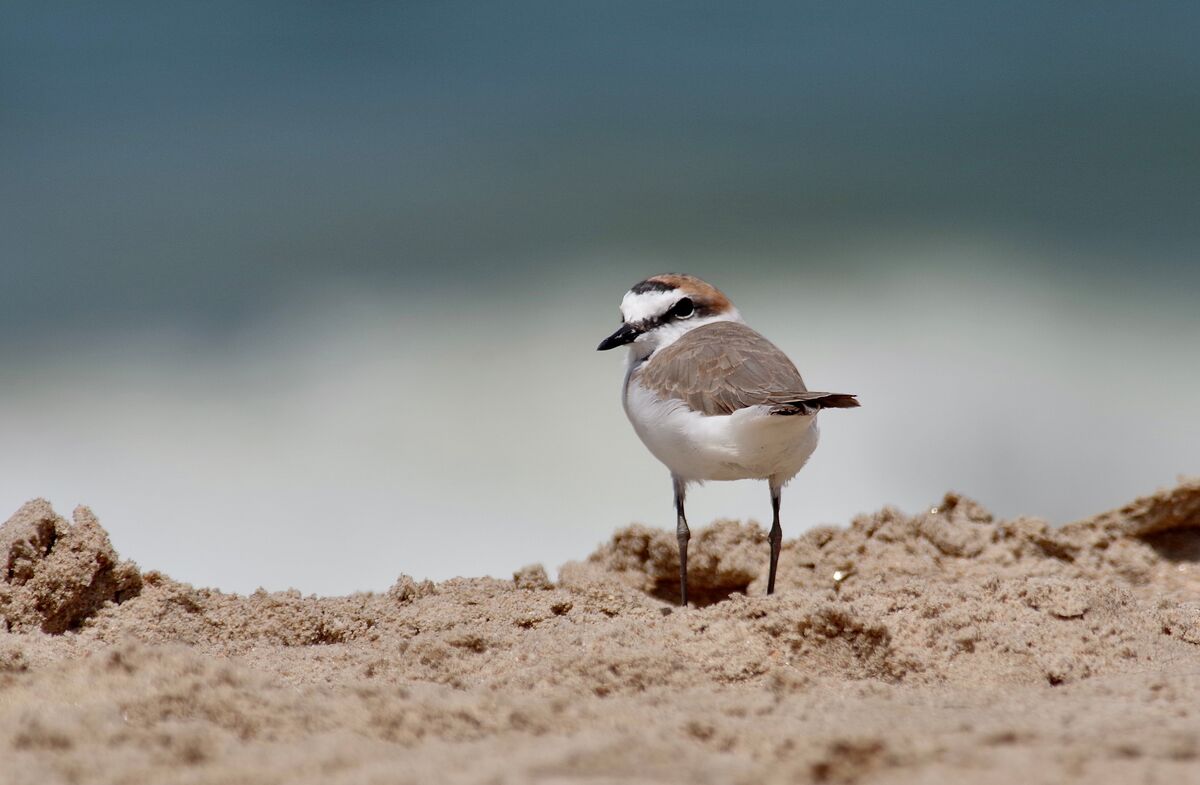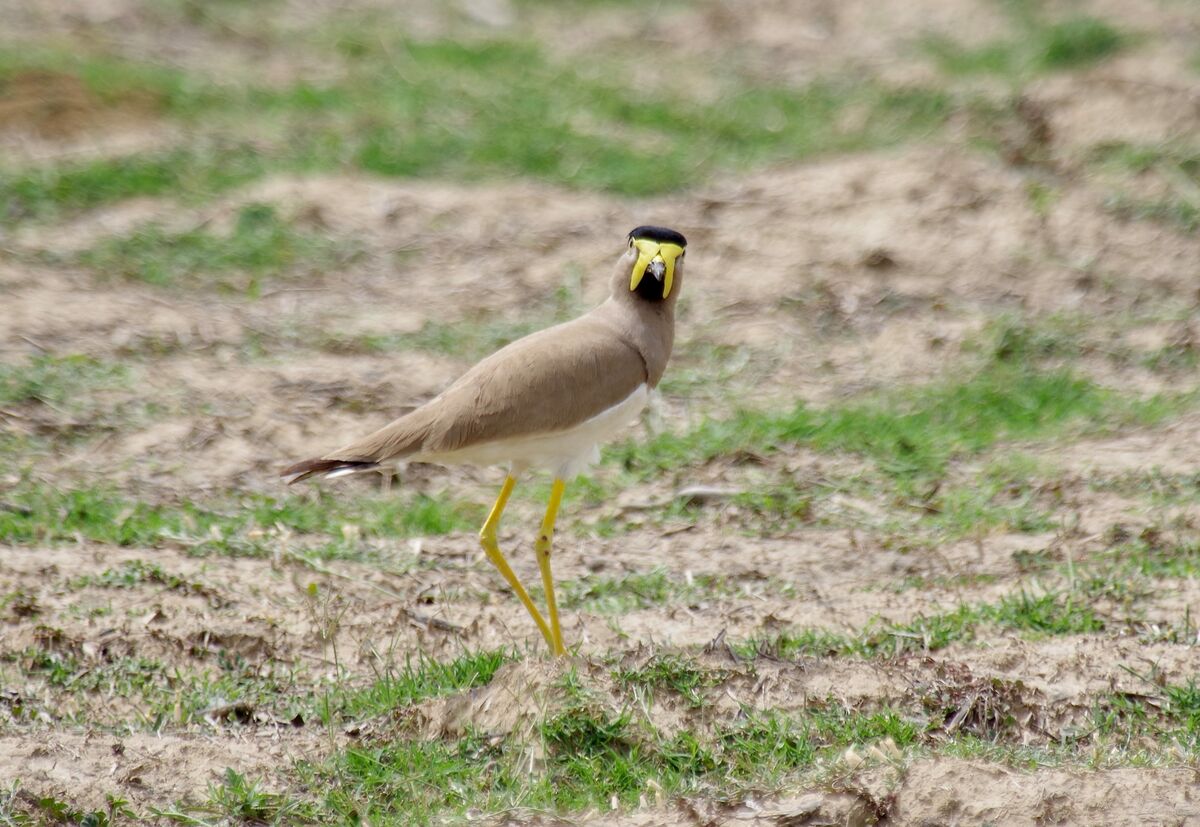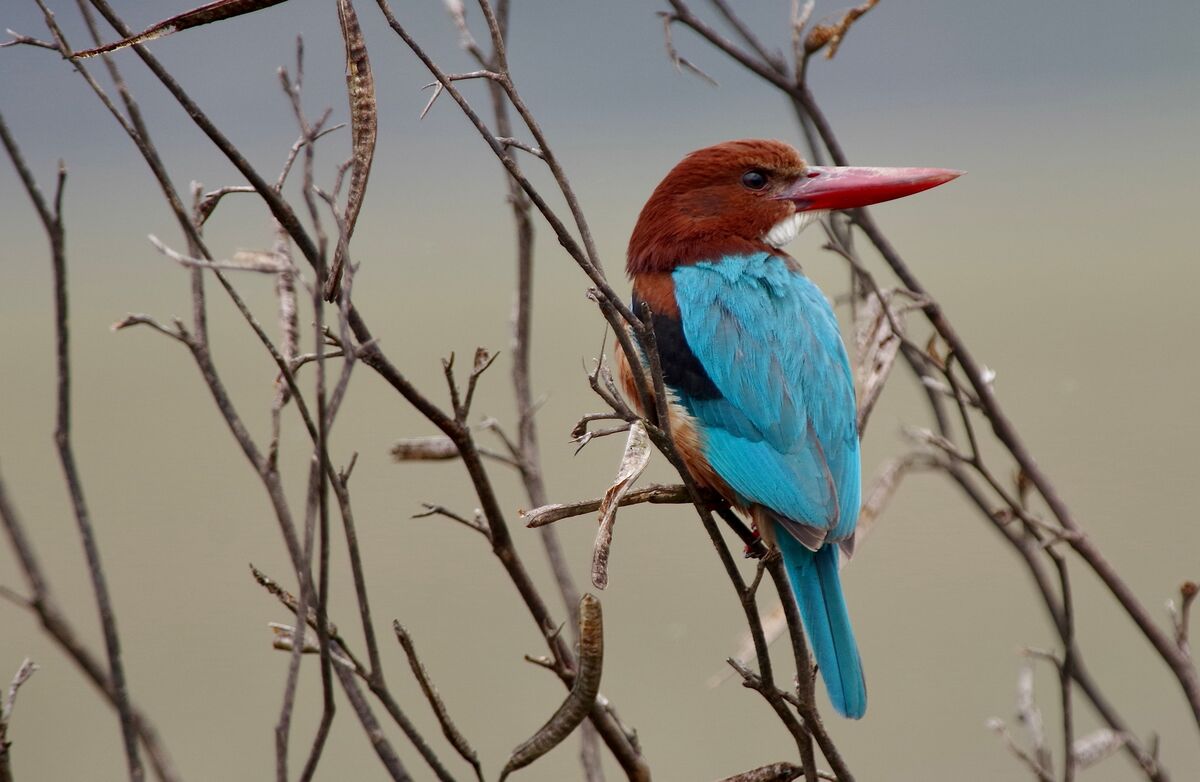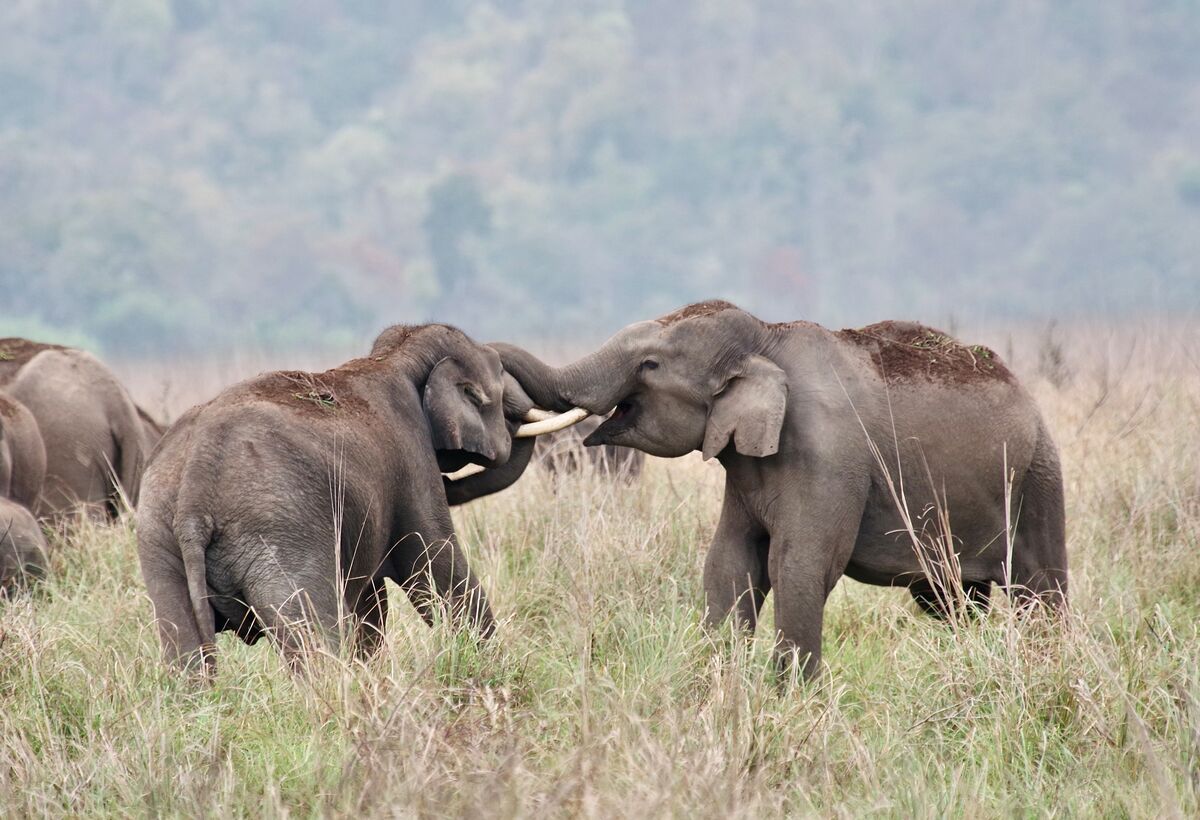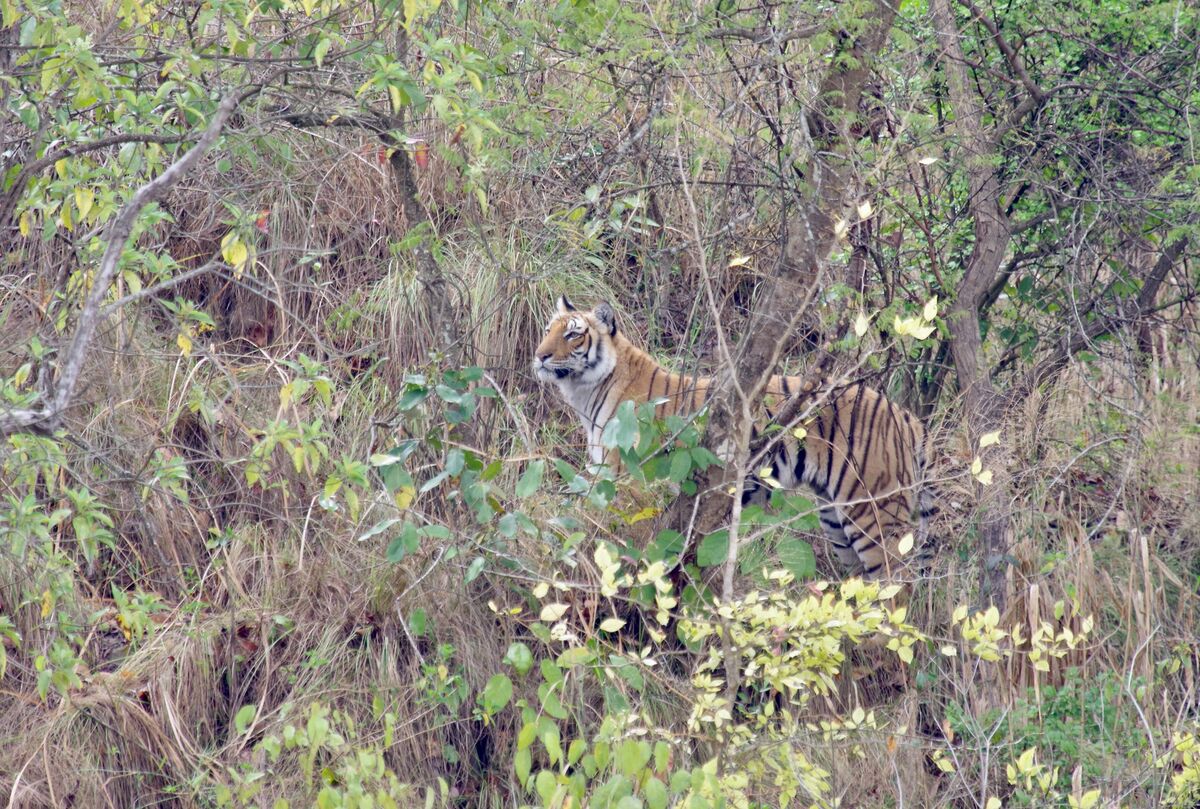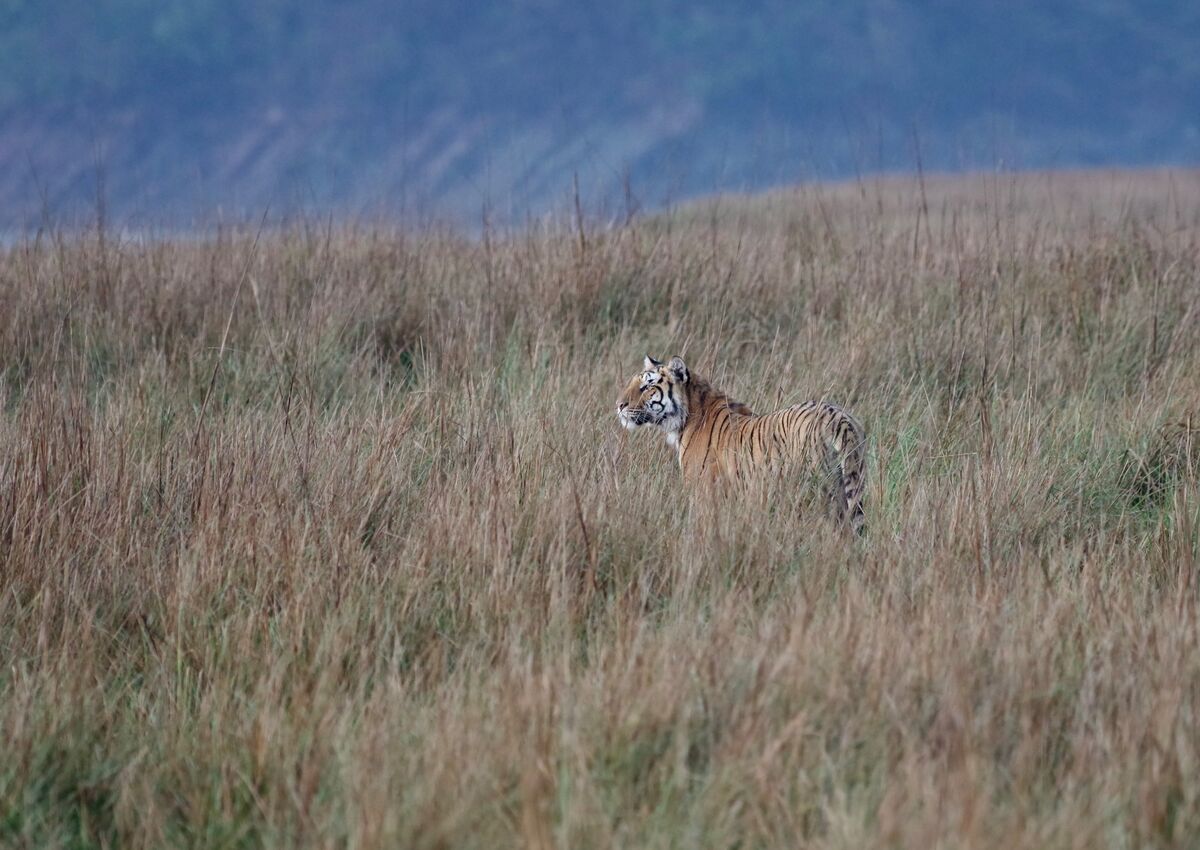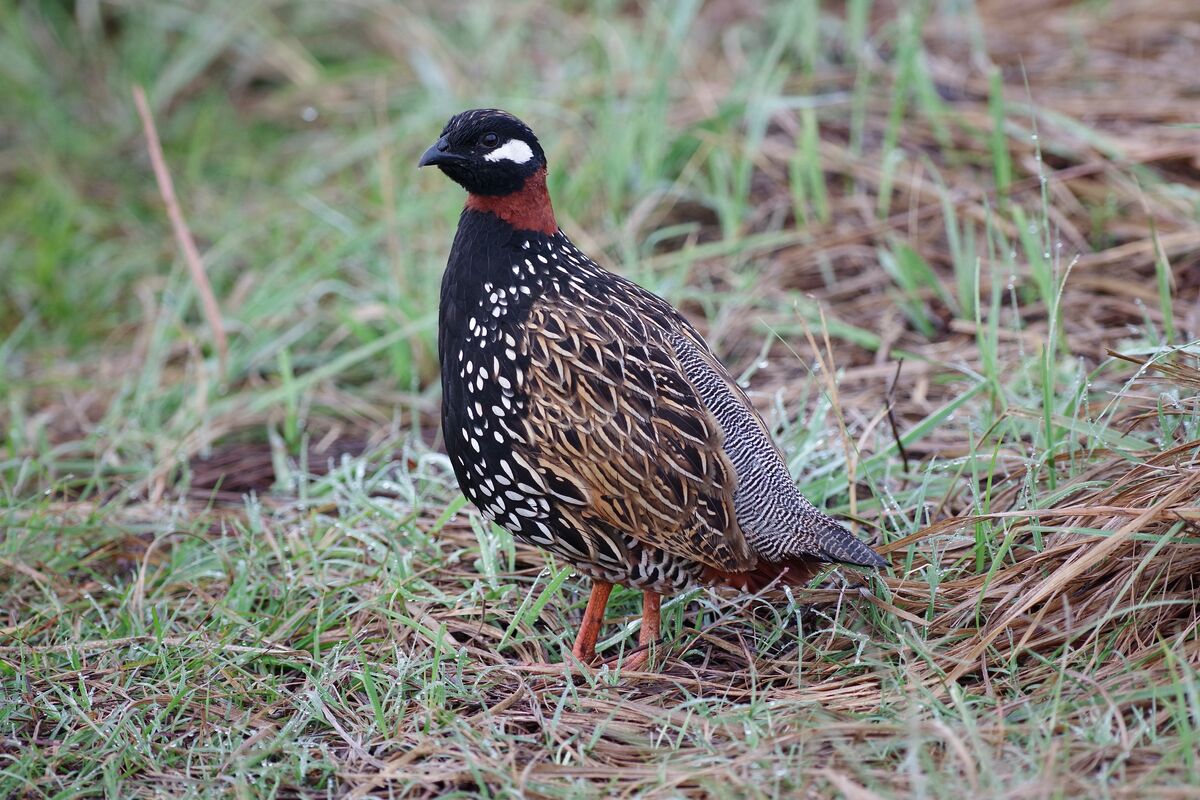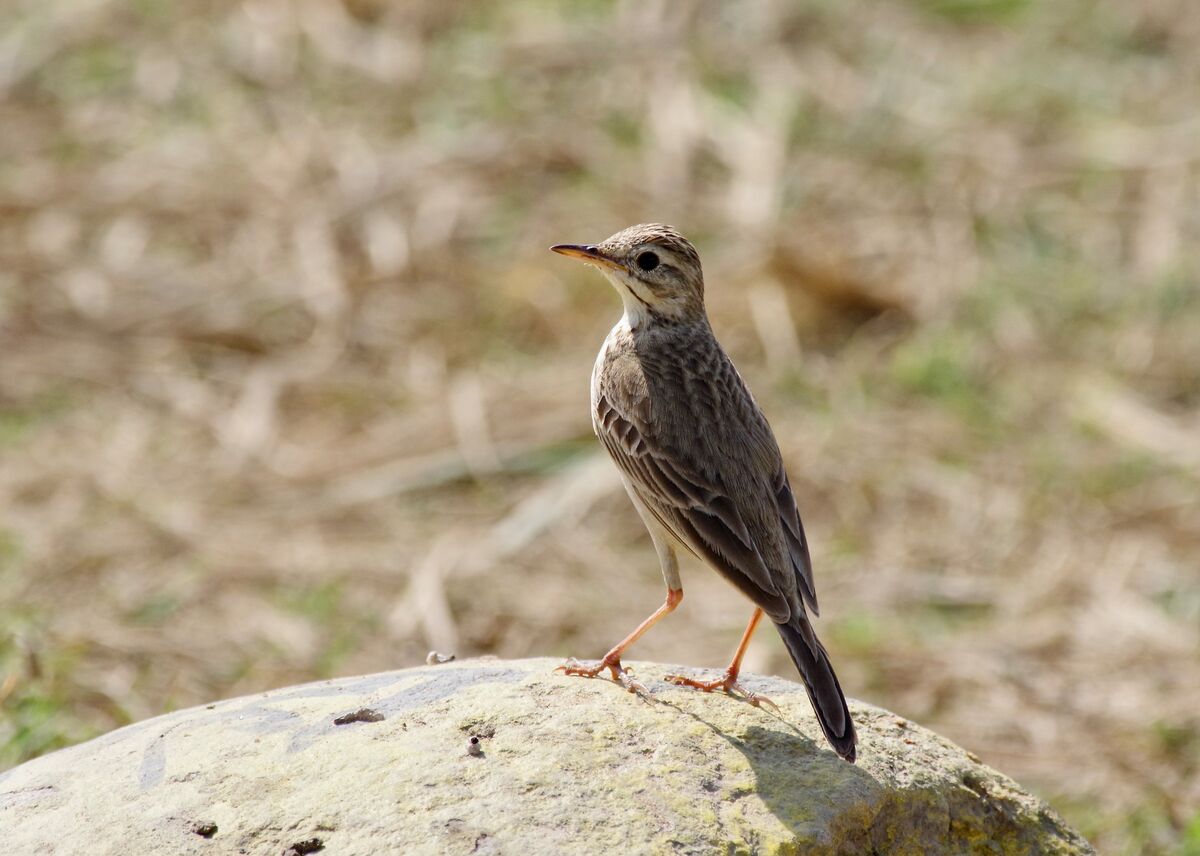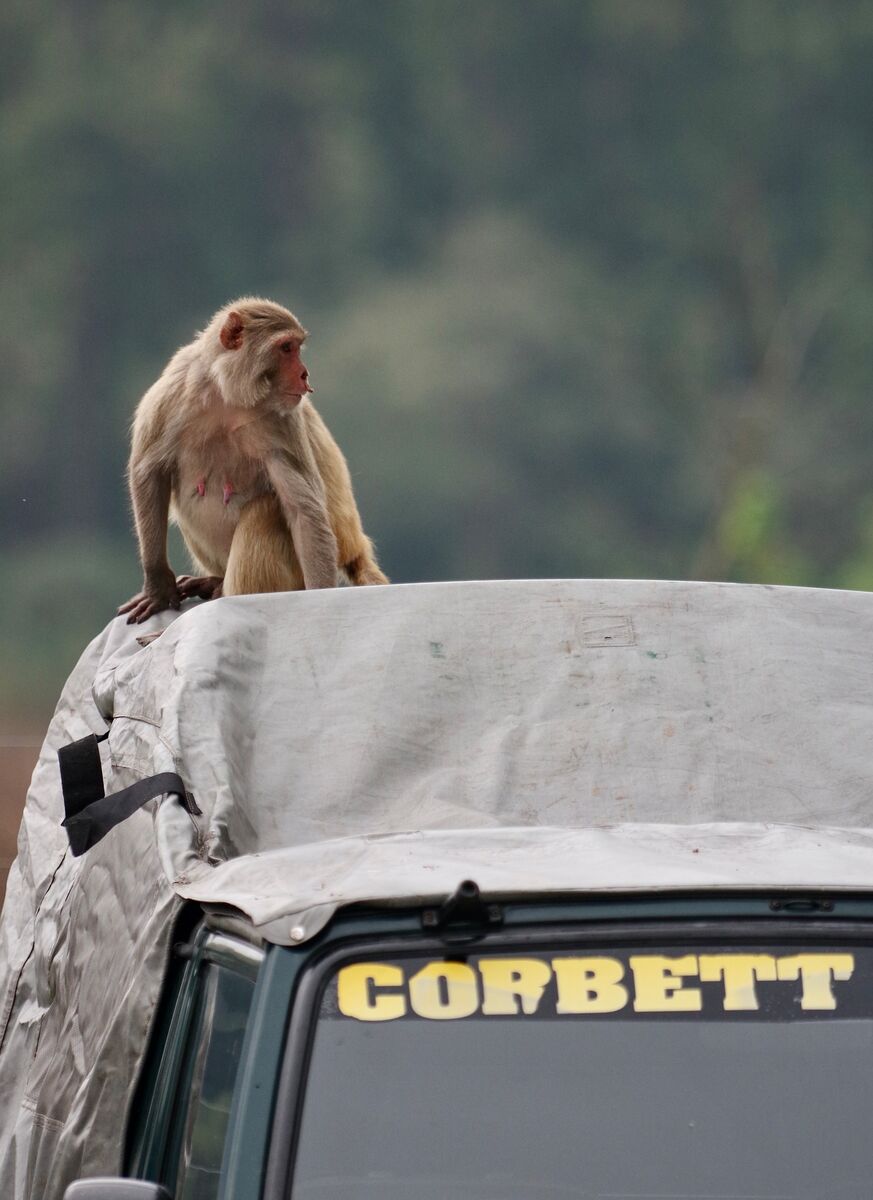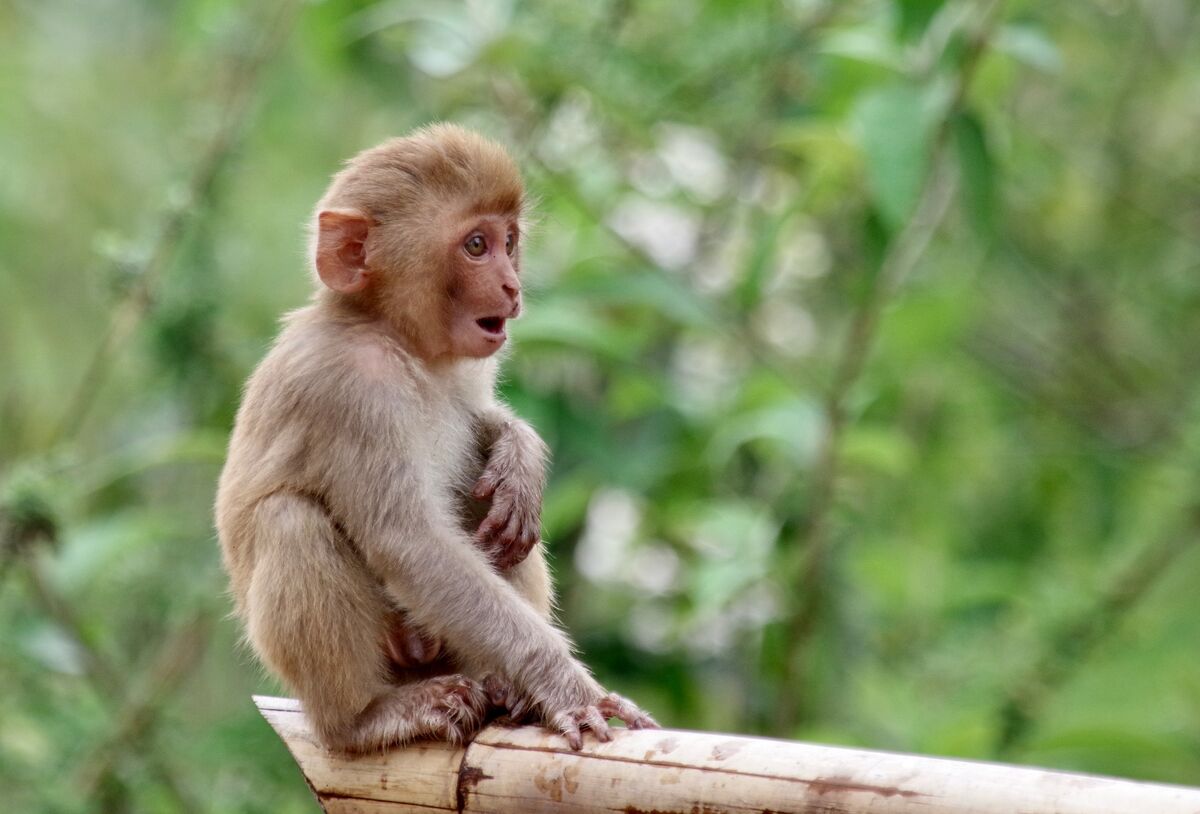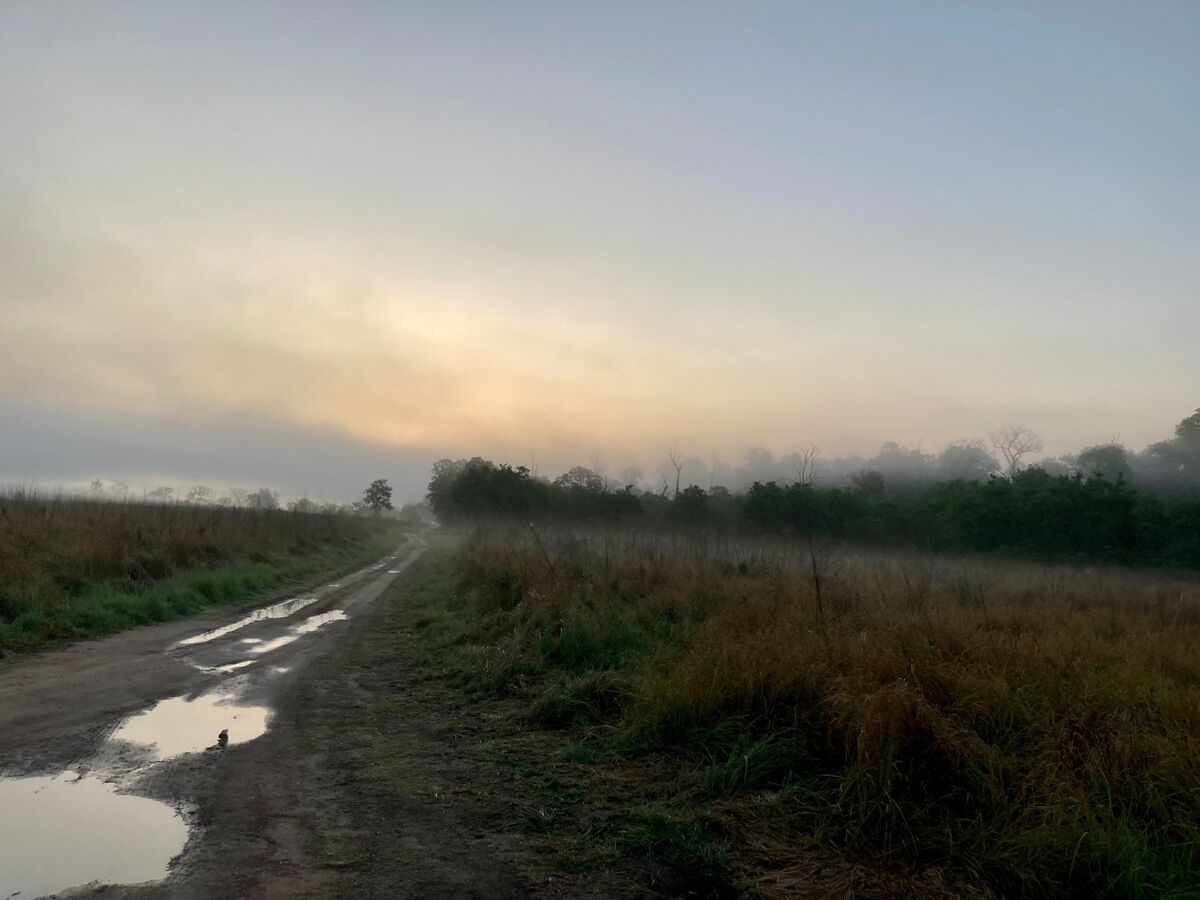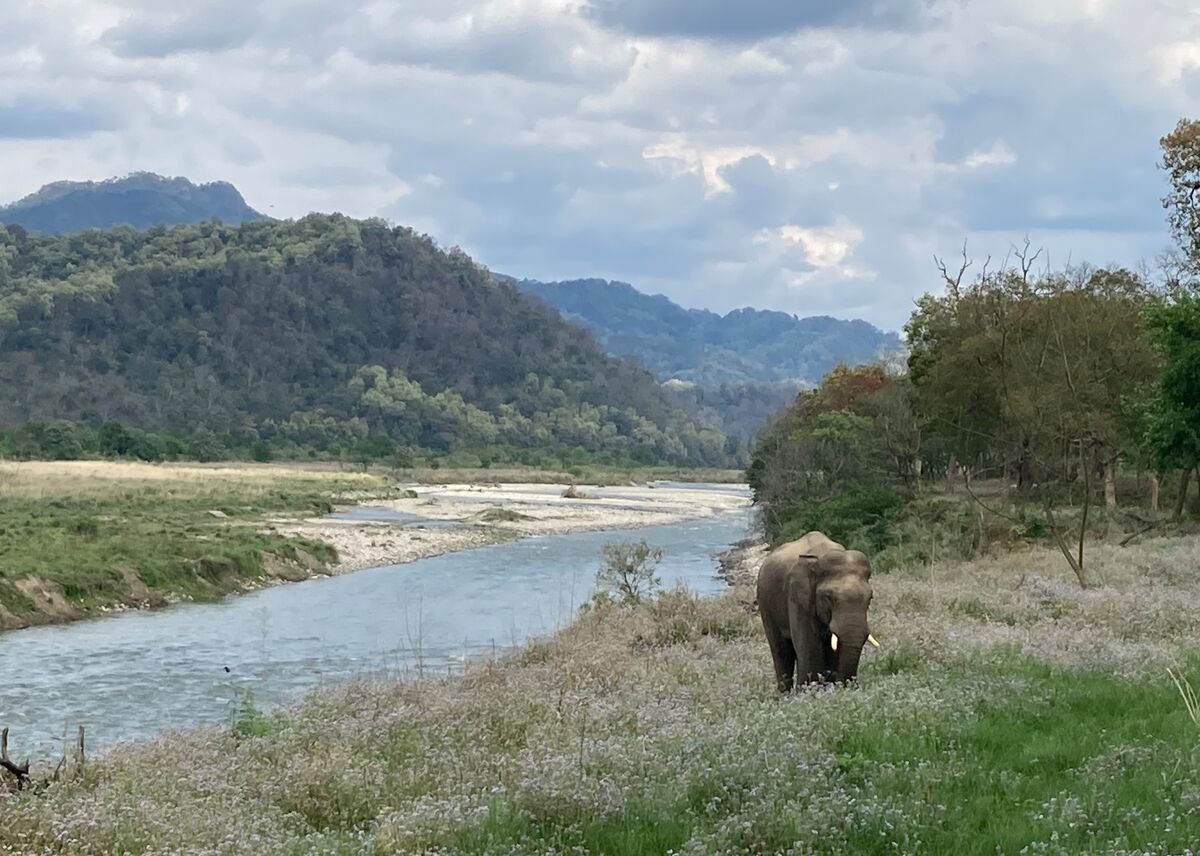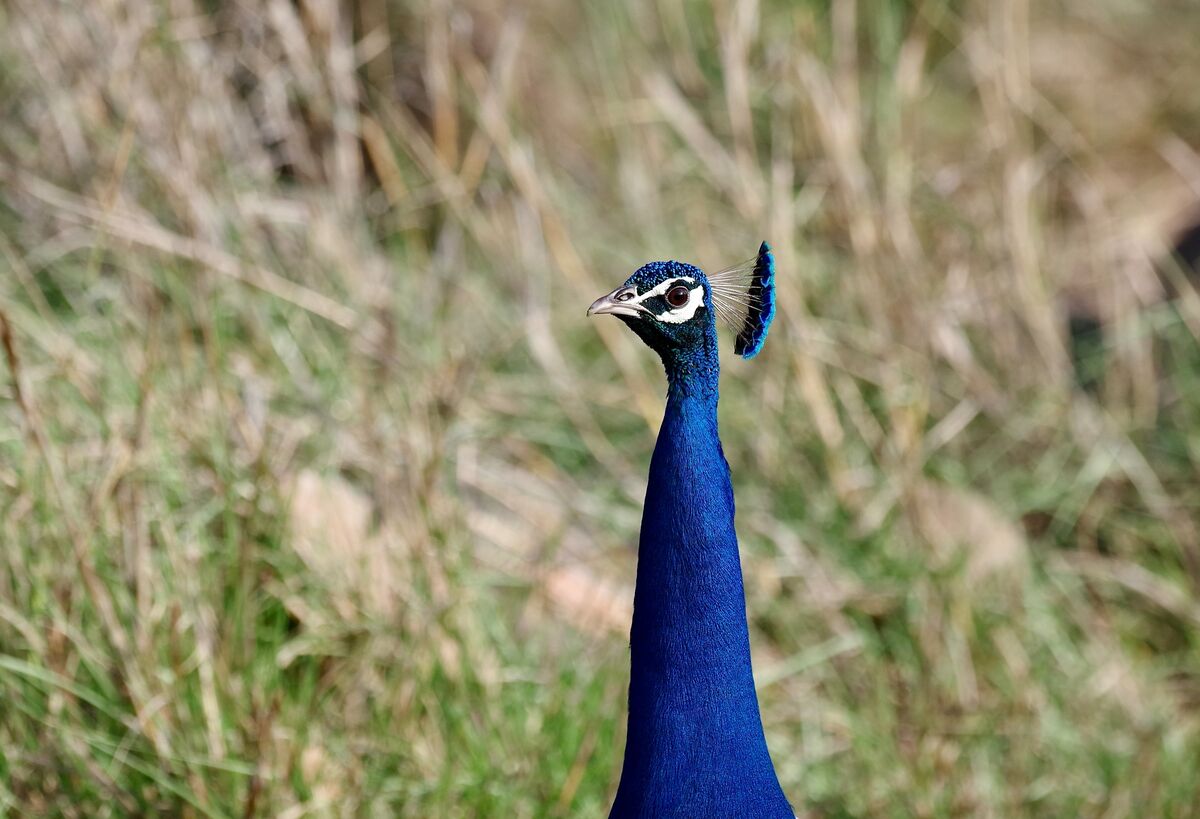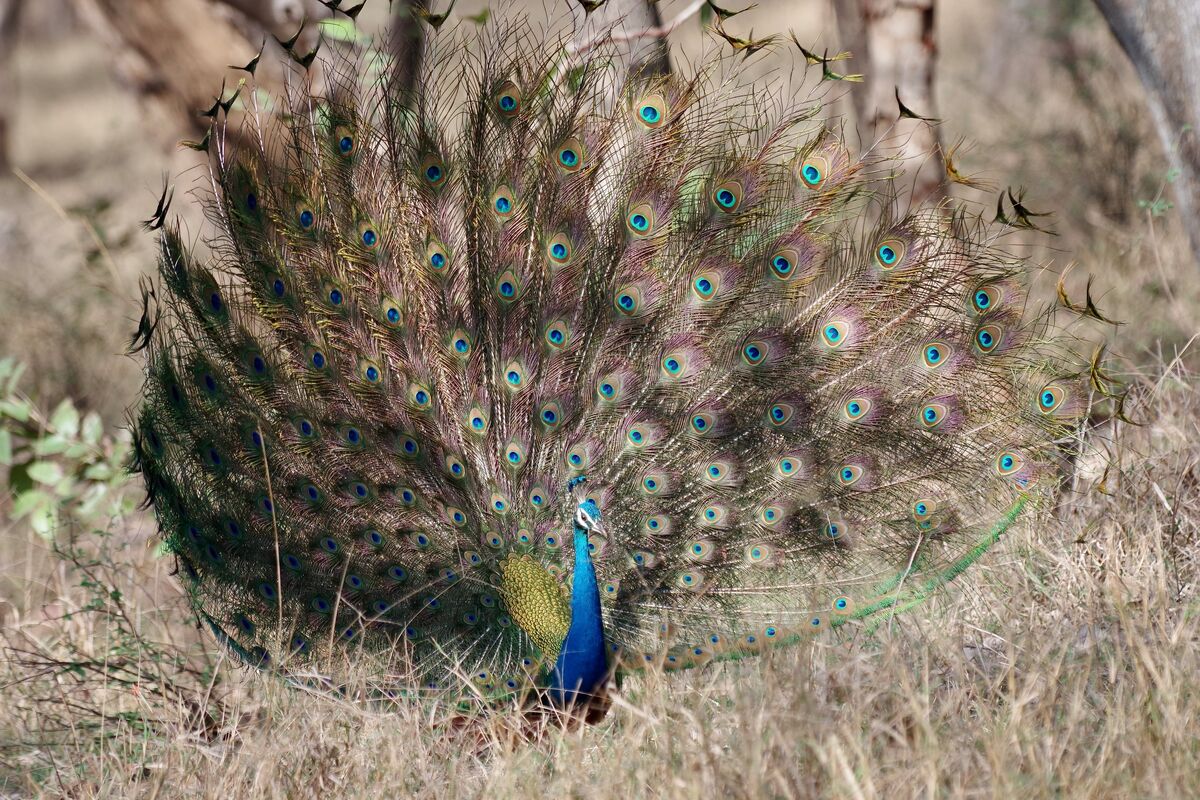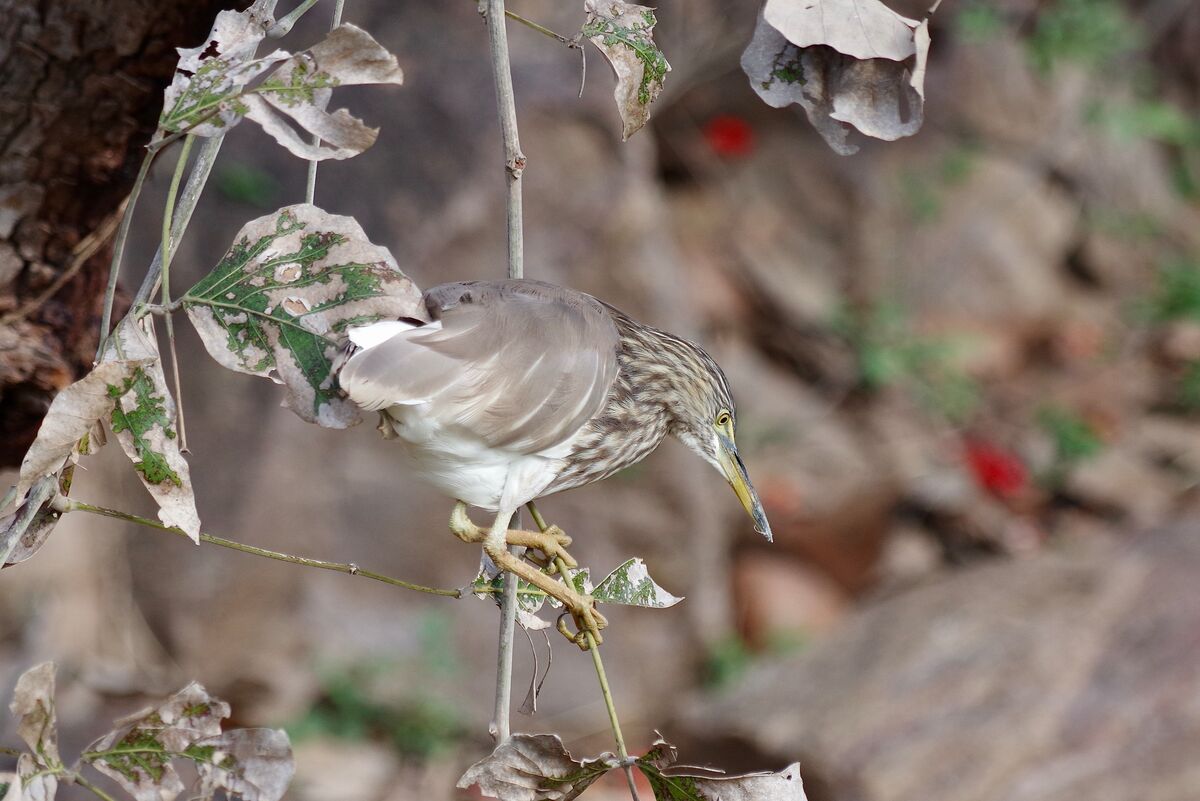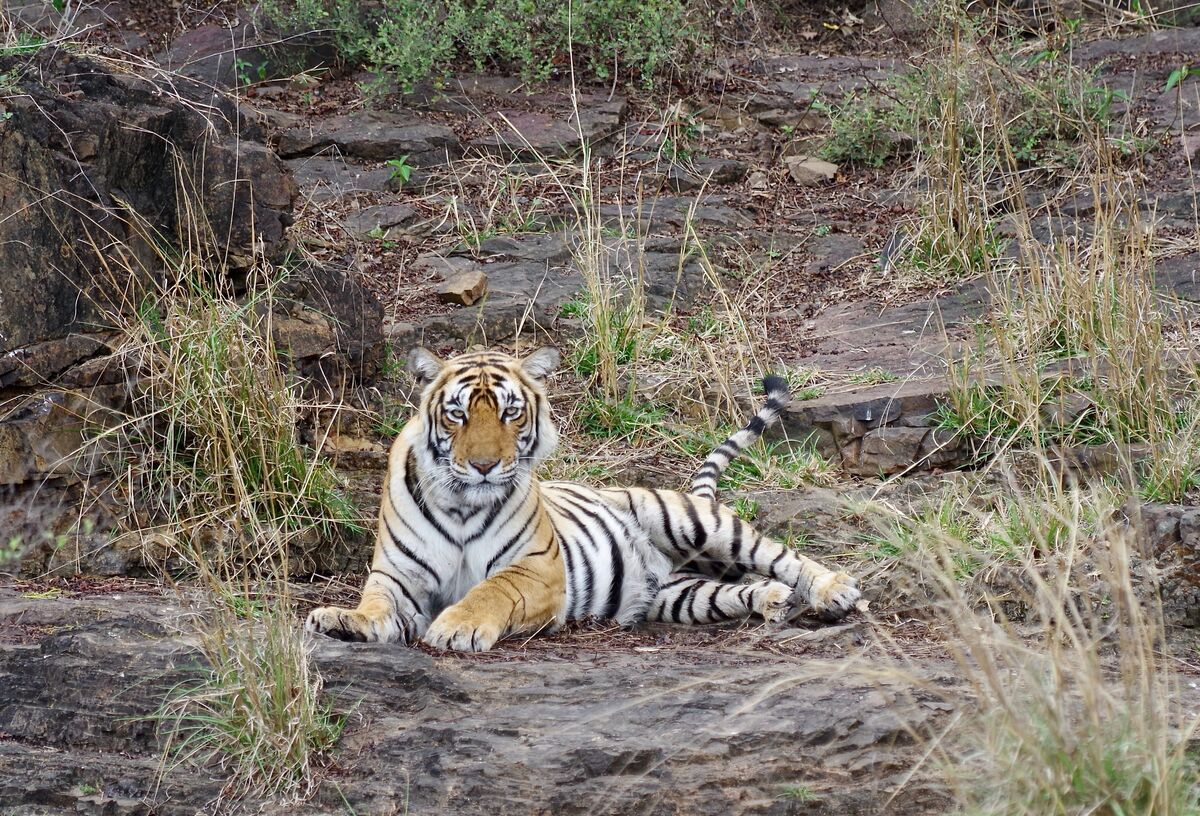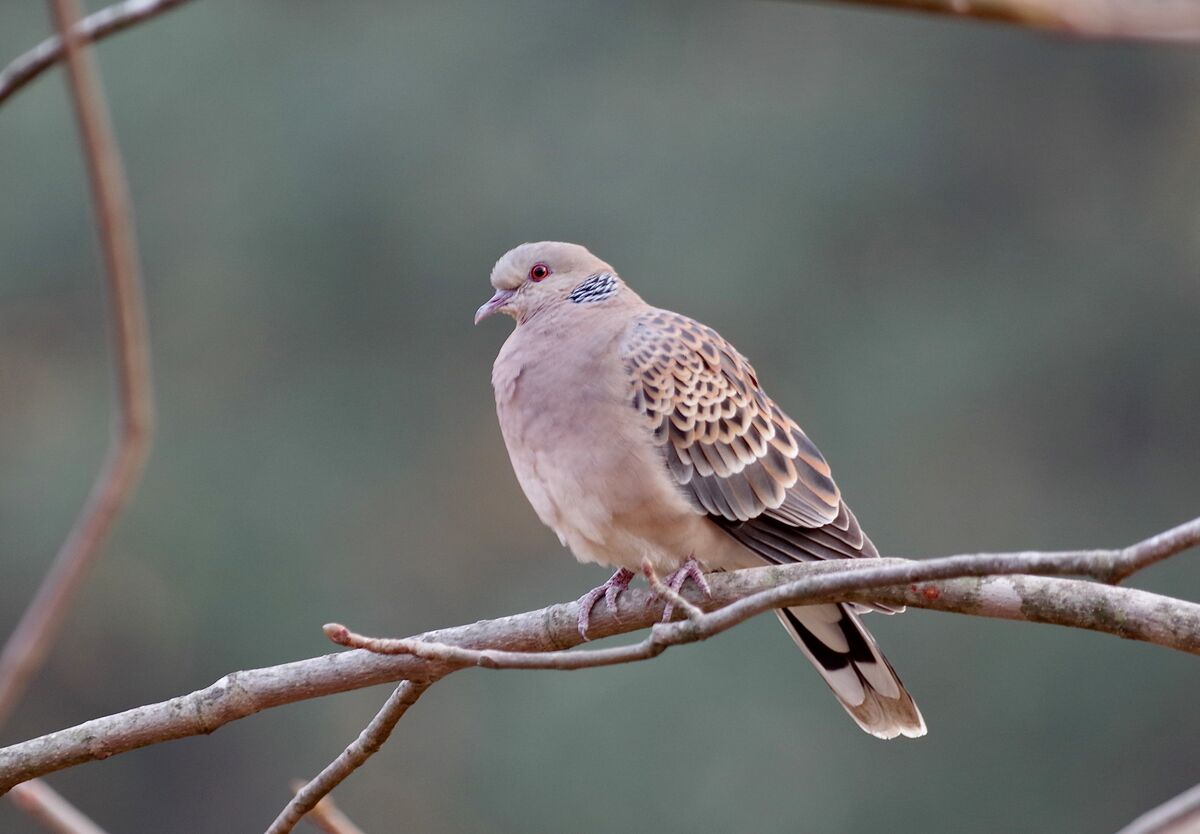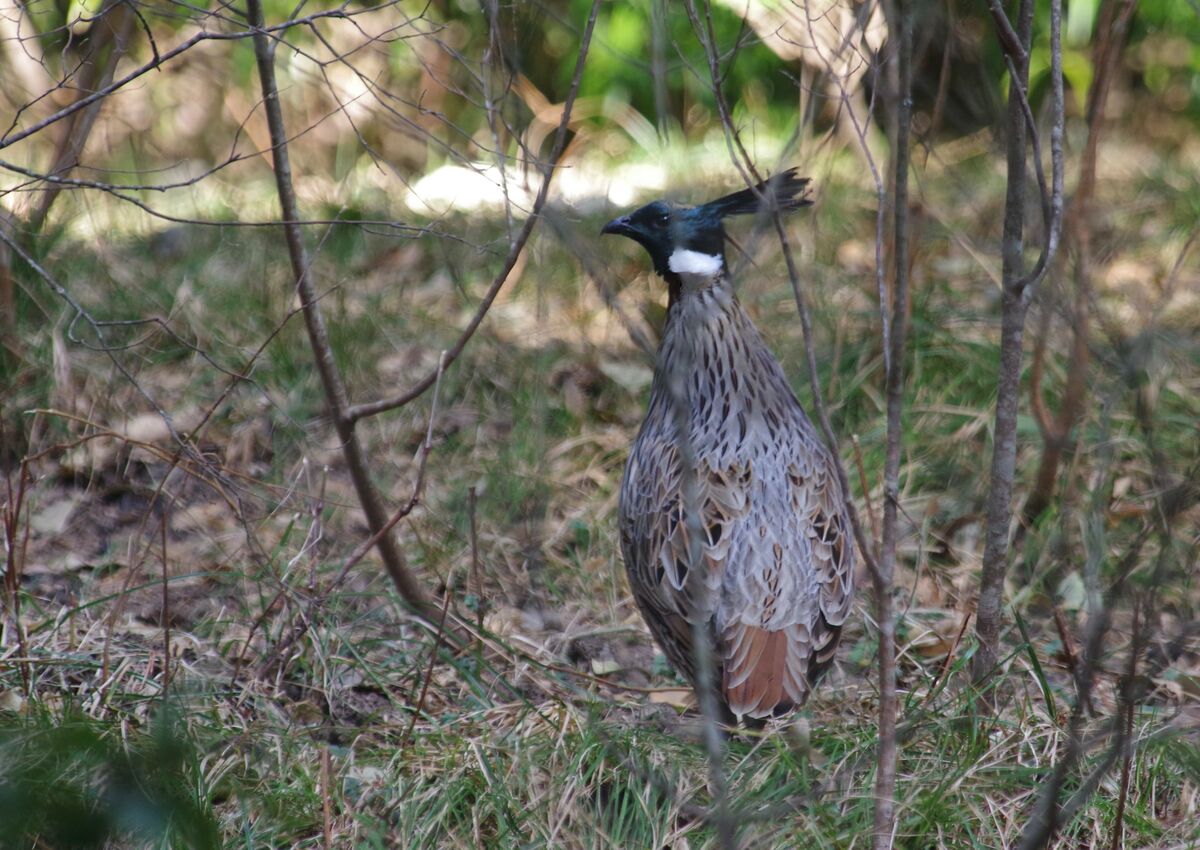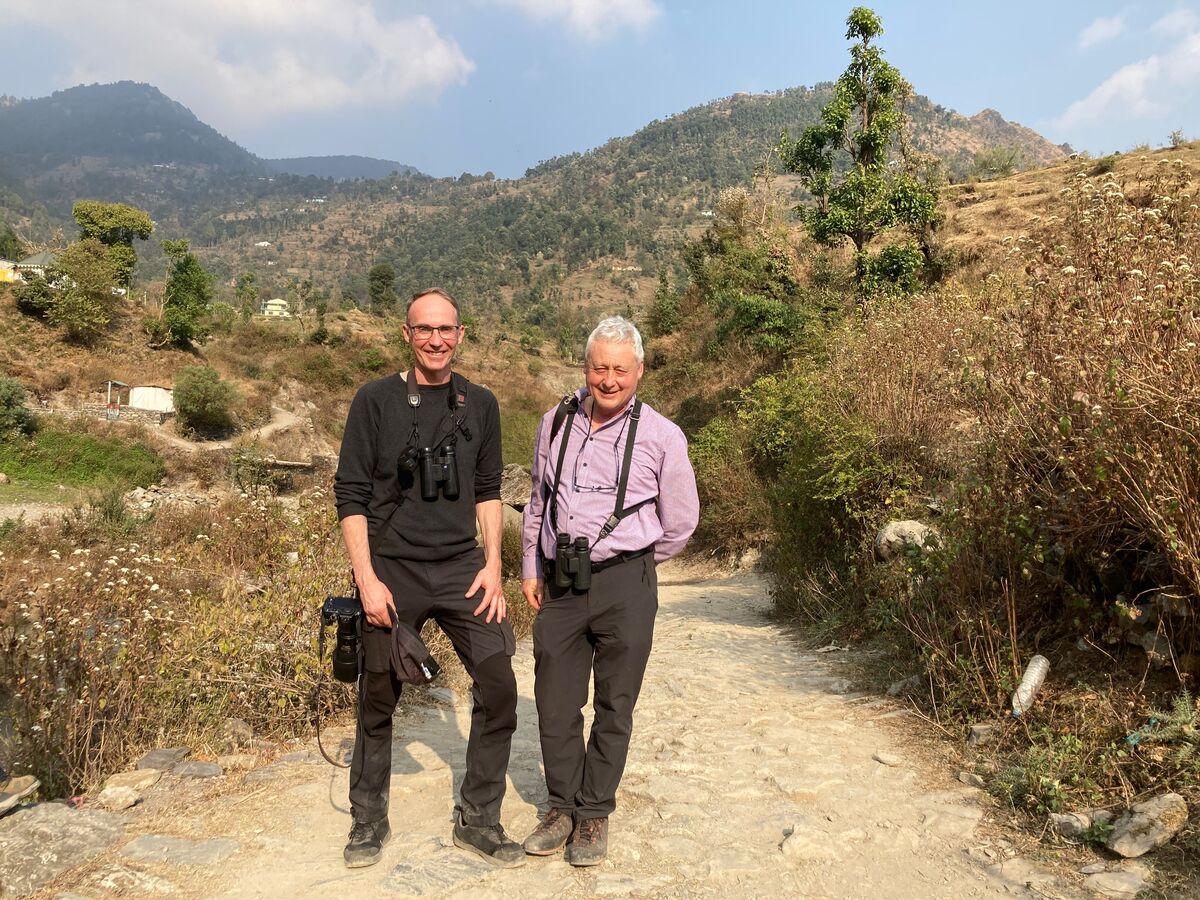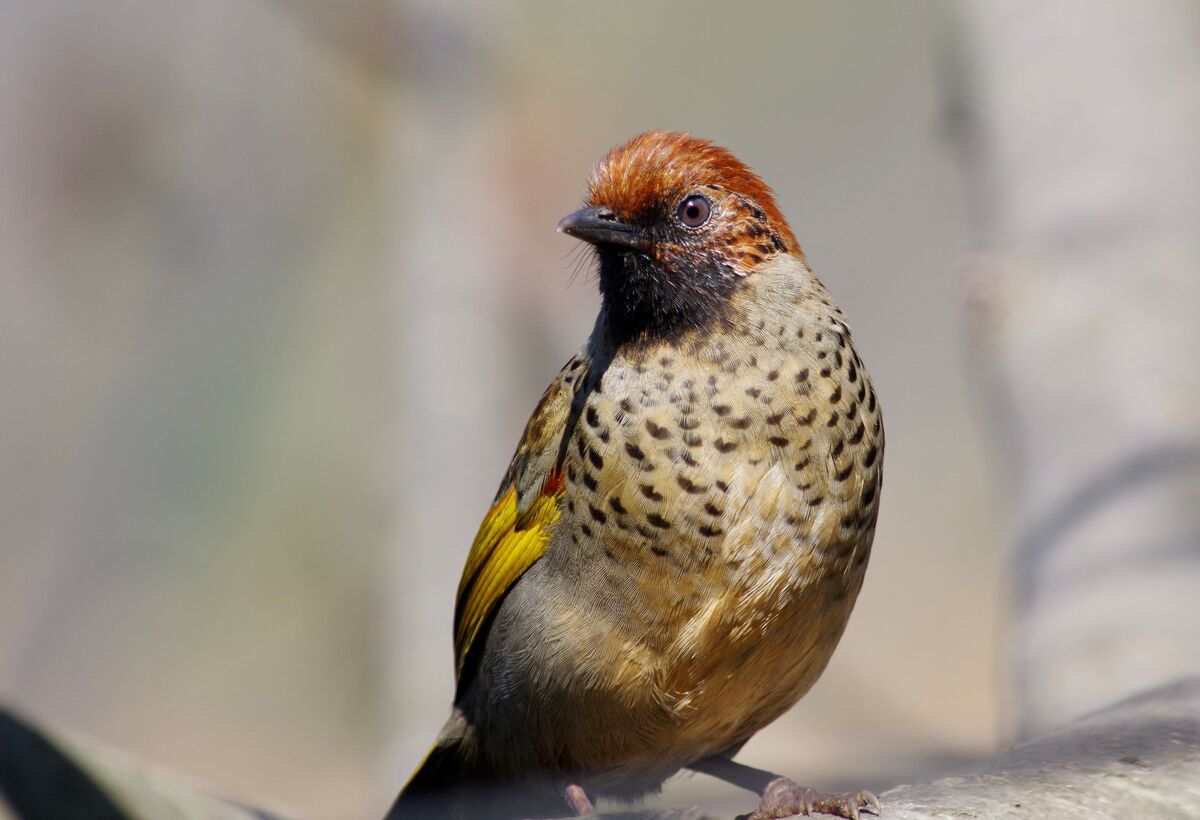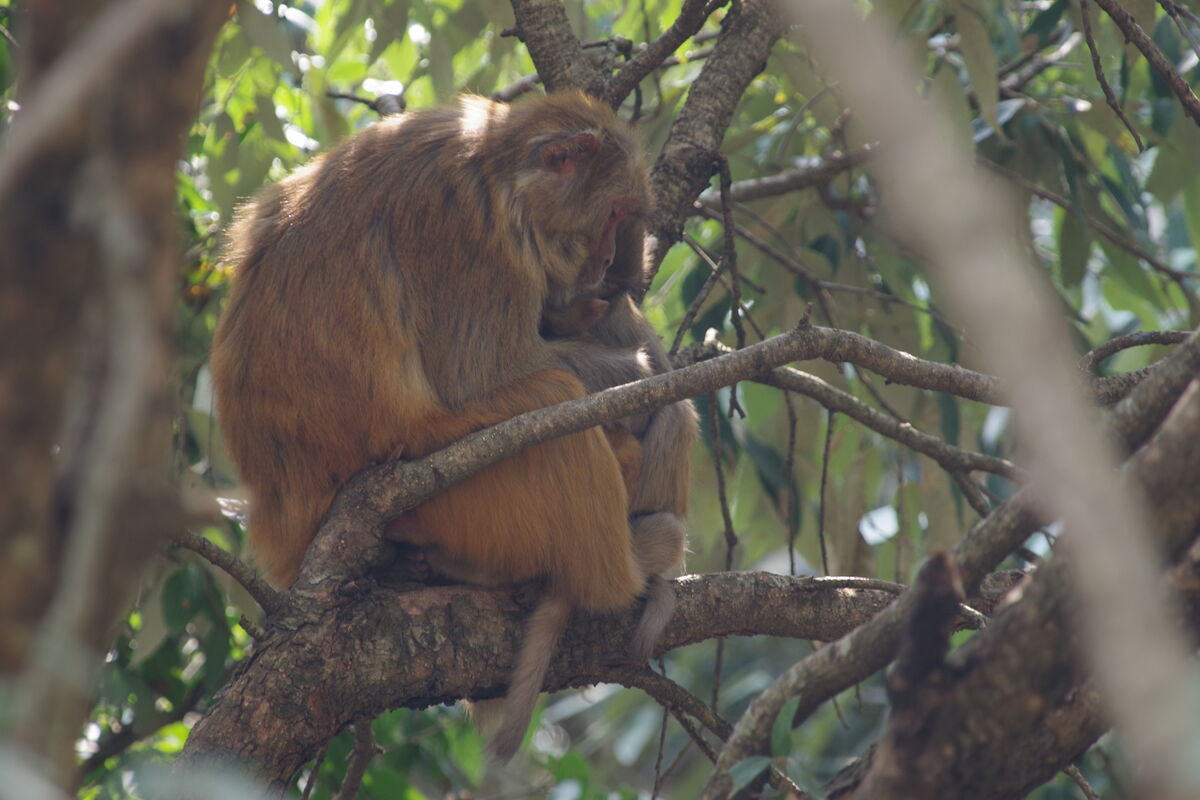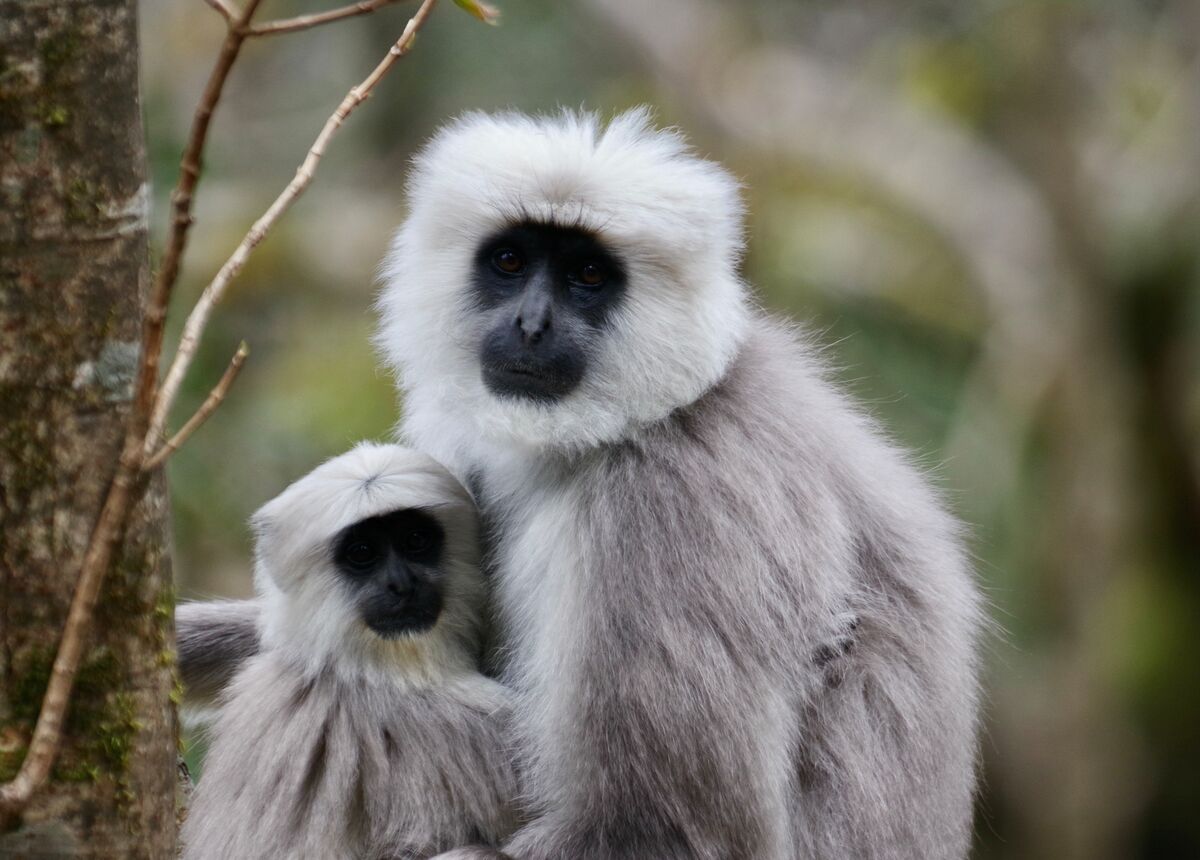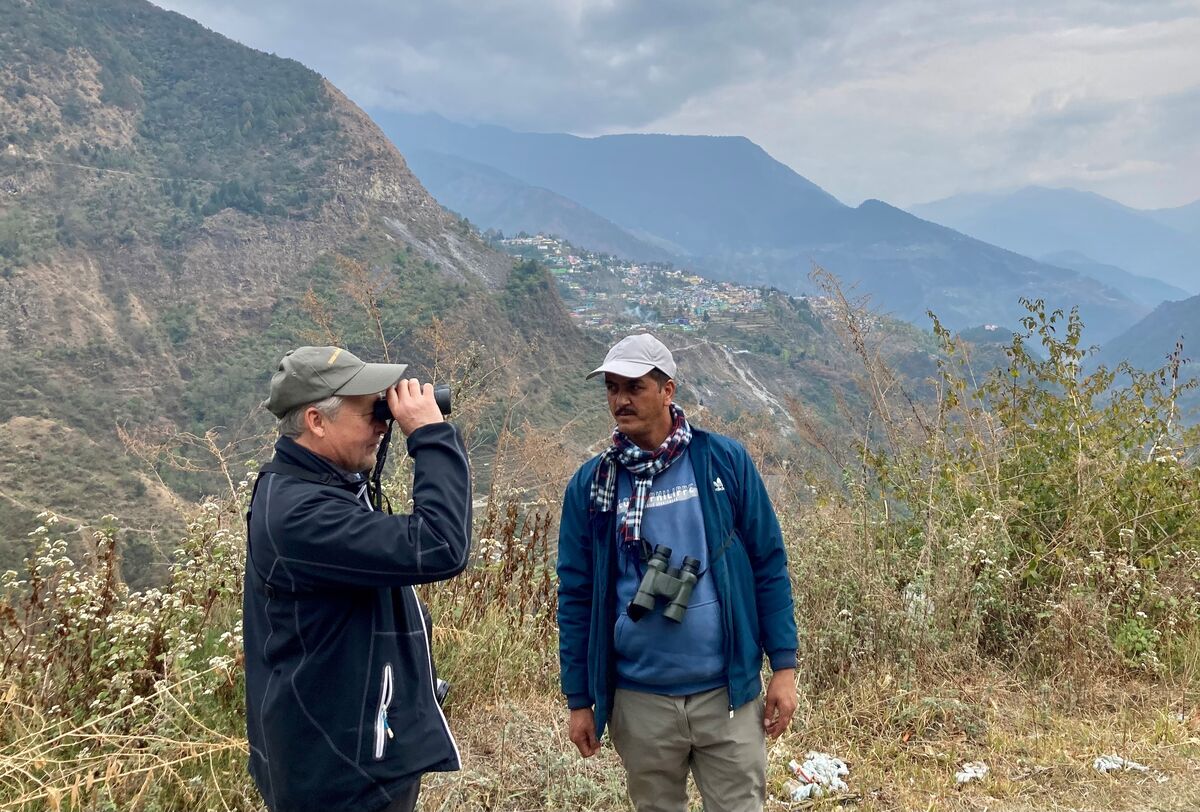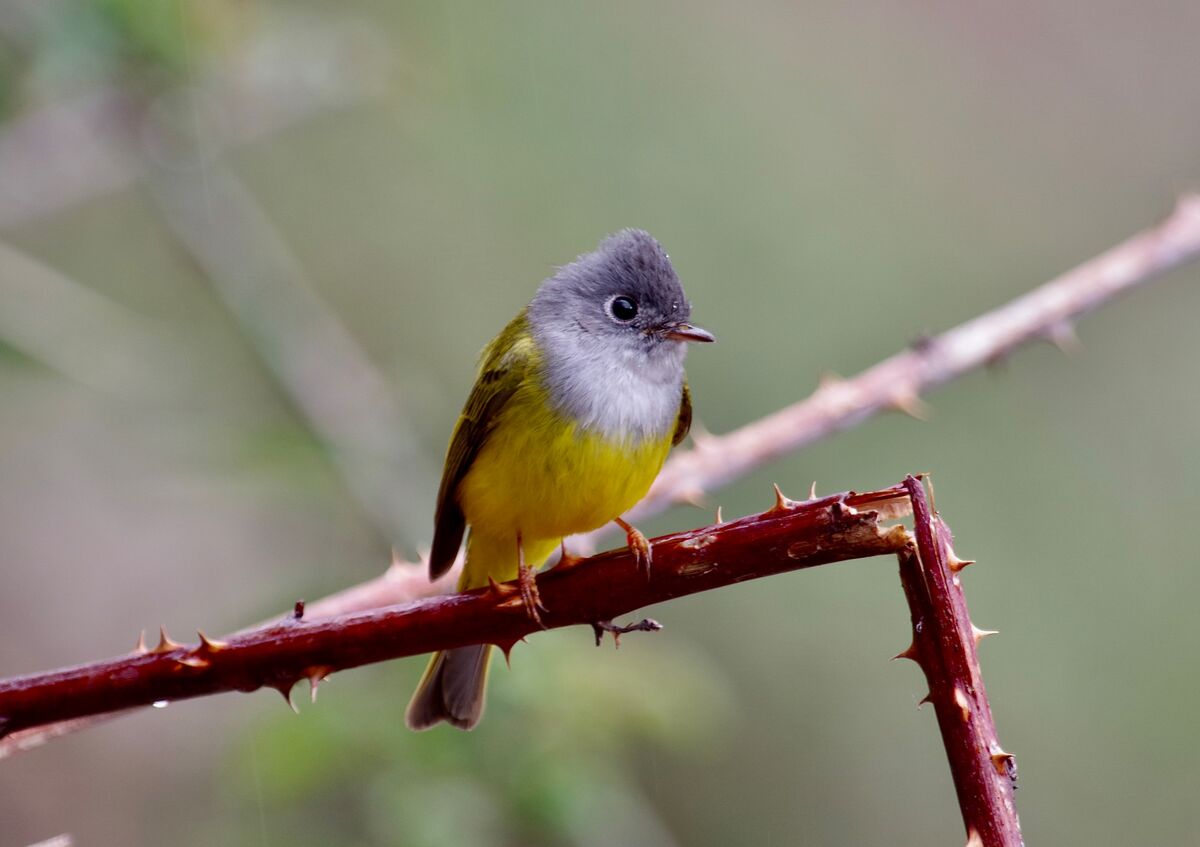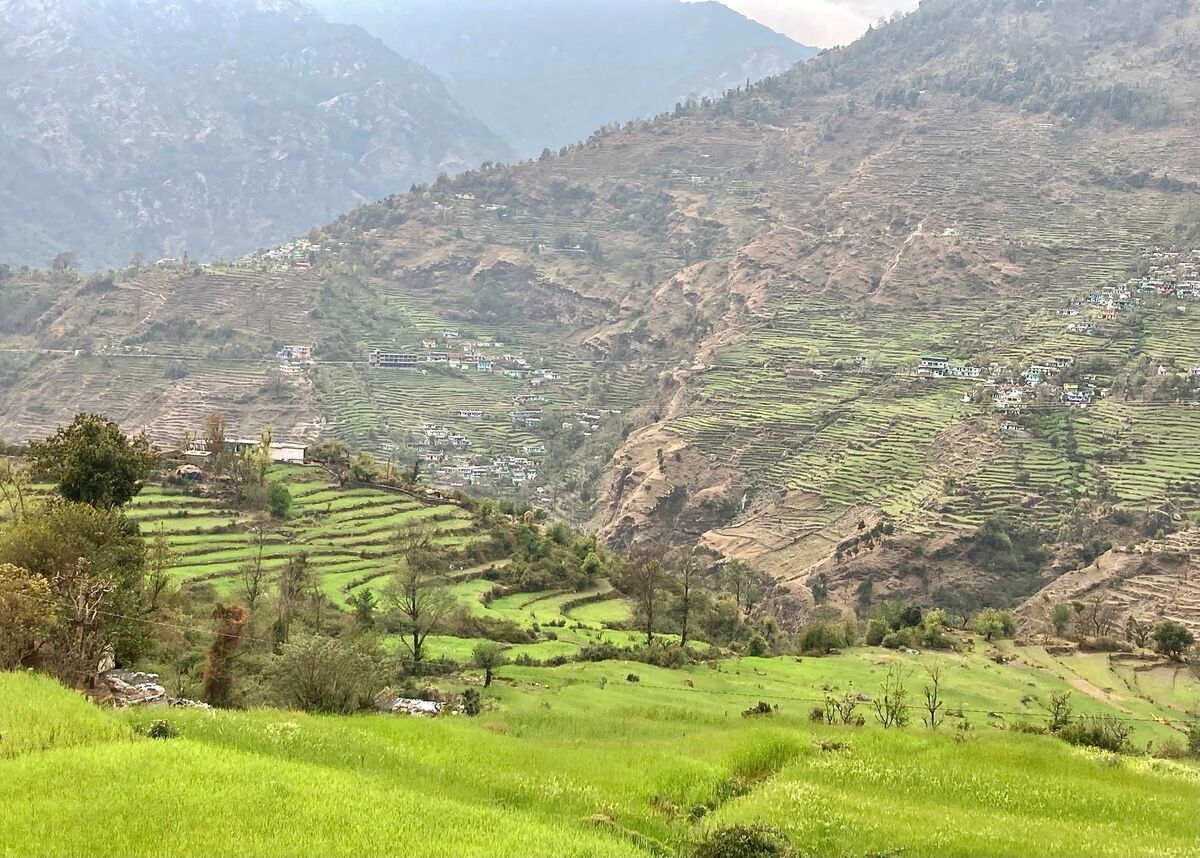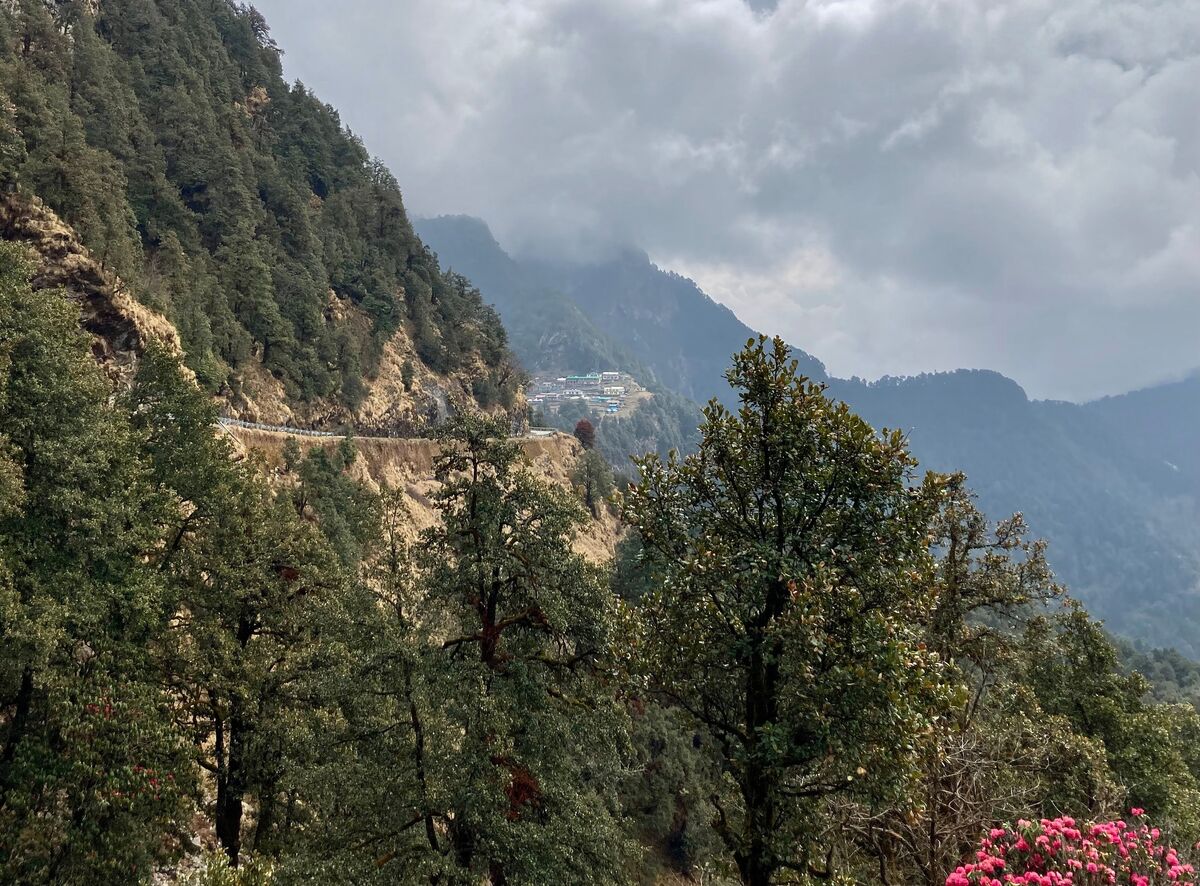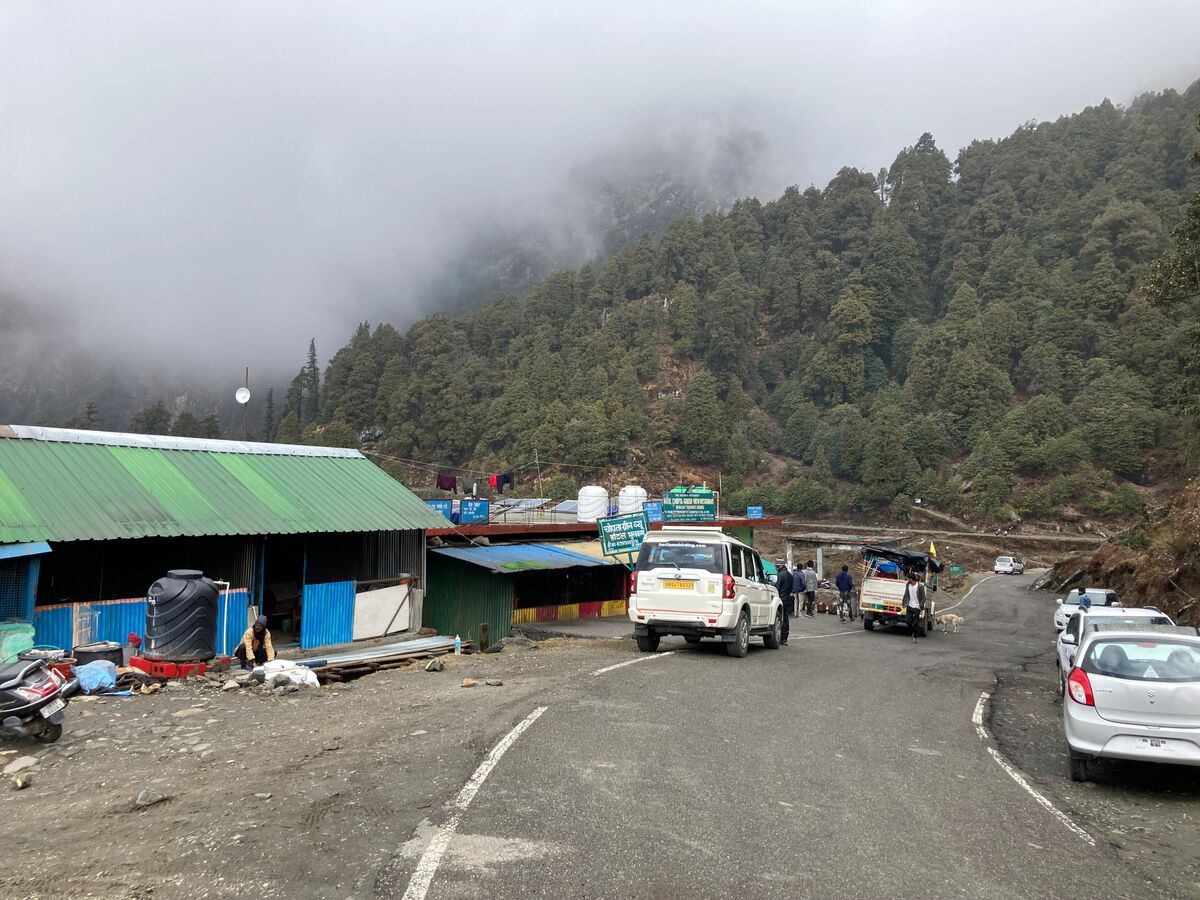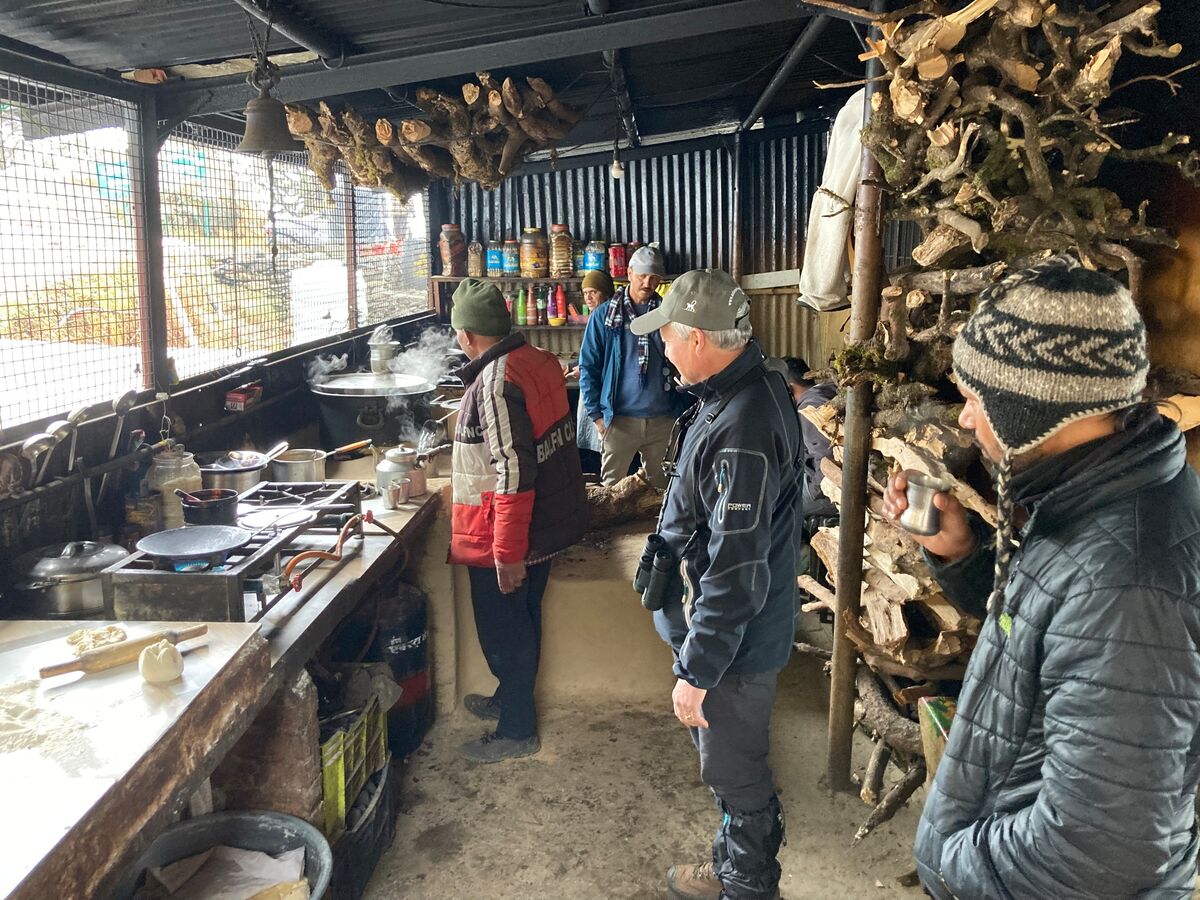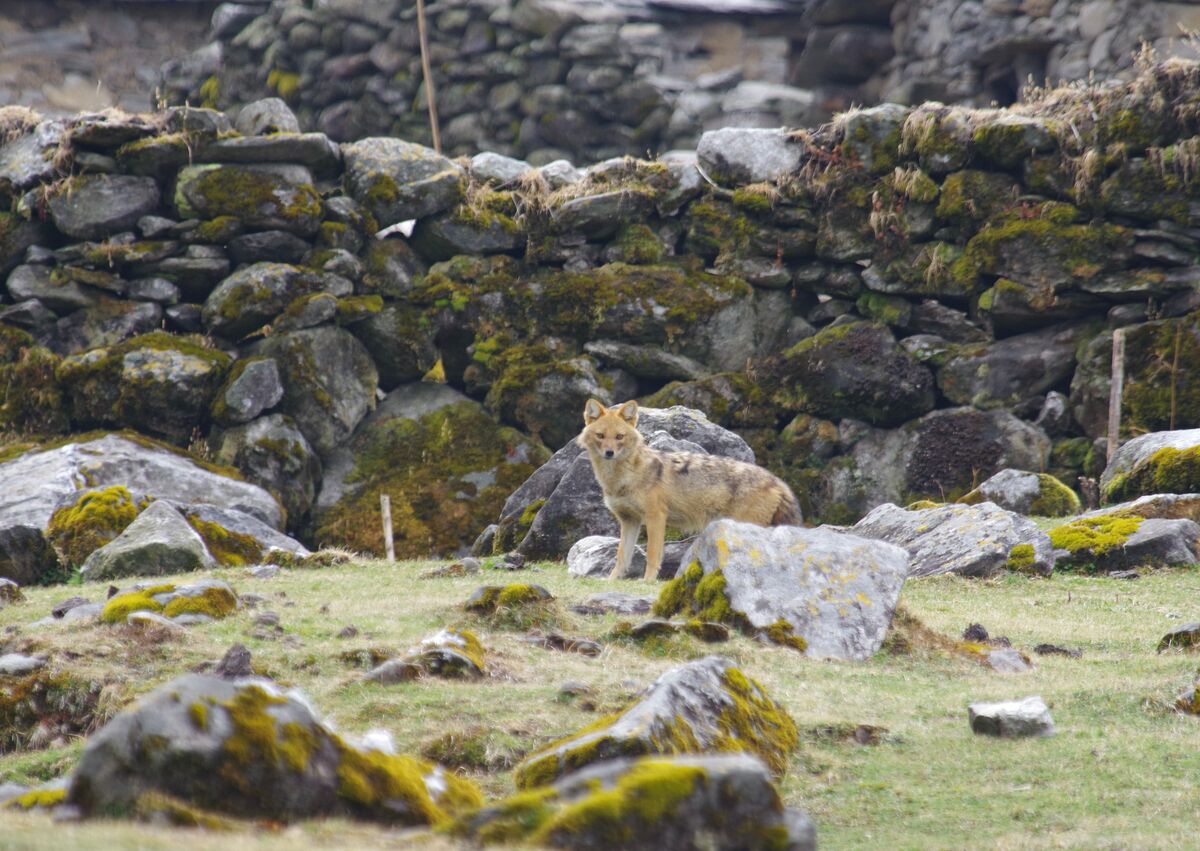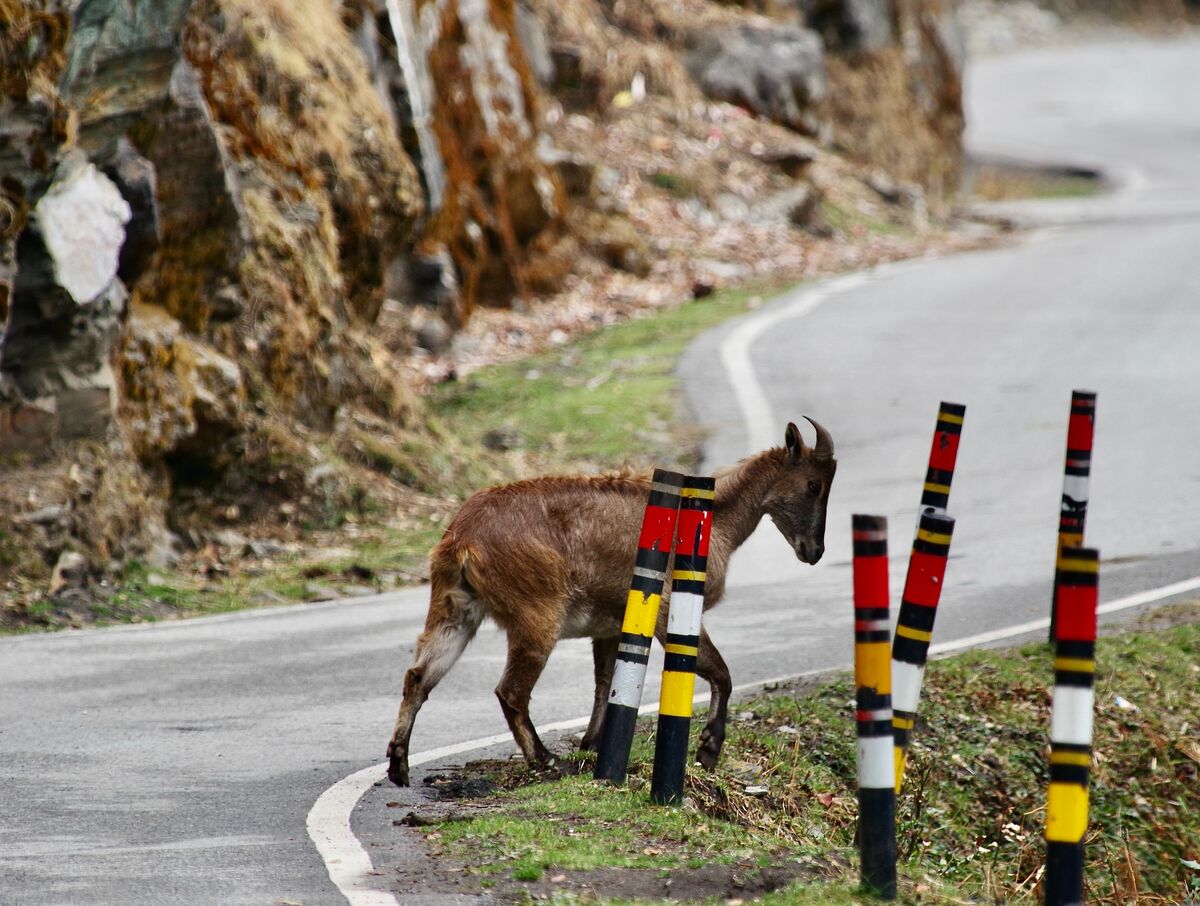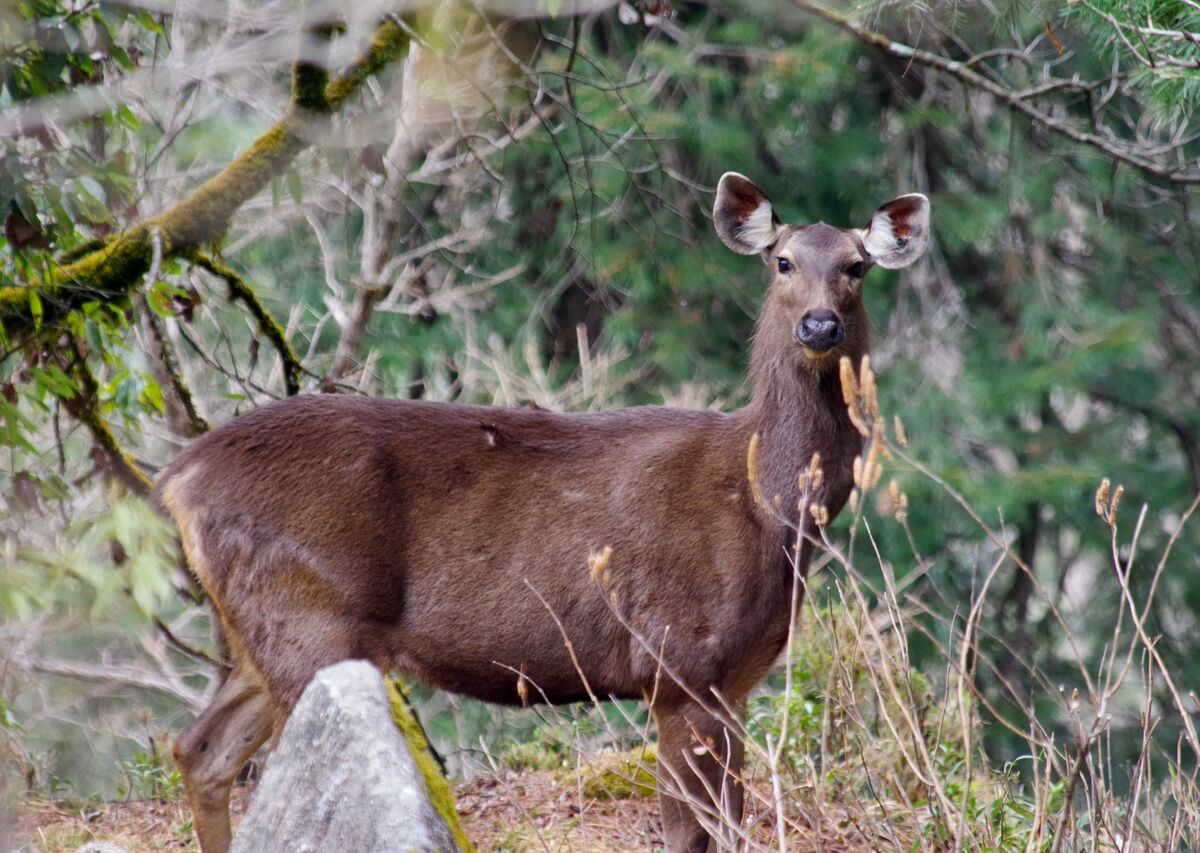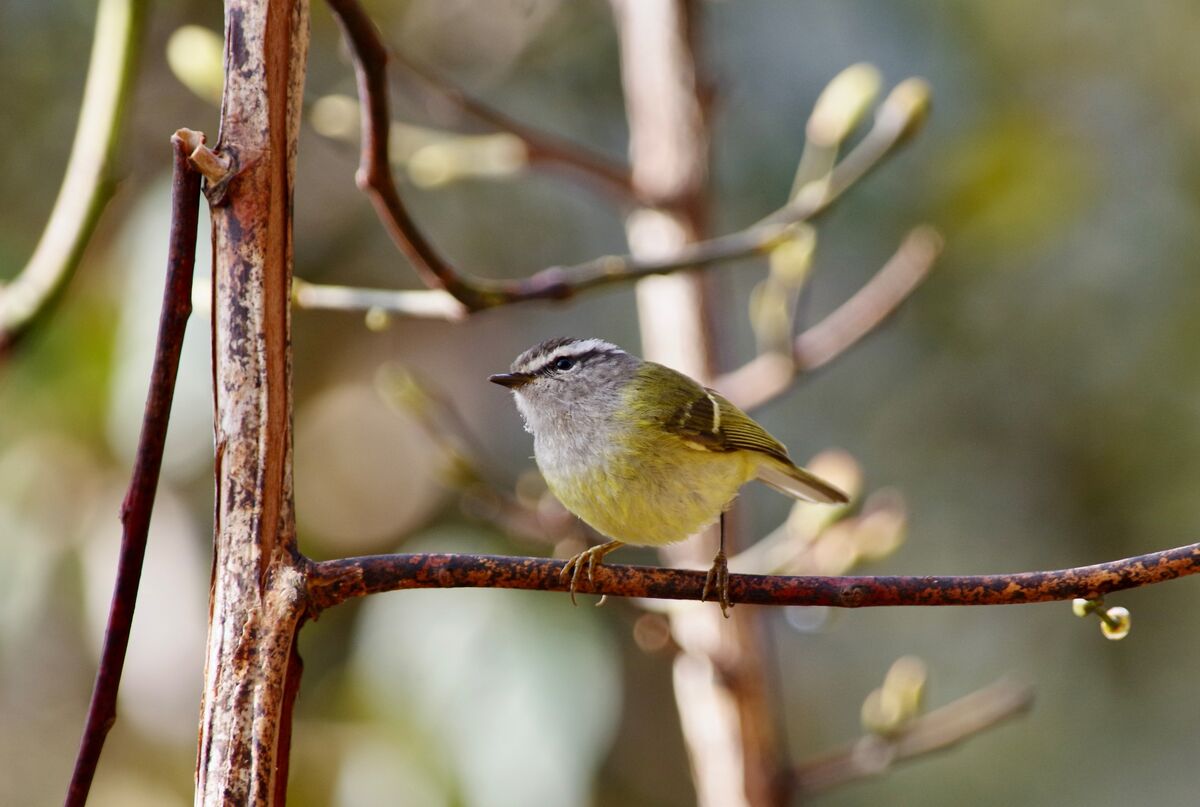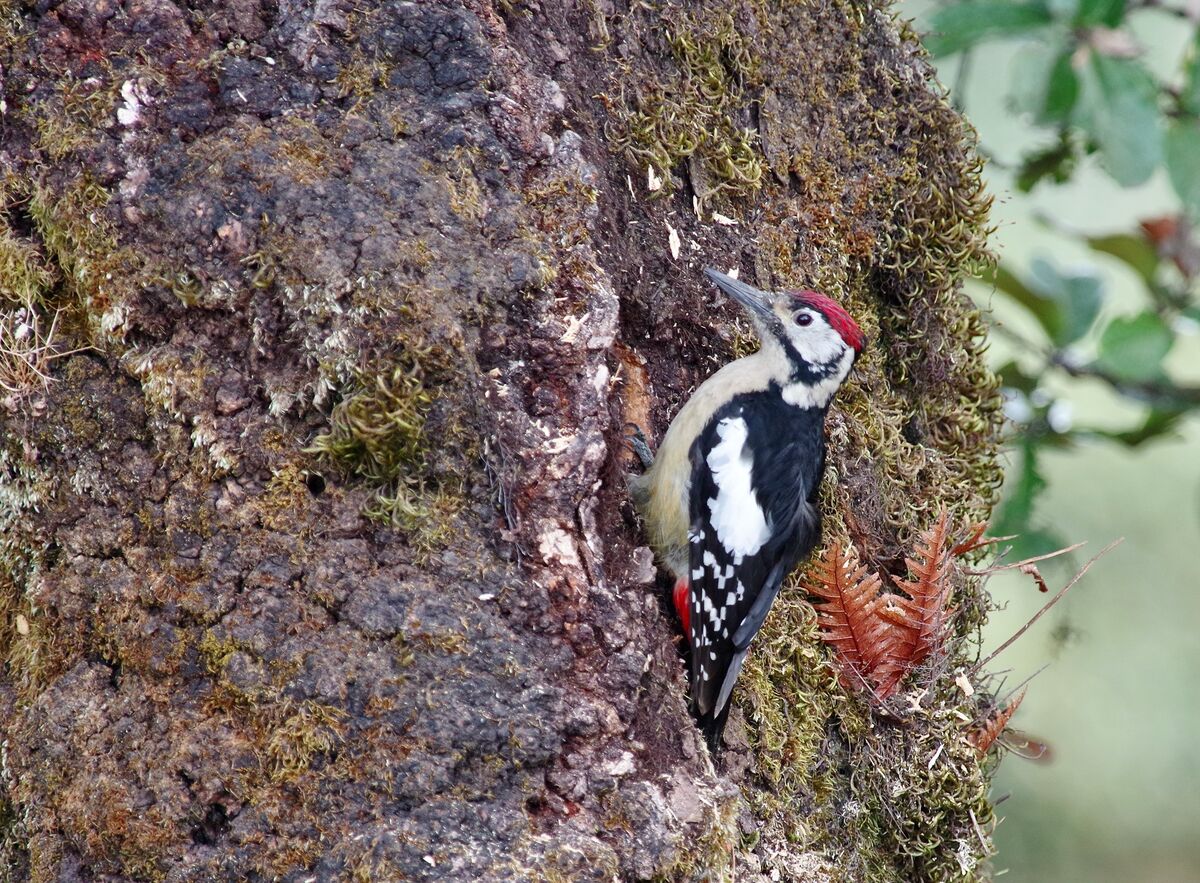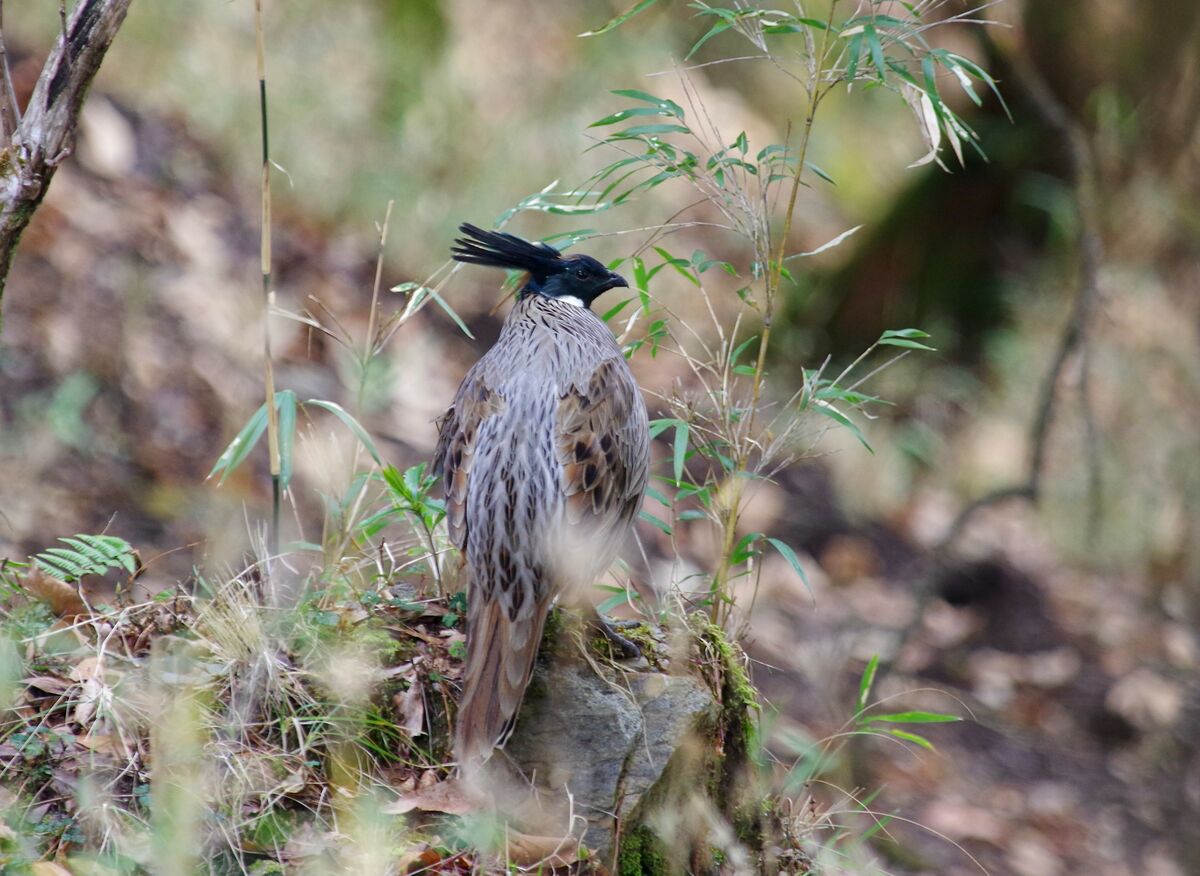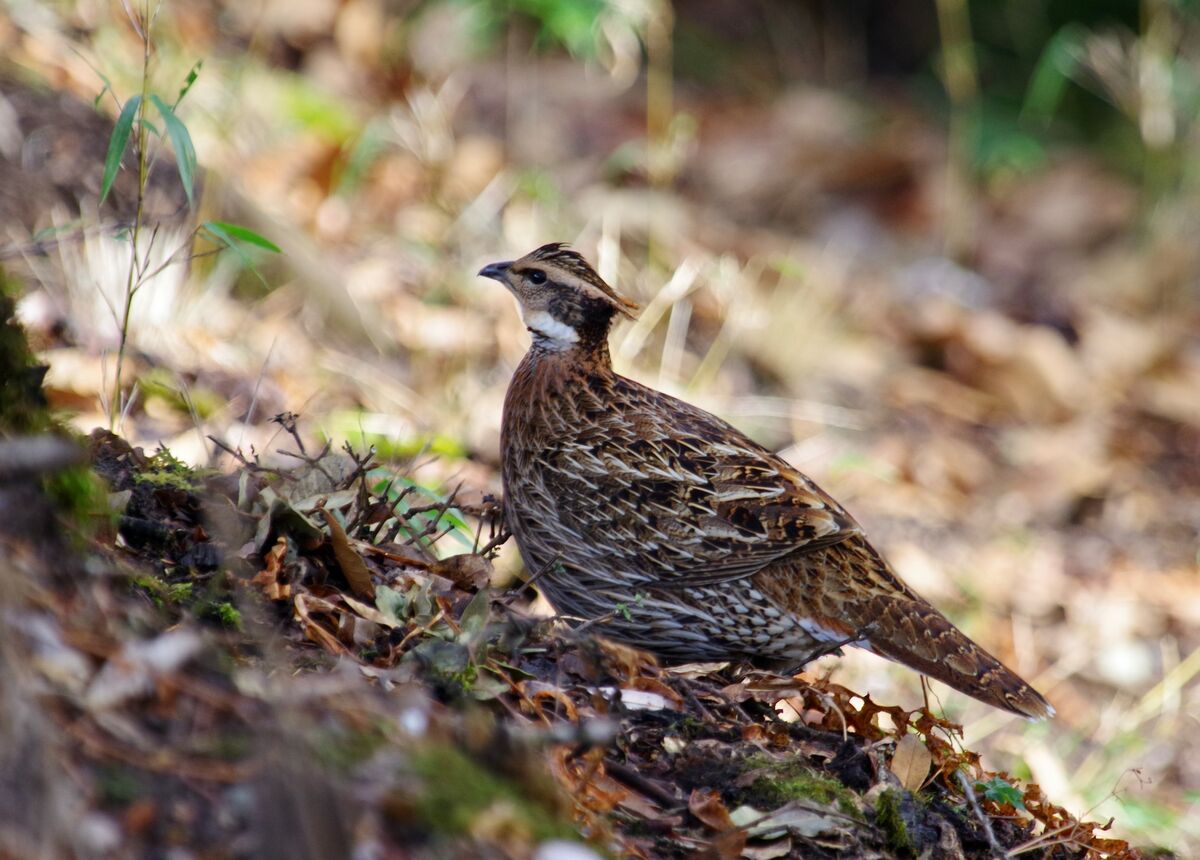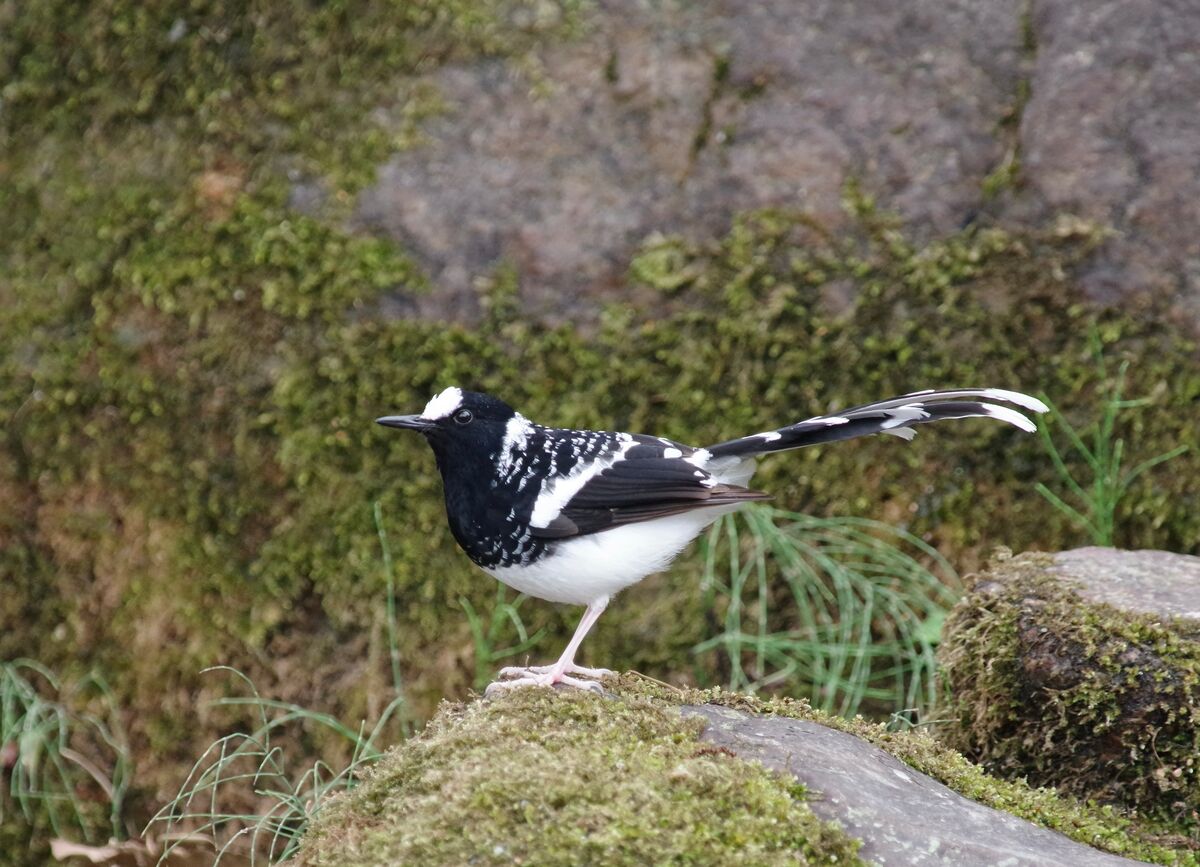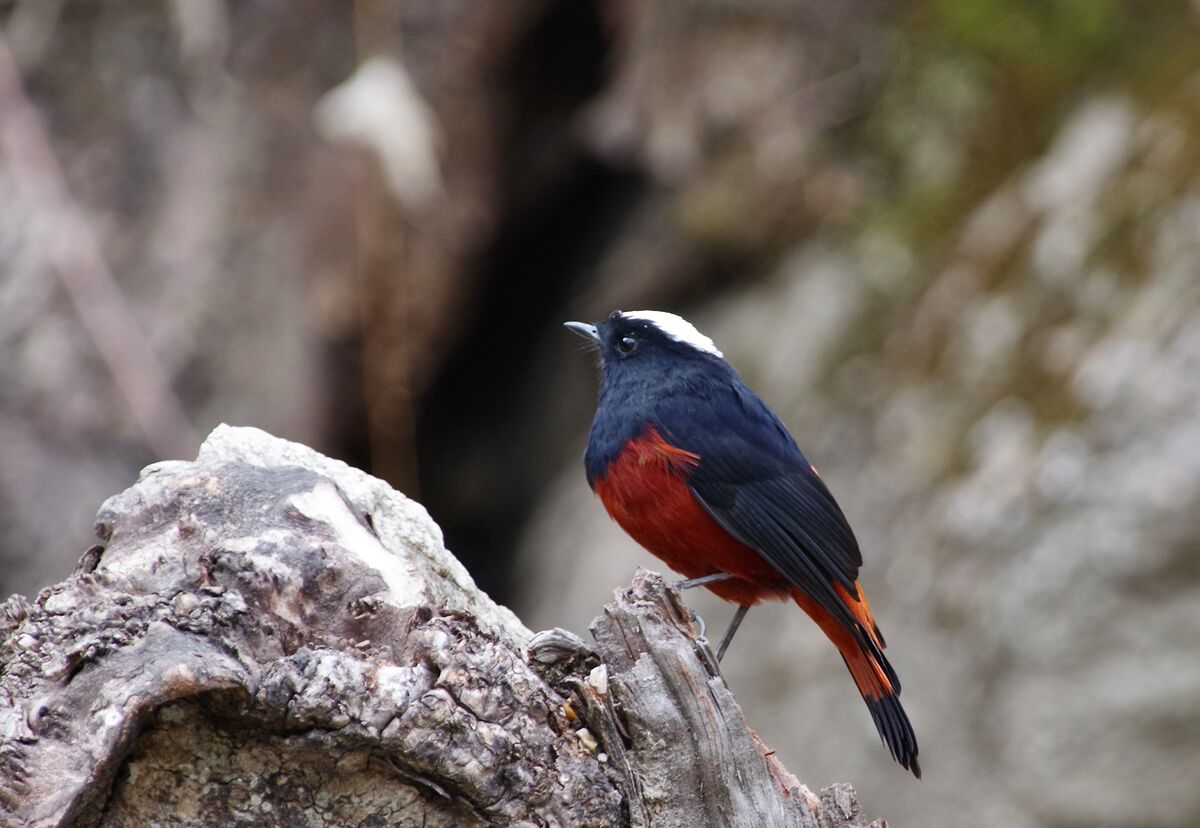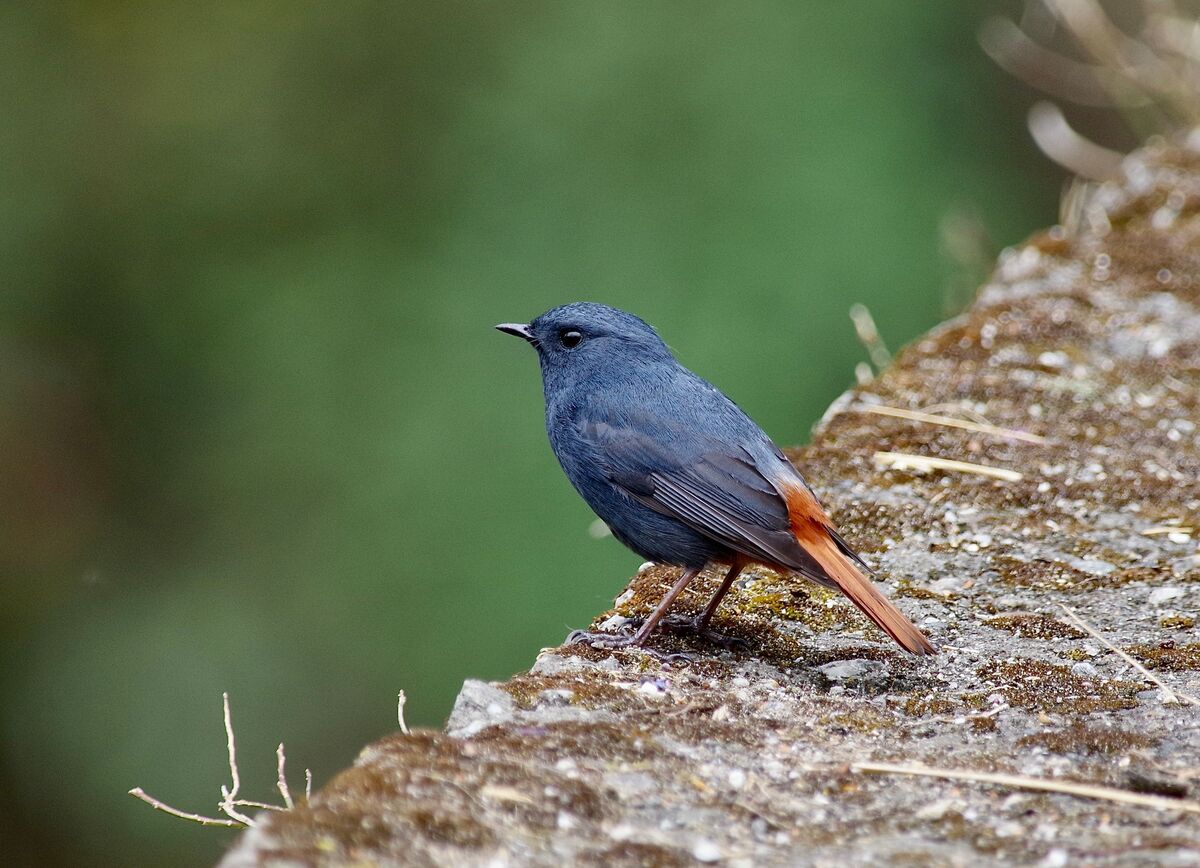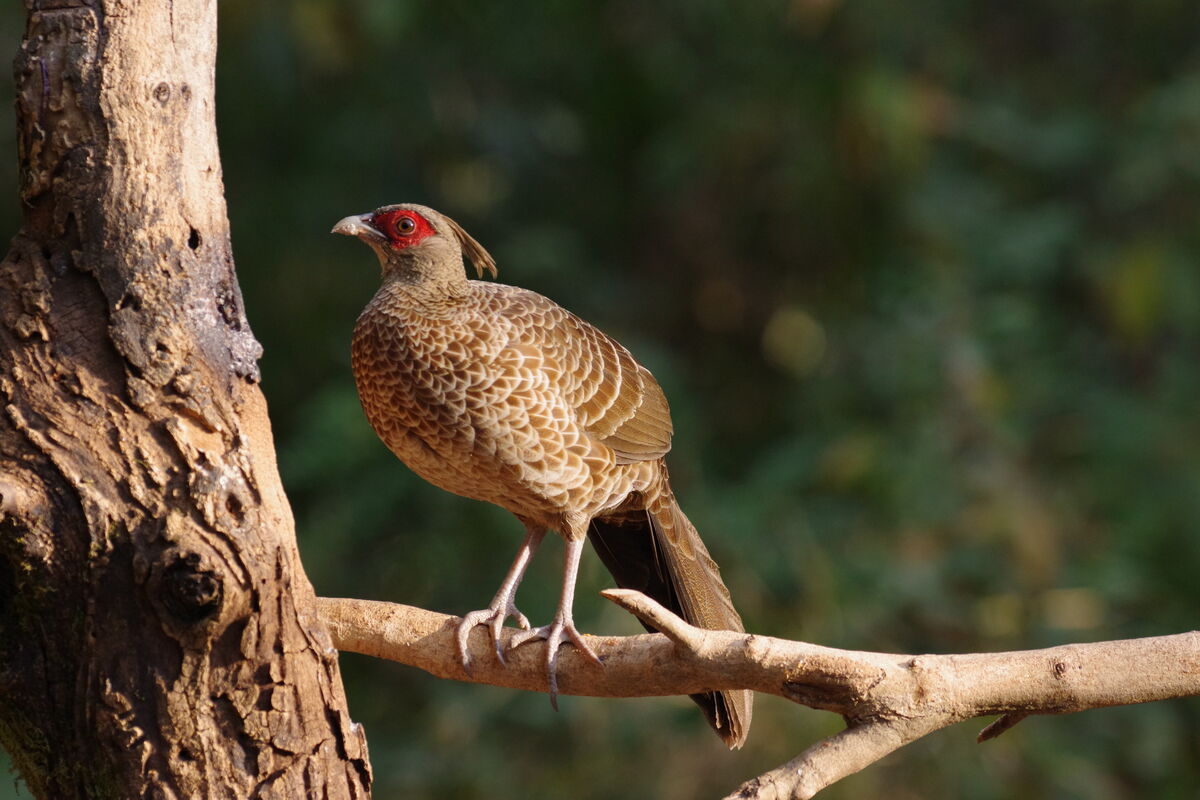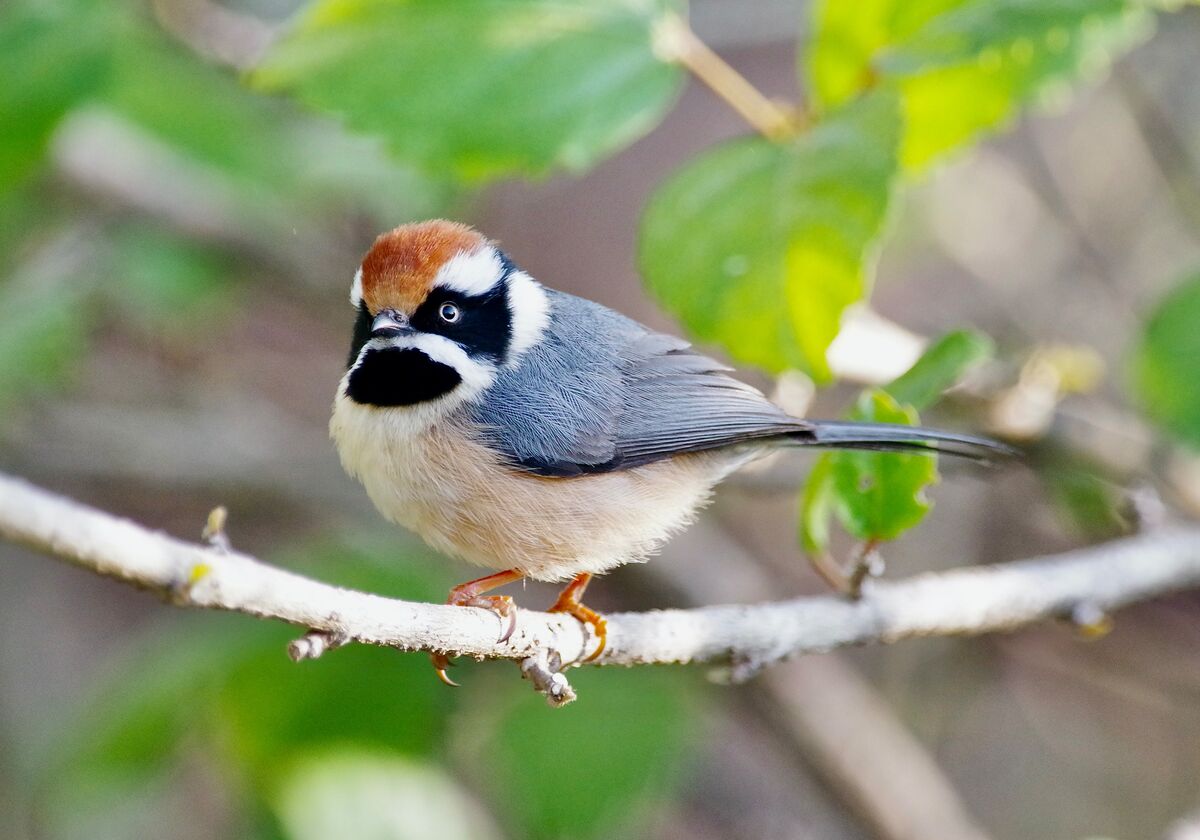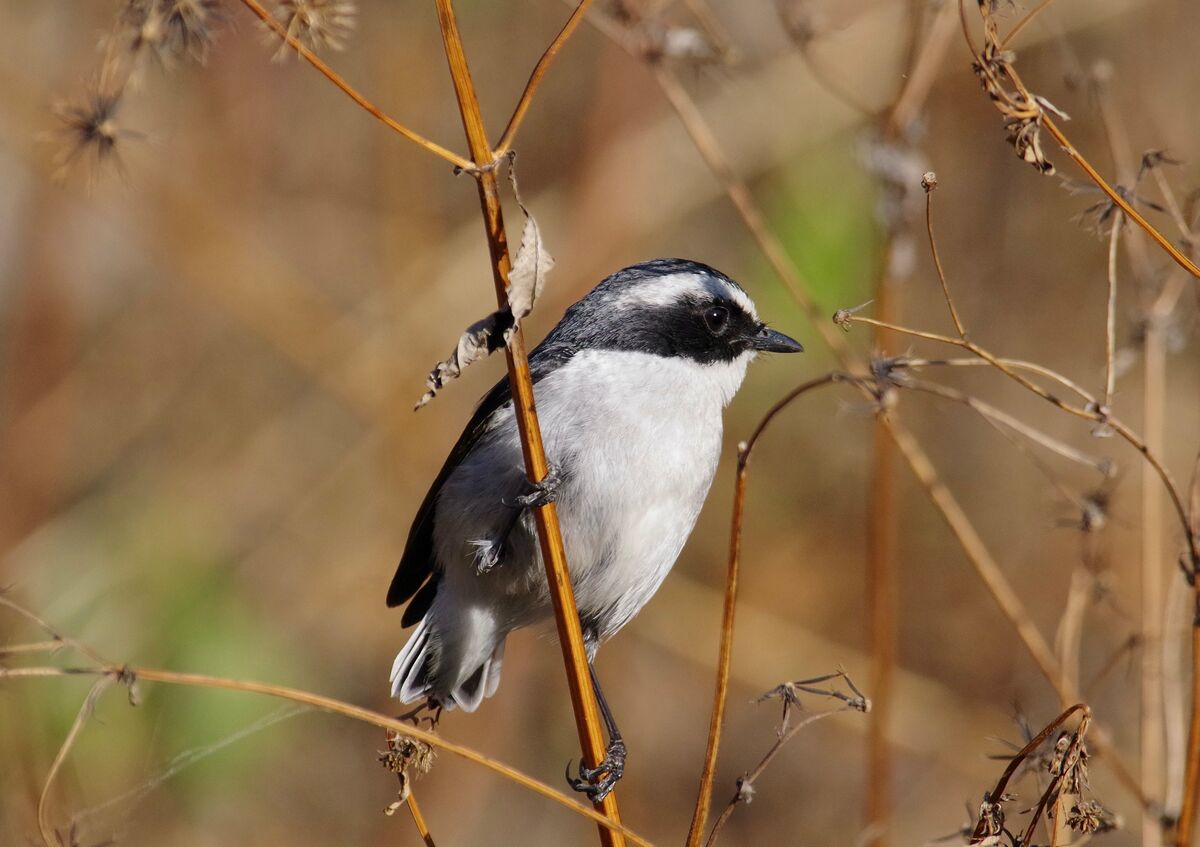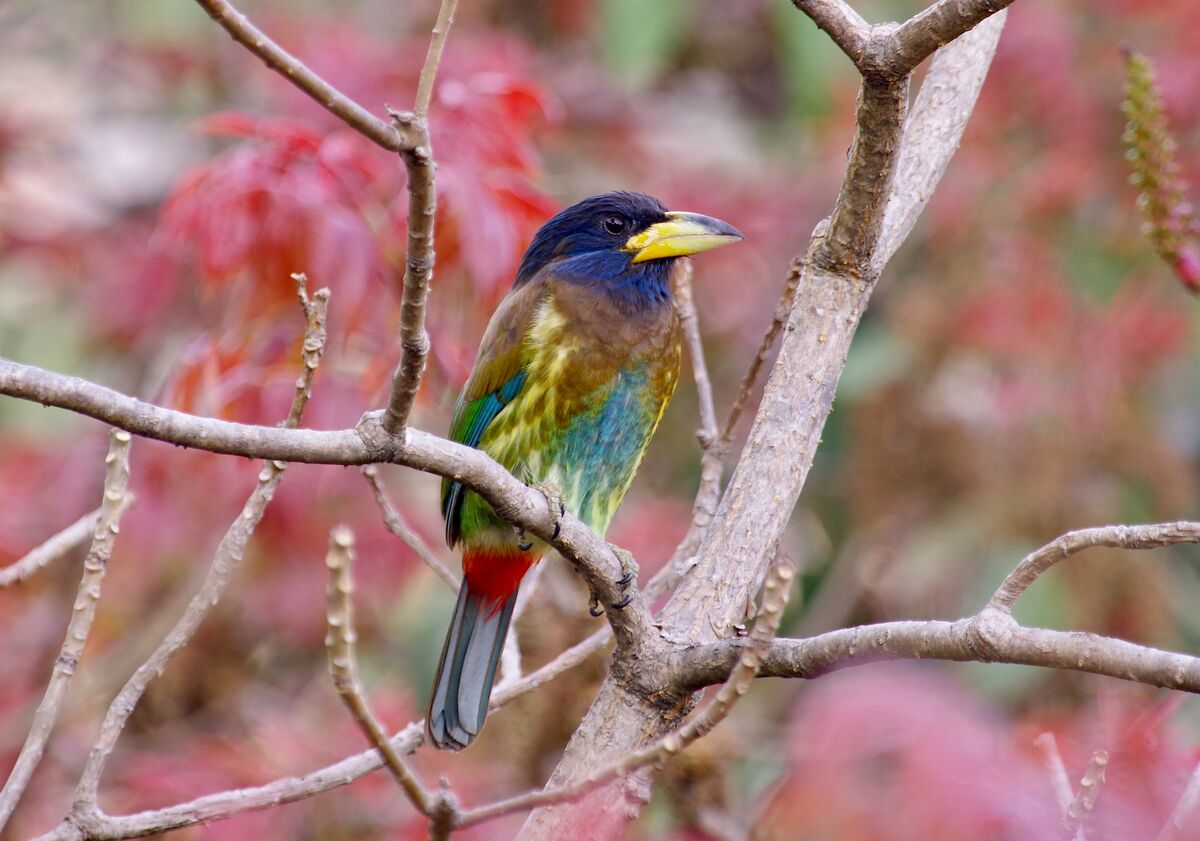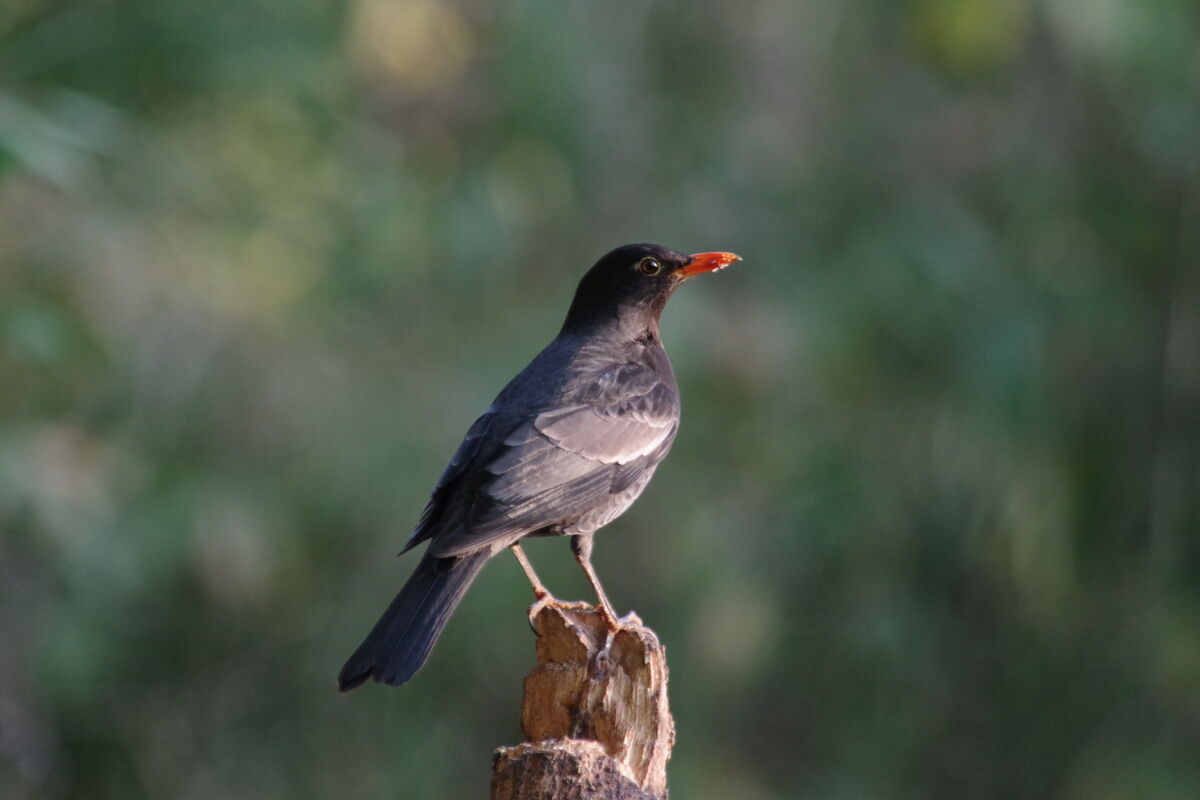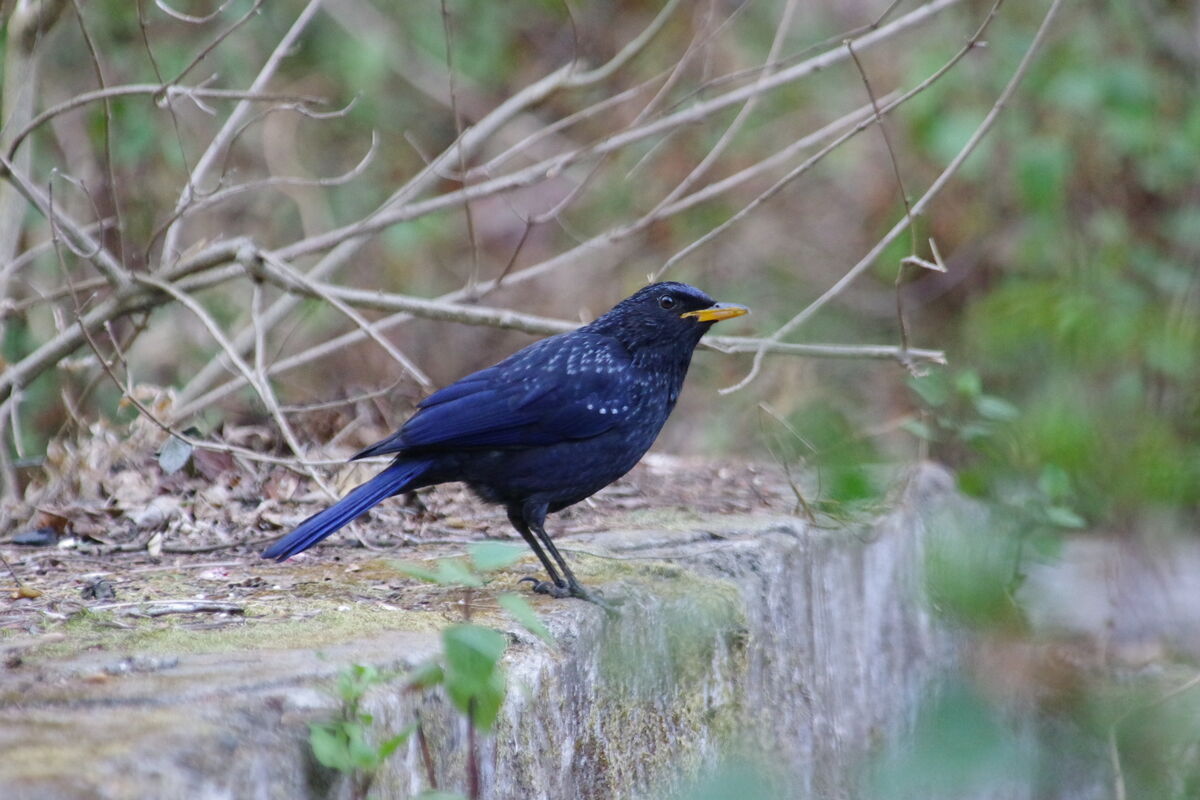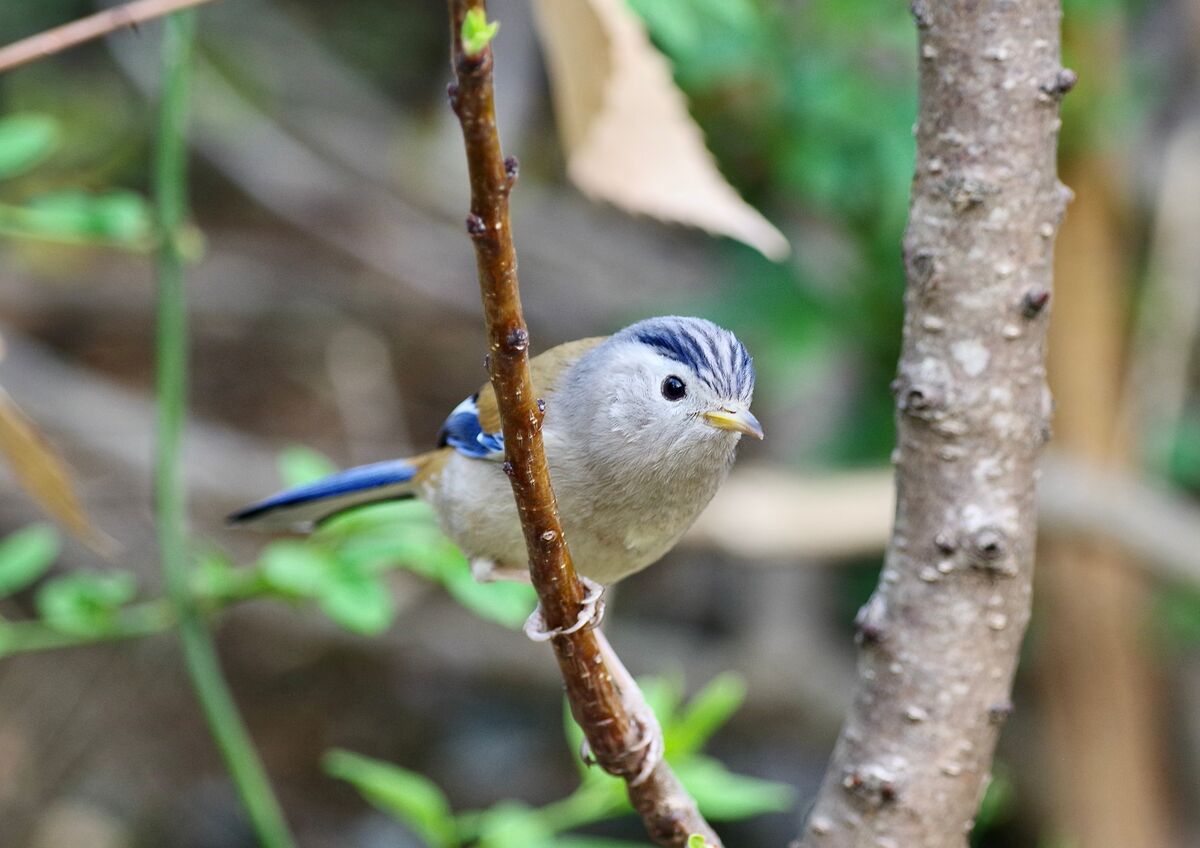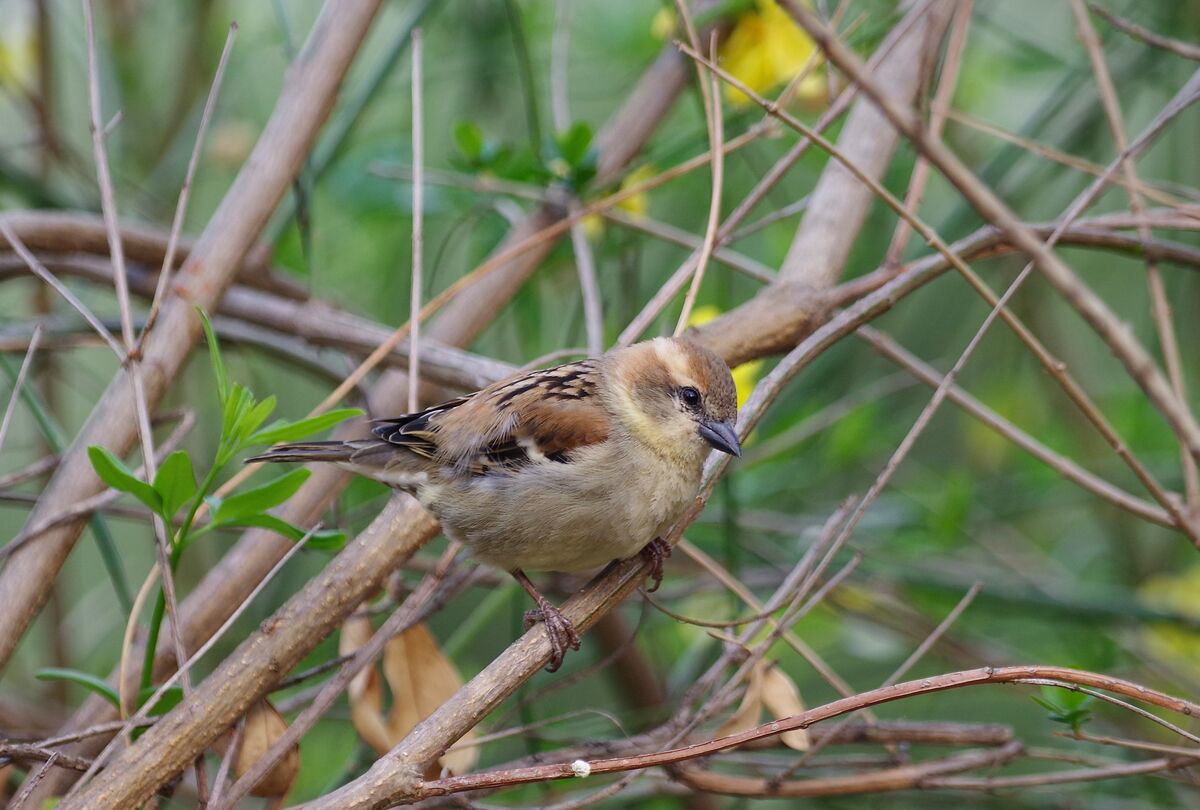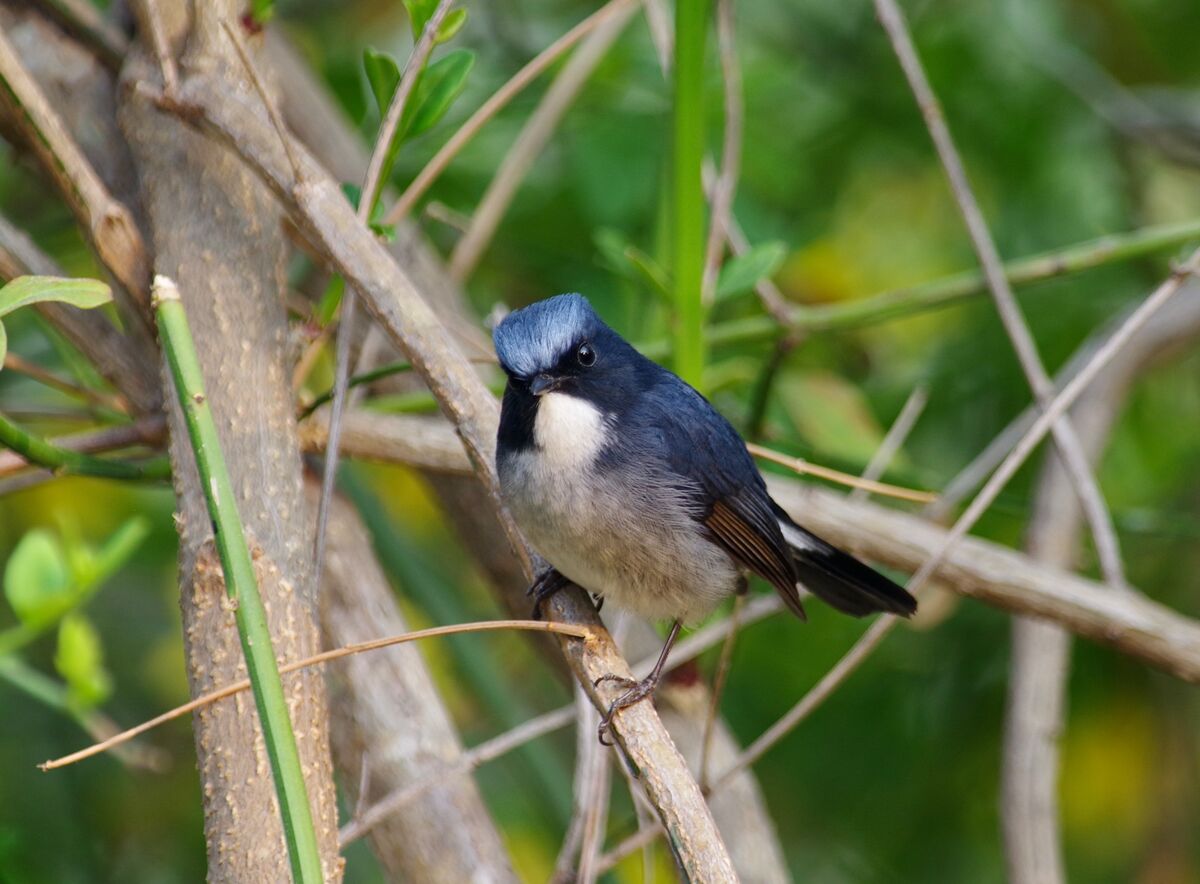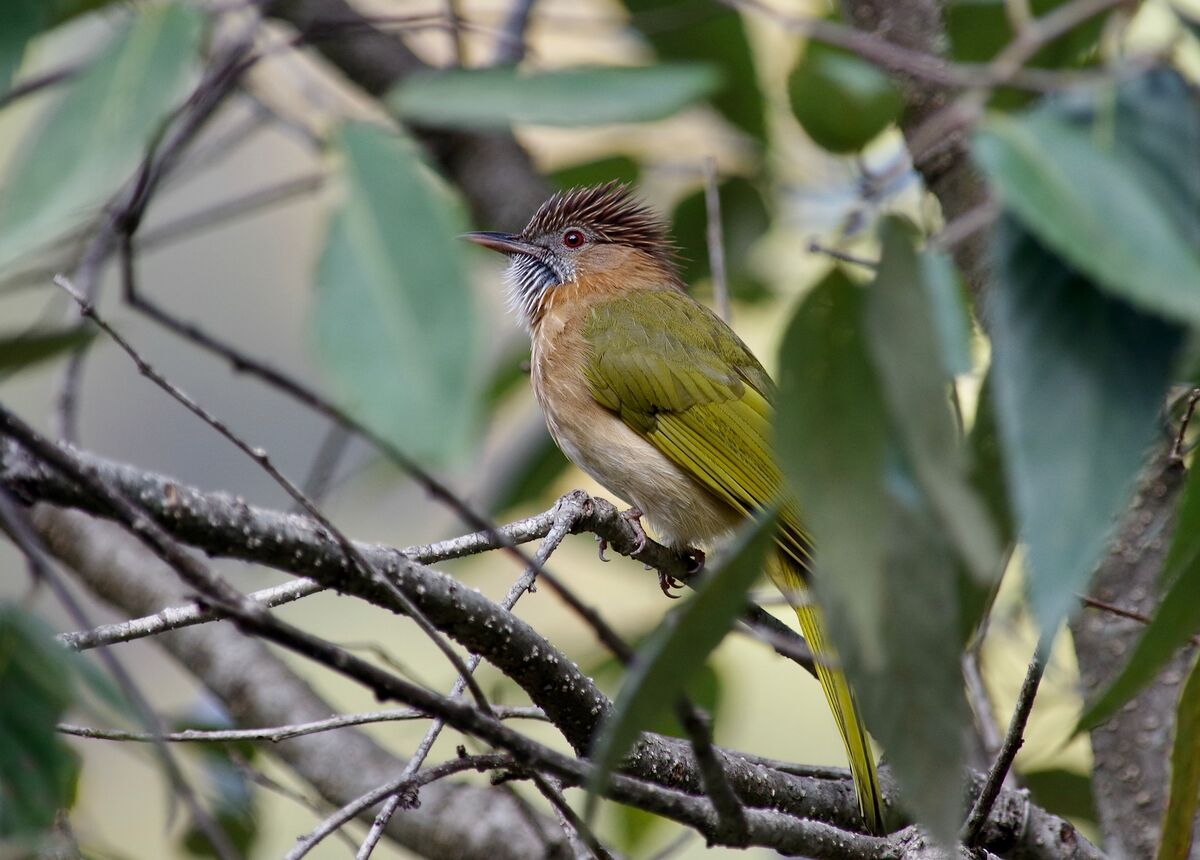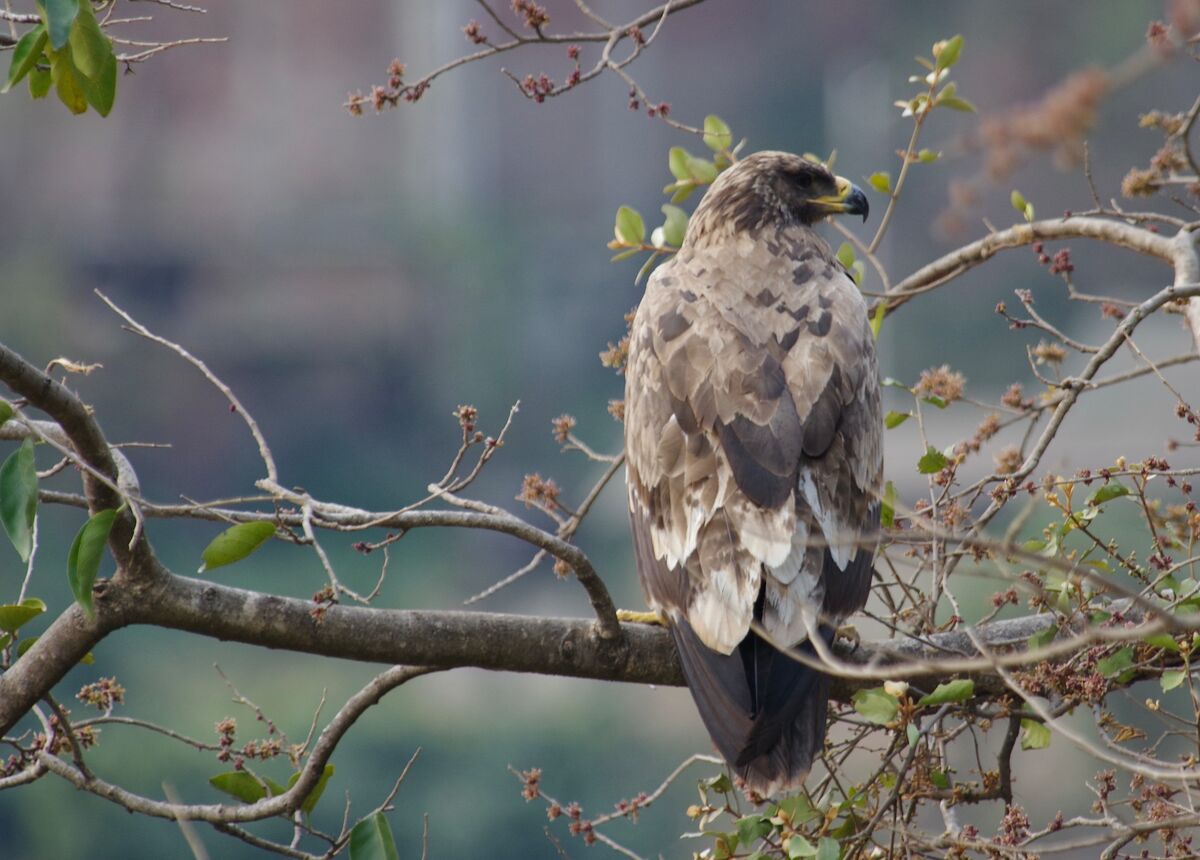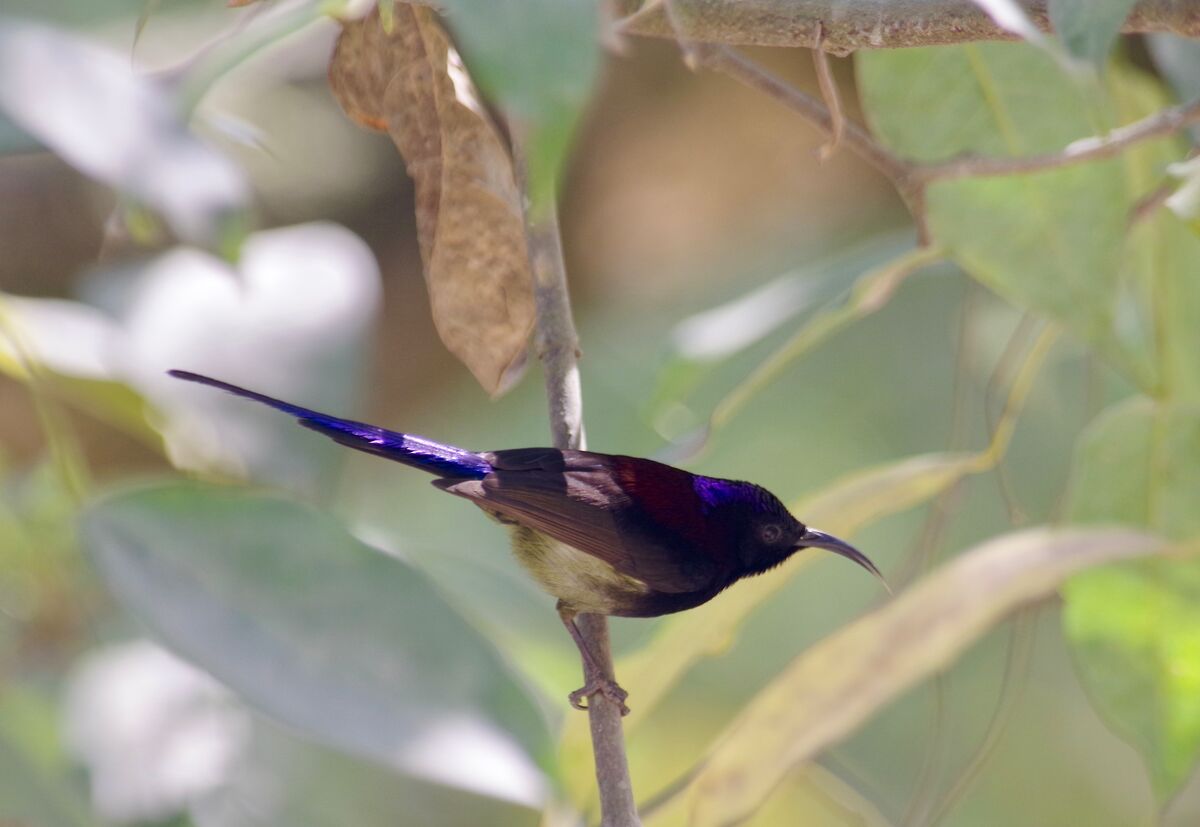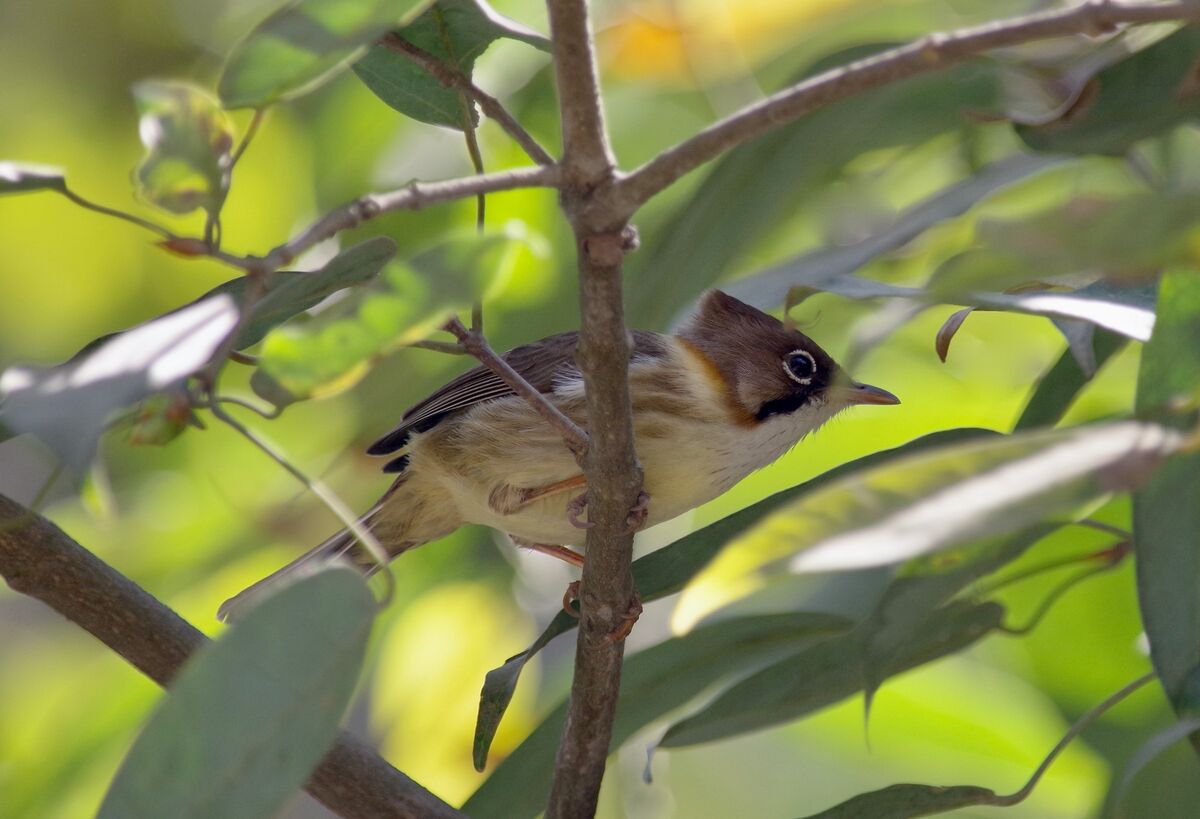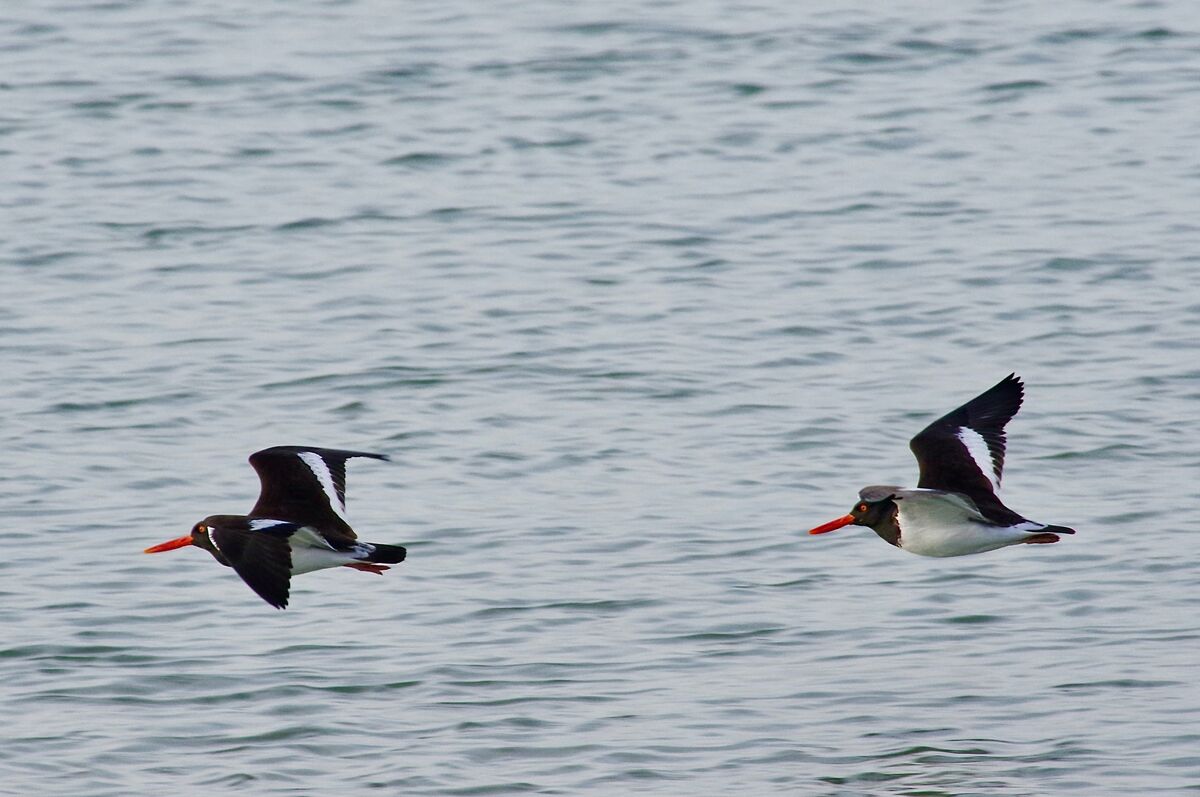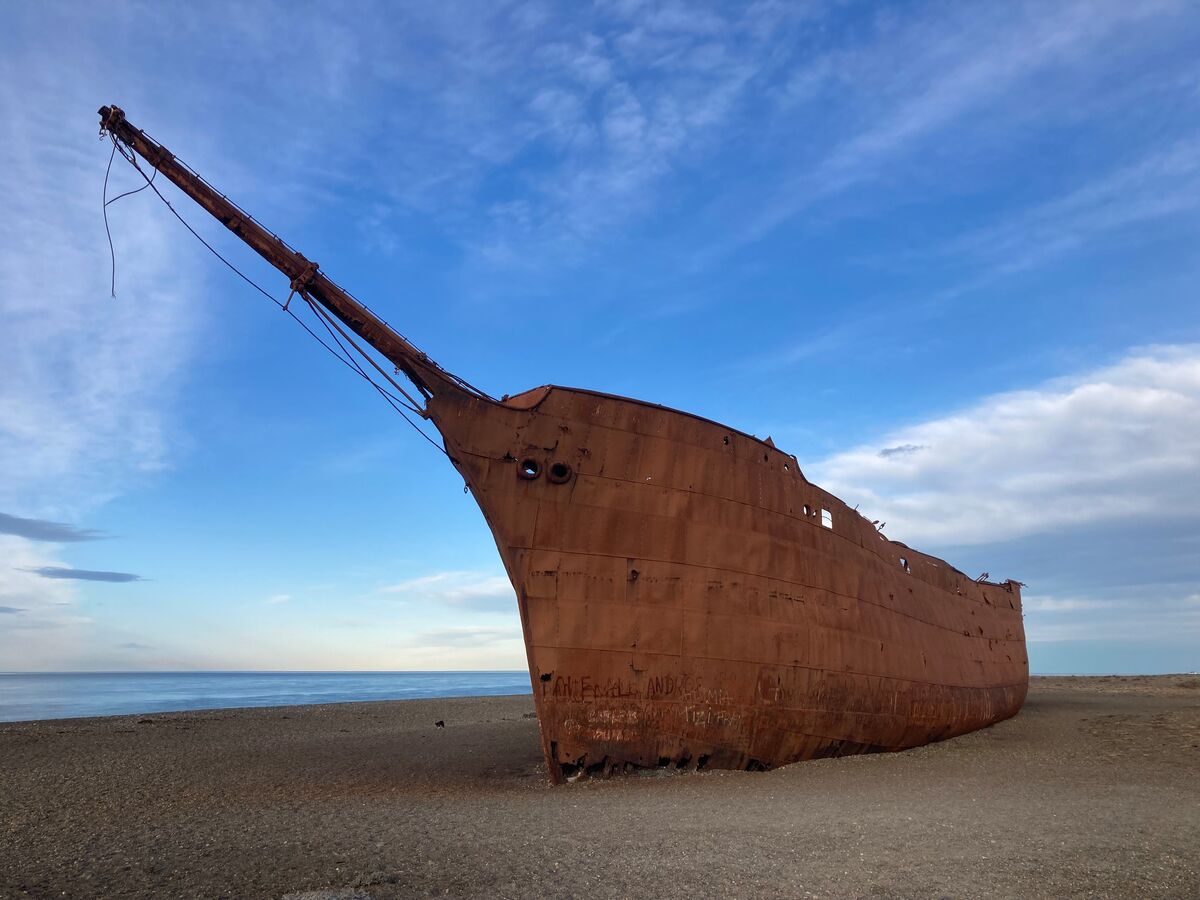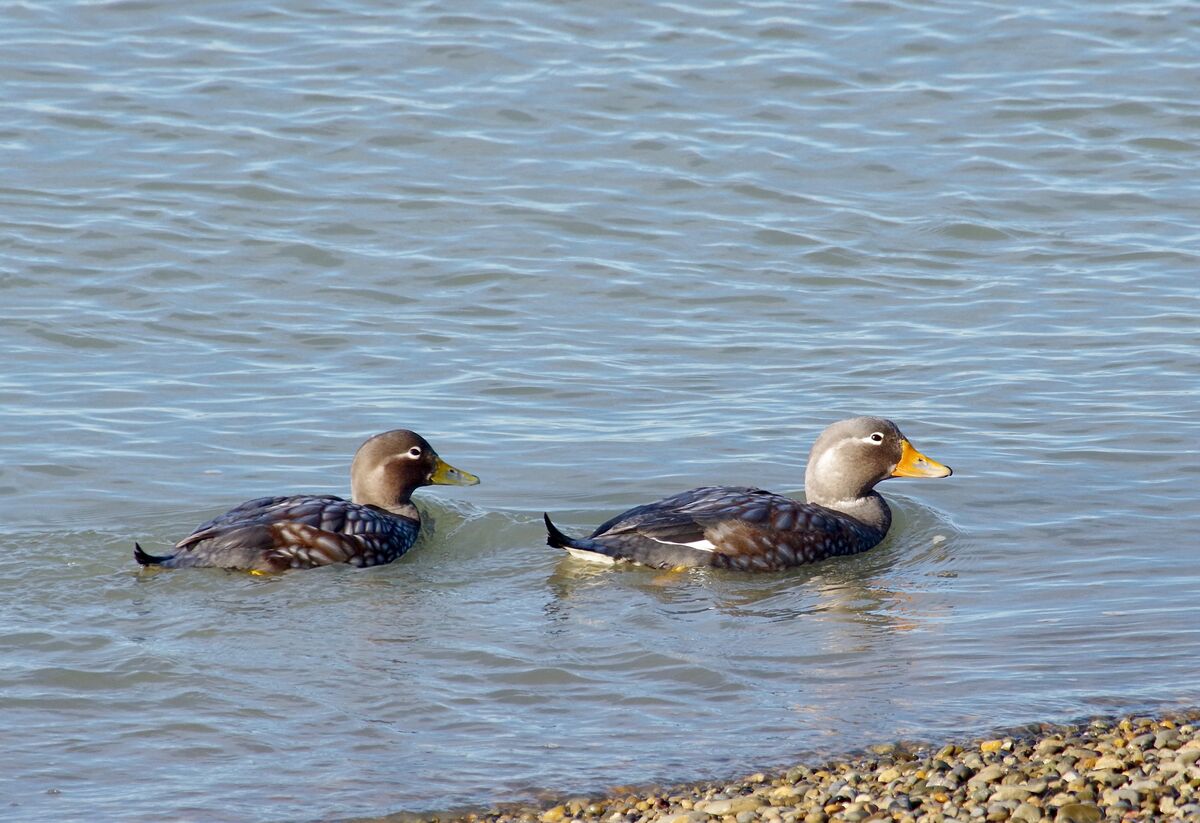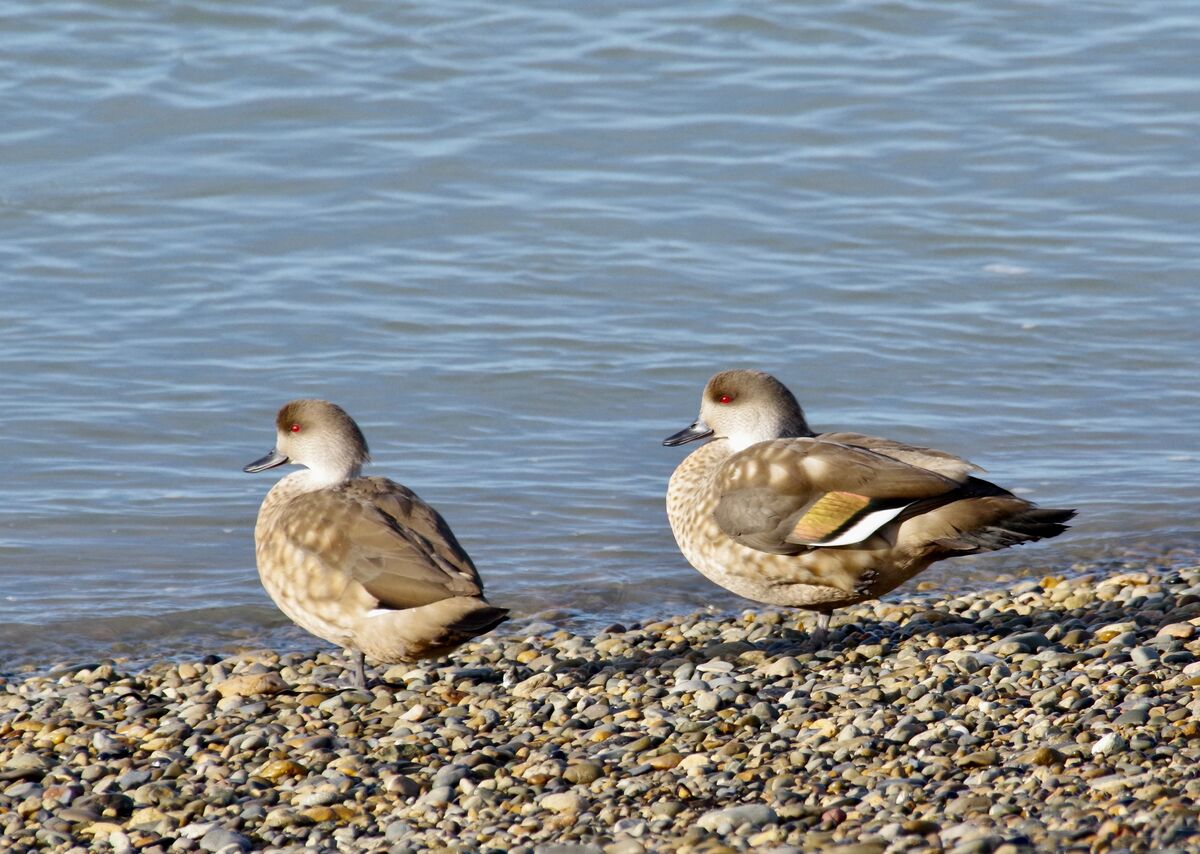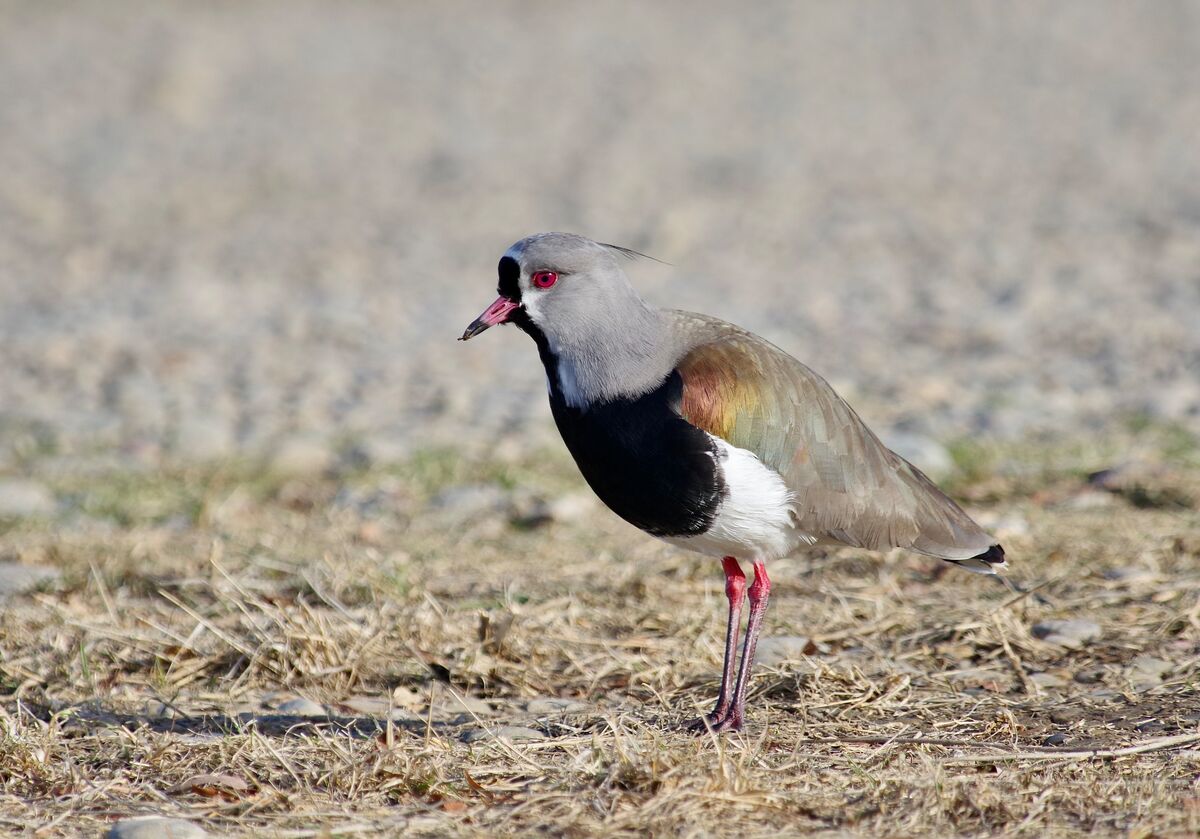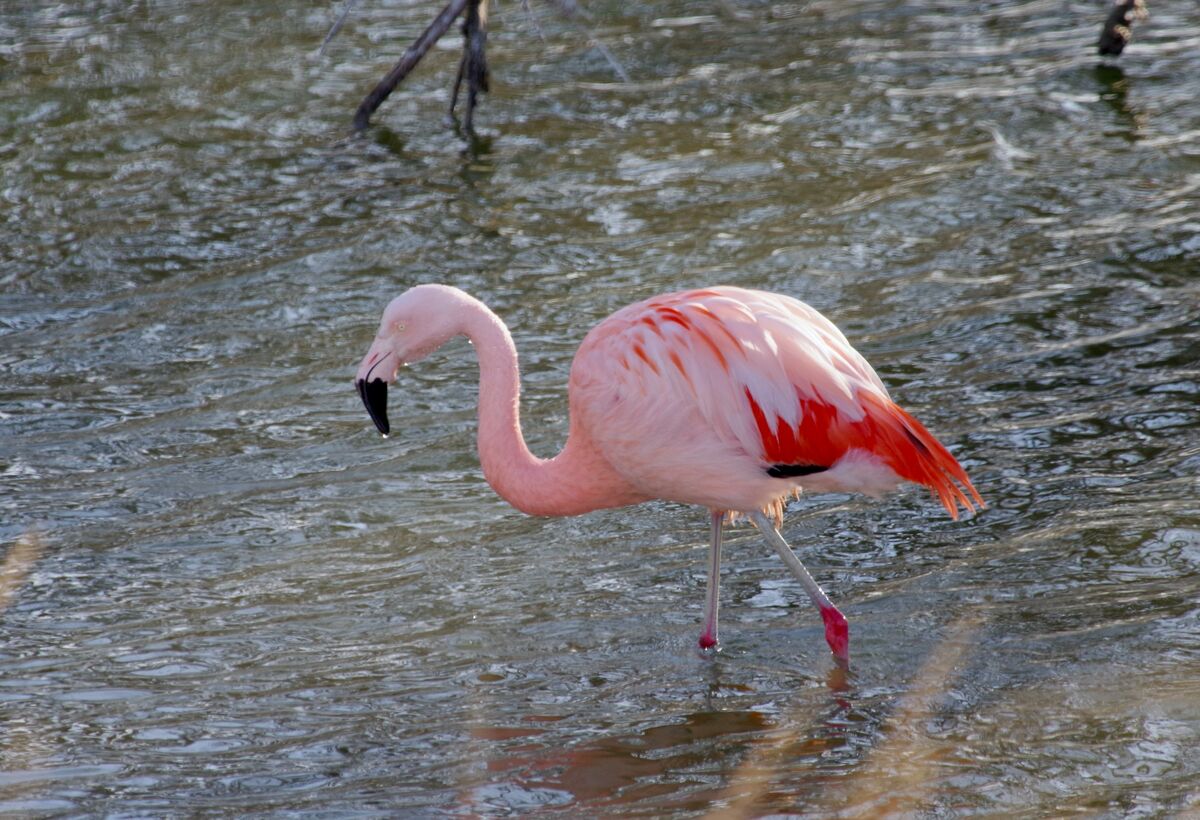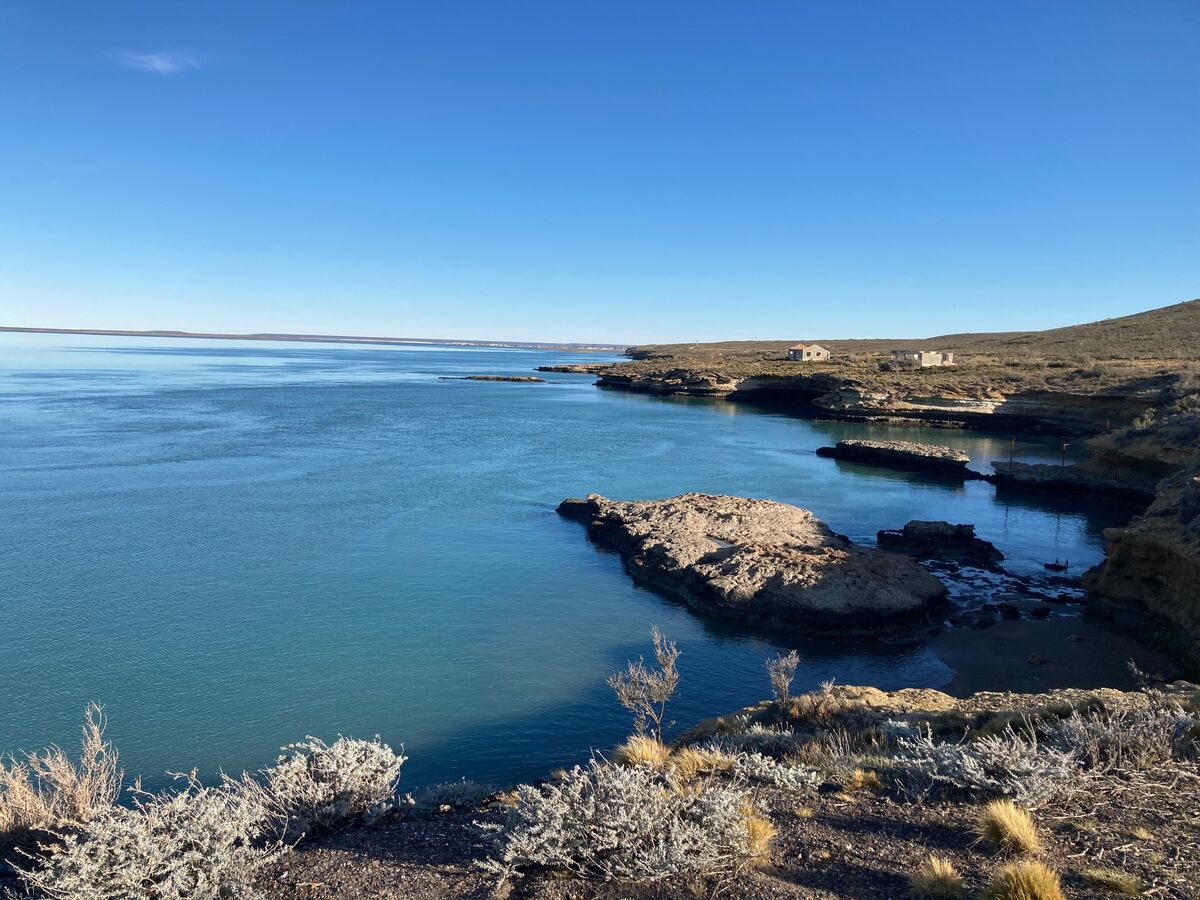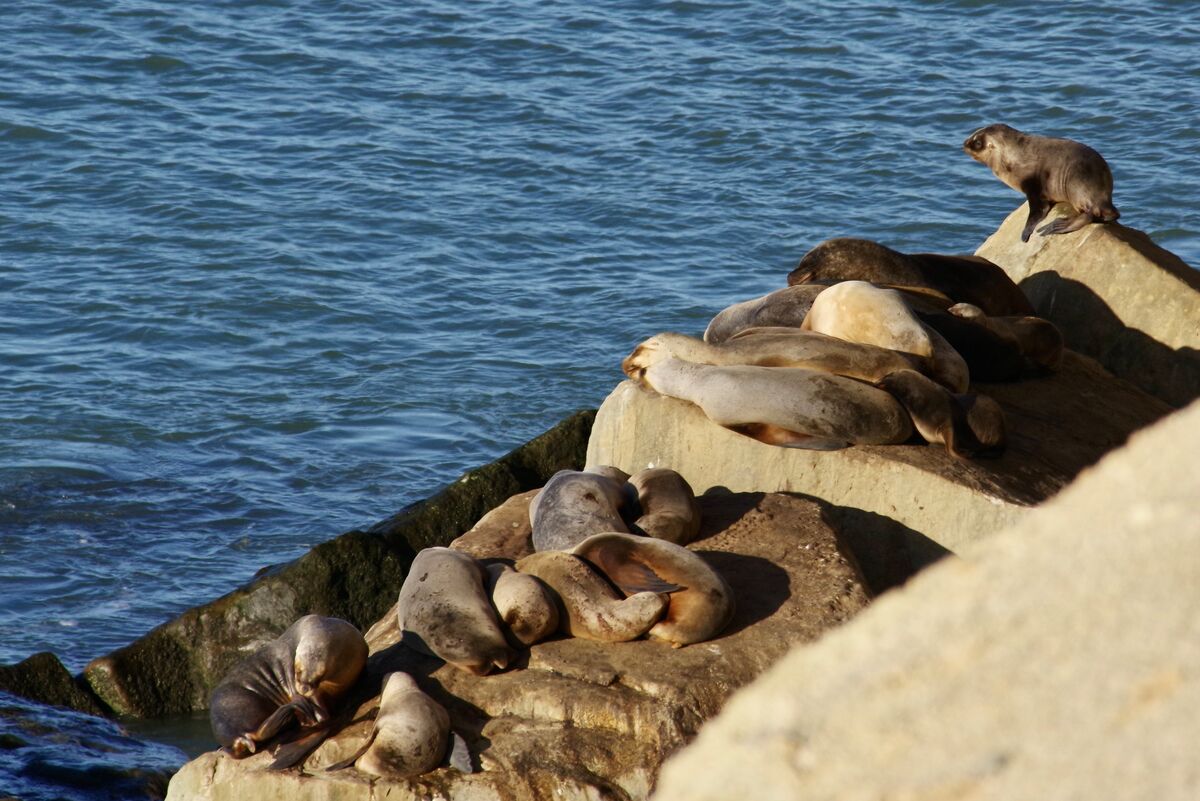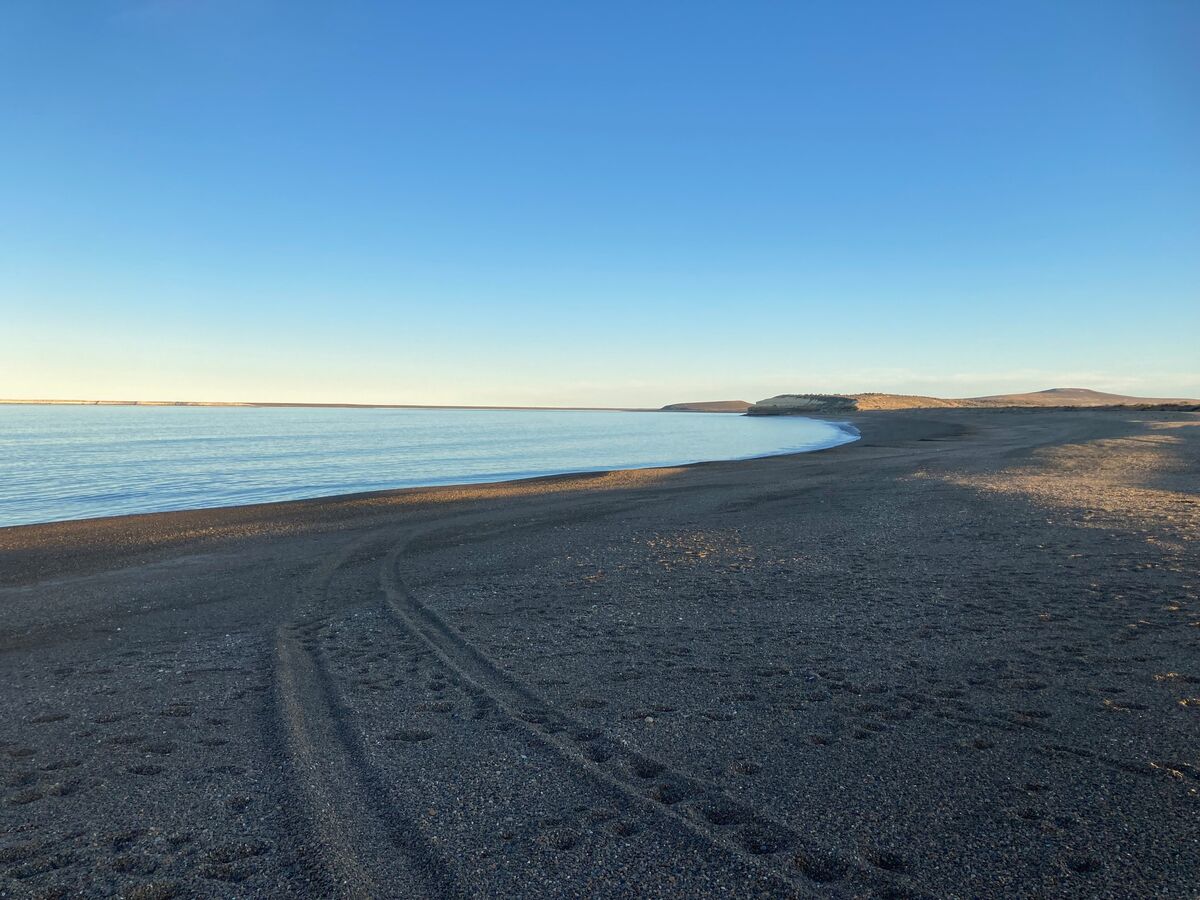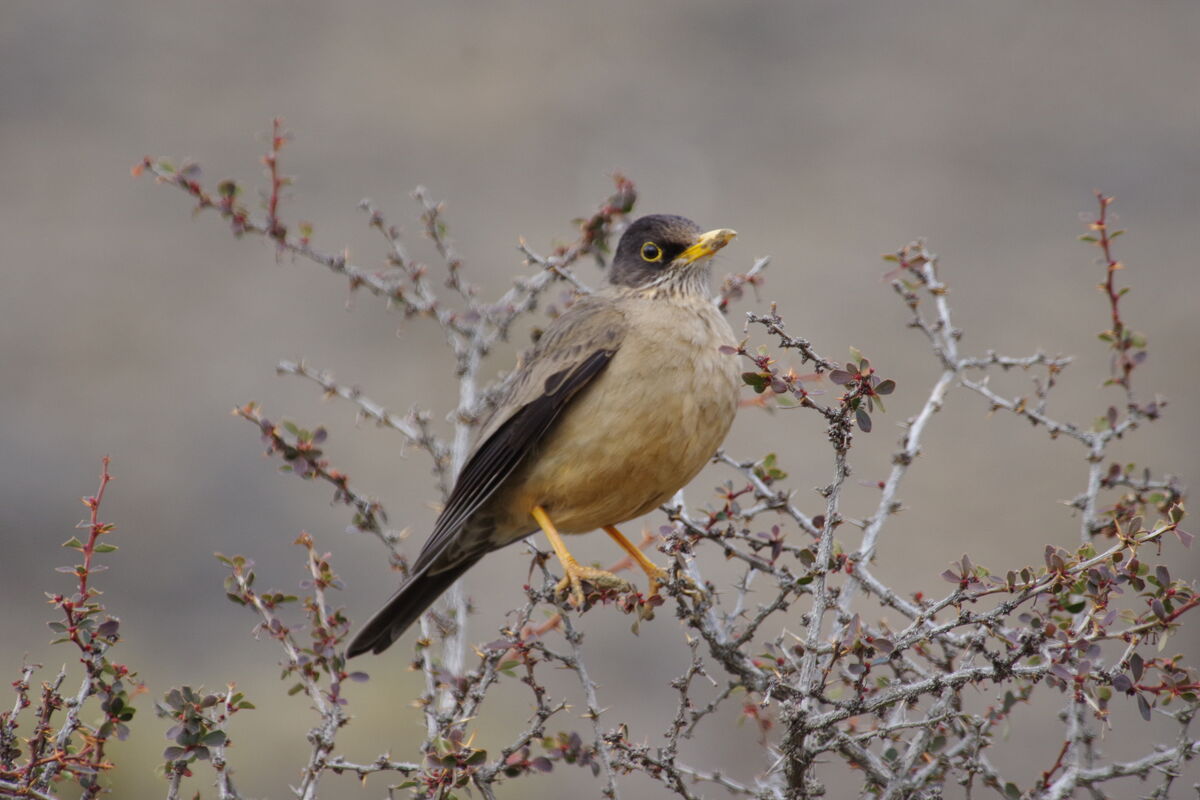Leif Rydell
Colombia Feb 24
Again, I had the fortune to go on a birding holiday with my friend Nick Armstrong from England. By now we have been to several destinations the last 10 years. After having successful trips to Brazil and Argentina, we now decided to go to Colombia which is the country in the world that hold most species (about 1905 species last count). As time was limited for me we had an intense 12 days trip including 2 travel days and days travelled were Feb 16-28. We decided to visit the western Andes around the cities of Pereira and Manizales. Here there are some of the best places in all of Colombia and not very far away from each other. We visited fabulous Montezuma Lodge, Rio Blanco, Termales del Ruiz in Los Nevados NP and finally Tinamú lodge.
We were picked up by a pre-booked driver who took us for a 4 hour drive to Montezuma. It's a lovely spot at the edge of the national park and is runed by a mother and her 4 daughters. The mother was a birding pioneer and succeded in preserving the lodge as an oasis for birding enthusiasts. Yesenia who was our guide is very skillful in the birds as well as very polite. Highly recommended if you go there. Here's a picture from a Colombian magazine showing the family (Yesennia to the right) and a pic from the dining area at the lodge.
The lodge itself is situated close to a river which holds some really good birds but also the lawns and feeders by the lodge offer lots of birds, especially loads of hummingbirds. A total of 30 different hummingbirds through the year are possible. Here a fabulous male of Violet-tailed Sylph, two Collared Incas and a couple of White-necked Jacobins. Last one is a Rufous-tailed Hummingbird, which can be seen widely in central and south America.
Visiting Montezuma means you will need a local guide and transport as more or less all birding, except in the direct vicinity of the lodge, is made from the road that leads up to the top (military base). Each area has its specialties. At the top there are a picnic table and a few feeders. here you can enjoy fabulous views of the mountains and some special birds. Here a few Chestnut-bellied Flowerpiercers, Andean Emeralds, Tourmaline Sunangels and Green Honeycreepers occur. Also a stunning view of the mountains and and a photo of me, Nick and our fantastic guide Yesennia.
On the way down toward the lodge we did several stops and saw Municique Wood-wren, several Cinnamon Flycatchers, a nice W Ornate Flycatcher and the rare Gold-ringed Tanager.
At one stop we saw one of my targets, a Hooded Ant-pitta. Ant-pittas are a fabulous group of birds, very secretive and hard to see but can responde to play-back and also visit special feeding stations with worms.
Along the road town towards the lodge you will make several stops. Your guide will know where and they also have a few platform with one or two feeders. Not a bird but a magical sighting was this mini wasp colony of small nests. Not more than one cm and "glued" under one of the picknick tables. Also an awesome "glass-winged butterfly" with transparent wings and the near-threatened Purplish-mantled Tanager.
A few more of the birds seen on the way down were this rather rare Yellow-collared Chlorophonia (bad pic), Southern Emerald Toucanet and a female Green and Black Fruiteater.
 Our driver and us resting as well as a short walk in pure rainforest and an extremely small orchid as well as a curious Green-crowned Brilliant.
Our driver and us resting as well as a short walk in pure rainforest and an extremely small orchid as well as a curious Green-crowned Brilliant.
Back at the lodge we continued to enjoy the fabulous surroundings with more birds as this Black-chested Jay which they took care of a year ago after a raptor incident. Next hummingbird is a female of the Violet-tailed Sylph. You would easily think it's a male concidering the bright colours but sometimes the females also are stunning. An other easily seen gem is the Green Thorntail, female and male.
An absolutely stunning bird is the easily seen Velvet-purple Coronet. How could these colours be for real. Still, photos do not show all variations.
Me and Nick leaving for next great lodge, Rio Blanco.
Rio Blanco natural reserve is just outside the town of Manizales. The lodge itself is located at around 2500 meters and you walk up to 2800 during your visit. This lodge is famous for having 5 differnt Ant-pittas coming out for worms at special feeding stations. It's quite a spectacle as the guides call them by their given names and they have adapted to special times during the day when worm are served. We managed to see 4 of them during our stay which feels good as rain had made snails coming up from the mud and giving no actual reason to go extra for worms. Hera you can see Bicolored Antpitta, Slaty-crowned Antpitta, Chestnut-crowned Antpitta and finally the rarest, the Brown-banded Antpitta.
Close to these feeders you well most likely encounter some other birds showing interest for the food. This male Green and Black Fruiteater came out many times as did the Gray-browed Brushfinch.
Below, one of the famous local guides doing everything he can to attract the Antpitta to show up.
Here, as well as most places in this country, hummingbirds are a major attraction. One of the star birds is of course the Long-tailed Sylph (very similar to .... seen at Montezuma. The most common one is the handsome Buff-tailed Coronet.
The smallest of them here at Rio Blanco is the Speckled Hummingbird, just about 7-8 cm. In some way even more amazing than the bigger and more sparkling ones.
I tried quite a few times to capture a hummer when flying which is a true challenge. One of the few results to show is this Brown Inca which I managed to "nail" on its way towards a feeder.
The last day we went for a walk downwards. Chance of many other birds we had good moments with the following birds: Sickle-winged Guan, Berryl-spangeled Tanager, Barred Becard and Andean Motmot.
A few pics of the lodge itself and the surroundings. In the evening, people who stays overnight, gather in the small restaurant and enjoy hospitality and a lot of moths.
 After After 3 nights here we continued towards Hotel Termales del Ruiz which is situated at 3500 m in Los Nevados NP. Our driving guide Ana Lucia Londono once again came a picked us up. On the way up we stopped at a hot spot for Noble Snipe, one of my targets. Unfortunately, a farm has recently been established here and no snipe was to be seen.
After After 3 nights here we continued towards Hotel Termales del Ruiz which is situated at 3500 m in Los Nevados NP. Our driving guide Ana Lucia Londono once again came a picked us up. On the way up we stopped at a hot spot for Noble Snipe, one of my targets. Unfortunately, a farm has recently been established here and no snipe was to be seen.
We continued to 4200 where the rare but local Buffy Helmetcrest was seen. This is a highly specialized hummingbird only to be found in this area and on high elevation. Photo below shows me, Nick and our good and enthusiastic driver, Ana Lucia, who took us from place to place during the whole trip. Down also a scenic picture of the vulcano at Los Nevados NP.
At this time I didn't feel much of the hight we were at but later on I had a strong reaction. When I went to Argentina a few years ago I also had problems but got rid of them whith some medical help and 20 minutes of oxygen. This time however, I didn't get any better though I tried to aclamtice to the hight. The following night was really terrible with strong headache and high pulse. Day time is easier to cope with and even we had to shorten our stay here to go lower down, we managed to see quite a few of the star birds here. Without doubt, the Rainbow-bearded Thornbill, is the true gem here. I never came close for a good shot but show it here because of its brilliance if you see it well.
There is a big feeding area here and it's easy to have splendid views of beauties like Scarlet-bellied Mountain Tanager, Lacrimose Mountain Tanager (2) and next to the road several Pale-naped Brushfinches.
Termales del Ruiz is also a "thermal hotel" with hot springs, giving guesst the opportunity to taake warm and relaxing baths during their stay. Several pools and the best food during our trip is definately worth mentioning. The most common (very common) of the hummingbirds is the very "aggressive" Shining Sunbeam (front and back).
Once again, the local guide shows the happening of the present Antpitta. Here Tawny Antpitta arrives every morning when the guide calls it by name. Slowly and quietly it approches for breakfast. Fantastic birds and always a memorable moment.
Not as frequent and strongly chased away by the Shining Sunbeams, were a few other hummer like this big and beautiful Great Saphirewing male sitting and female flying and the handsome Golden-breasted Puffleg.
Flowerpiercers are special group of birds with its semi-hooked bill. We saw 4 species during our trip and the Glossy was quite common here at Termales del Ruiz.
As told earlier, I didn't feel good at this high elevation and Ana Lucia had to pick us up earlier than planned. We stayed one night in Manizales before we drove towards our last place, the iconic Tinamu Lodge. This lodge is at lower elevation and boats different species. Climate change seems to make quite some changes and the amount of hummingbirds normally active around the feeders were completely absent. However, we saw many beautiful birds here as well. Inside the forest there are a few leks with the absolutely gorgeous Manakin and the handsome Green Hermit.
The owners of Tinamu have protected a rather smallish area of true forest and not far away from it you will find coffee plantations and other agriculture habits. Here you see the restaurants and how quick the plantations are.
Firsta night we went for a shorter night walk, hoping to see or hear some local owls. No owls but this Paraque was sitting on the lawn. Next to it a remarkable tree, which flowers open up during the dark time and close during day time.
At Tinamu there are several fruit feeders which in contrast to the hummingbird feeders, attracted several other species. The Red-crowned woodpecker was frequent as well as the Andean Motmot. Some other strange and special flowers seen were these below. Don't know the name of them though.
Birds are obviously the main attraction but this glassed shower/ bathroom in our room and the giant Guan Lizard were as memorable as many birds.
Last evening we spent the last hours on a terrace looking out through the beautiful scenery and having a well deserved beer. Also a picture of us and our excellent local guide and a happy meeting with the Moustached Puffbird.
Our plan included one more day at Tinamu but as we had seen most of the possible birds we decided to go to an other place before heading towards the airport, not far from Pereira, the Otún Quimbaya reserve which holds a few different birds from the places we have visited so far. Here we saw the rare Red-ruffed Fruitcrow (at nest) as well as an Andean Guan.
One of the absolute last birds we saw was this Bare-faced Ibis. Also one of the most commonly seen birds, the Great Thrush.
A great experience to visit this country but I must say, the hummingbirds are the biggest draw. Take care Colombia!!
India part 3, Tiger.
So this is my third and last part of the 38 days I spent in India. My plan was to stay one more week around Sattal after returning from the northern Himalayas. As my stomach was still in rather bad shape I felt I needed some change. Therefor I booked a flight to Goa which is a heaven for beach, party and Yoga lovers. As the beaches stretch more than 100 km, there are different types of places depending on what you want to do. I chose one just south of the airport which is very quiet. I just spent time here biking around and taking long walks on the beach. I had some problem with my lens so many photos were a no use. This Kentish Plover from my beach is one of only a few I could save. Fortunately I found what was wrong for the more important last days.
After 7 days in Goa I flew up to Delhi and was picked up by my driver for the first part, one day in Barathpur. My stomach was pretty bad this day and we had to make a stop at a hospital before continuing. The reason to go here was more or less only to see the Indian Courser. The park itself is not worth visiting this time as all migrants have left and the resident birds live a quiet life, so we went to a place about 10 km north of the park. To my big disappointment we never saw the courser. It had been there the day before and though we spent 7 hours here it never showed up. My guide told me this was the first time he hadn't seen it on this site!! I saw these two lapwings; the Yellow-wattled, the Red-wattled Lapwing and a few very shy Chestnut-bellied Sandgrouse but I have seen them all quite a few times before.
Next to a tree where we parked in the shadow, a group of Bank Mynas were searching for food in the rubbish on the street.
I the went back to Delhi to catch the night train to Ramnagar which is the main hub for the eastern part of Corbett. We slept a few hours before the jeep came and picked us up. For the next 4 days I was invited to stay and do safaris with 4 Indian fellows. 2 of them are doctors and one of the doctor's son also on his way to become one. The fourth man is working for WWF. Is was a great opportunity to go with them and my excellent tour operator had managed to find place in Dhikala zone which is the true hard core place for wildlife. Unfortunately, the government plan to close this fabulous place, so I can call myself lucky to have been there. Here you see all of us at the gate and a pic of the lodge area. On the way from the gate to the lodge, which is almost 1,5 hors drive in to the core area, we saw this roosting Tawny Fish-owl which didn't look too happy to see us.
Weather was much worse than normal for this time of the year and we had plenty of rain which made some of the safaris hard. A lovely moment was when the rain stopped in the afternoon and gave strong colours with the mountains and the grassy area. A stunning White-throated Kingfisher also wanted to enjoy the fresh air after the rain.
The grassy area was is a lovely place to see many elephants and Spotted Deers. Several "families" gathered here especially in the mornings and afternoons. We saw 2 bulls fighting which was a new experience. Here we also searched for and found the West Himalayan Bush-warbler which had been seen the day before. First record for this area.
The jeeps usually choose from the grassy areas or to go to the other side of the Kosi River. The river and its edges are popular sites for both mammals and birds. Here I saw my first tiger ever, which was a fantastic moment and a great relief. Now I had seen one quite far away resting and make small moves and could just hope to see one closer further on. As Shorebirds are my favorite group of birds this hour was one of the most memorable occasions, when we also spotted our first River Lapwing close up.
Corbett is well known as the oldest and biggest national park in India and also holds the greatest numbers of tigers of any park. The areas where tourists are allowed are just a fraction of the park itself. That combined with the vegetation which is very thick or covered in high grass makes observations hard. Not many people see tigers in Corbett, except for the lucky ones that makes it to Dhikala. My second tiger here was in high grass and we stood still for quite a while waiting for it to rise. One jeep had seen it for a few seconds and were pointing at the spot where it was resting. After almost an hour it rise and moved away. We had decent looks at it before disappearing in to the higher grass again. Here we also saw a splendid male Black Francolin, a proud Paddyfield Pipit and the ever present Pied Bushchat.
Monkeys are present at most places in nature habit and people are around. The seem to specialize in finding food in the jeeps. This guy (an old one and the baby one) liked to break themselves in to the jeeps during lunch breaks in hope to find some snacks.
As said before, rains were heavy a few times. Obviously, you will not stay at the lodge though raining. Time is precious during these few hours you have the opportunity. But it also meant some special moments according to nature. This Elephant and the drained track and dizzy landscape are examples of this.
Though I still had some severe pain in my stomach, thankfully reduced by help of my Indian friends I loved this part of the trip and even if we look happy here it was sad to leave this marvelous spot.
Anyway, time for the next and also last destination of the trip, Ranthambore NP. The trip there was made by train and once more I entered a night train, this time towards Jaipur where I had a half day before my afternoon train to Sawai Madhopur which is the town next to the park. Jaipur is famous for being one of the most beautiful towns in India. I hired a taxi for a half day and visited the most famous sites. Here a street view near the Water Fort, a pic of the big Amber Fort and a man at a local factory producing world famous hand made fabrics.
Ranthambore is perhaps the most "famous" tiger park in India. The fact that it is the closest one to Delhi, relatively open in nature structure for easier spottings and full of tigers make this park the hot spot number one. That means plenty of people! The good thing is that each zone (10 of them), have a limit amount of jeeps and canteens to enter. All parks in India have the structure that they provide two safaris each day, one morning and one in the afternoon. You always go back to your lodge/ hotel for lunch and rest for about 4 hours before going back in the afternoon. This differs from most park in Africa where you usually are out all day. This is a famous spot at one of the entrances whit winding roots around the walls. You can see a Peacock on the road. This bird is extremely beautiful and also very common in the park.
On my first safari I didn´t see tigers but it was during this first one I saw my only Sloth Bears. Two of them were looking for ants just by the track. They were moving constantly so getting a decent picture wasn't easy. This was the best shot I could get before they proceeded in to the forest.
In zone 2 where I saw the bears there are lots of smaller patches of water which attracts some birds. I had good views of this Brahaminy Starling which was a new tick and also of several Indian Pond Herons waiting for a catch.
It was not until my third safari I saw my first tiger here. Actually this individual was the only one I saw. Riddih is her name. She is about 4 years old and hardly a ridiculous creature. This first sighting was when she was resting at a cliff about 200 meters away. After about 2 hours she yawned 3 times and rose. Lucky for us she didn't go backwards but headed sideways. She disappeared behind a big rock but then came in to great views for about 30 seconds before disappearing in high grass. The last day we saw her again. She was walking slowly quite far away from us and we also had the sun in our eyes which made the observations rather difficult. I'm glad I had my binoculars (most people didn't as they just carry cameras), so I got to see her starting a hunt. She caught a big male Wildboar and the fight was very heavy. She dragged him in to the water and it took almost 4 minutes before you could see the desperate moves of the Wildboar stop. Great experience!!
As said before, it had rained a lot more than usual, which made the park much wetter than normally this time of the year. In April to June tiger sightings is more or less guaranteed but this year many smaller pools did not force the tigers to visit the bigger lakes. A very special bird is theh Great Thick-knee and we were lucky to see it up close with a chic which made the guide surprised. The Painted Stork was not plentiful but easy to observe as the always keep next to the shore of the lakes. 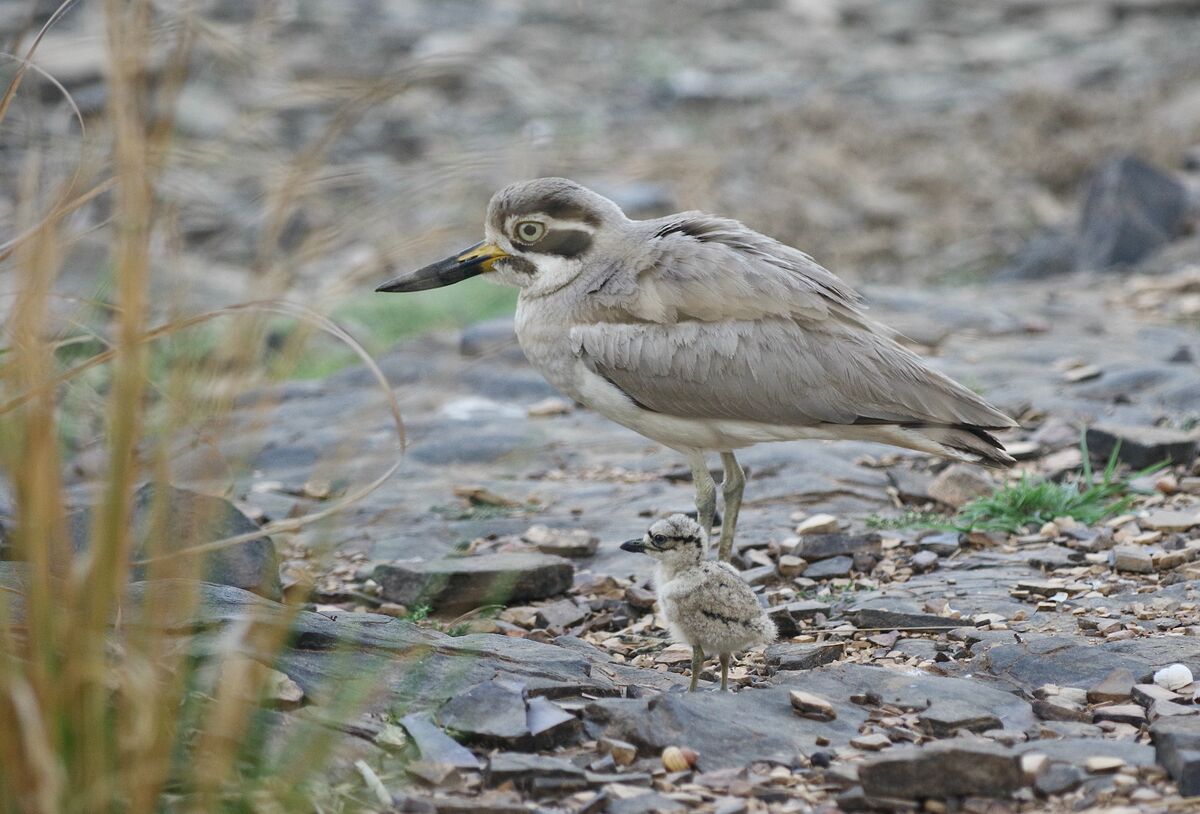
As the sun was getting closer to the horizon we stopped at the biggest lake with the fort at the back drop. Around here we had several Spotted Deers coming for an afternoon drink as well as this handsome Black-winged Kite. The last bird before leaving the park was this day roosting Indian Scoops Owl.
If interested in all bird sightings, you can check it up on my profile at Ebird. ebird.org (Leryd24, Leif Rydell)
Bye bye India!!
India part 2, northern Himalayas.
This is the next section in my travel blog from India. Part 1 is describing Sattal areas in the southern part of the Himalayas. During this part of the trip my close friend Nick joined me. He was here to visit some places where his family used to live back in time. This part will give the story of two other destinations in this part of the Himalayas. Pangot and Chopta. Pangot is less than 2 hours from Sattal with car but on a higher elevation. Sattal is at around 15-1600 meters while Pangot is at 19-2300 meters above sea, depending on where you go. This means other species specialized for this altitude will be possible. We stayed at the cosy Jungle Lore Lodge which is placed well in the forest and some scattered open areas with a hide.
The restaurant here is very good with excellent food. I asked for a guided tour in the kitchen with the chef as I do like to cook myself. I spent about an hour looking and writing down his secrets. Here also a photo with my close friend Nick on the veranda with a cup of afternoon tea and our excellent guide Mahesh in the background (with a cap).

Birds easy to see here are the Black-headed Jay and Oriental Turtle-Dove which have visited Sweden a few times.
If you want to explore the area and see most of the birds possible, you need to have your own car or hire a guide through the lodge. We did the latter and had the young but excellent Mahesh who took us around for two days. The first of these days we travelled up to Cheer Point where just Cheer Pheasant sometimes can be seen. We didn't see it but we saw a pair of Koklass Pheasants. The road is very narrow and as I suffer from heights, I had to put some energy to concentrate on that. This part was also hard to take any photos on as they were either rather high up on cliffs or further down the slopes. Superb birds but with no photos were Black-faced Warbler, Pink-browed Rosefinch and Altai Accentor.
On the other side of the valley we walked through some areas where we saw some more good birds. Especially this Grey-crowned Prinia, which is quite rare and made our guide very excited as he only sees it occasionally. One more pic from the lower valley of me and Nick as well.
The second day we drove towards the famous touristic town Nainital. Here we saw quite a few new birds. A true mega bird for the area, the Vinaceous Rosefinch, had been present here for a month or so. Normally a more eastern bird, it made twitchers and photographers take the trip here just for this bird. This is in a very poor and dirty area and though I saw less of poverty than expected in India in general, we had it here. Also a very poor picture, mostly here as a memory.
Still some good birds to spot among all social disaster and rubbish. Here two of the most beautiful laughingthrushes, the Striated and the Chestnut-crownwed Laughingthrush.
At the lodge there are 2 families of different monkeys, sometimes arguing with each other and sometimes seem to live peacefully together. Here a mother and baby of Rhesus Macaque and Terai Langur.
The last day here before we prepared for our long trip further north towards Chopta, we took a walk by ourselves to the old "hill station" .... which used to be a cool stop for travelers but also for resident people at lower levels. The house is still there but probably not used. Up here we had our first views of the Himalayas far far away. The sky was decently clear this day but the pollution in the valleys is obvious at some spots. On the way back we had great views of this Rufous-tailed Niltava.
After these awesome 4 days we started our trip towards Chopta. actually Chopta is just a couple of houses high up in the mountains and most birders stay in Mandal which is lower down in the valley near a nice river where some of the best birds can be seen. The trip was arranged via Birder's Den and our guide was again the gentle Trilok. The drive up here is about 9-10 hours though only 320 km in length. On the way up you will do several stops both for stretching your legs and look for birds. Here Trilok and Nick at one spot and one of my very sought after species, the Wallcreeper at the other picture. I have tried for this bird before in Spain and Switzerland with no luck. Far up on a cliffs but still a nice memory.
Just before we came to Mandal we stopped at a hotspot for Scarlet Finch. We saw it but not close enough for pictures but the Red-headed Bullfinch, Grey-breasted Canary-Flycatcher and Tickel's Thrush did to my joy. As did the surroundings, it's lovely up here with all the terraces and coloured houses.
The following morning we set an early start for Chopta. Weather was not as good (clear) as normal for this season and the forecast for our 3 full days up here predicted only a few hours of sun this morning. If I should be able to see the Himalayas closer than in Pangot, it had to be this morning. On the way up we stopped at Monal Point which is the best (only) place to see this magnificent bird for the region, the Himalayan Monal. In total we saw 8 of which 5 were males. Great moment.
We had no time to loose so we continued further up the mountain. As we rounded the las curve, we finally saw the impressive horizon of the peaks. Starting to get cloudy we didn't get the total panorama but still a moment I have dreamt of for many years. An other fascinating thing about this area are the forests of Rhododendron. In Sweden we have these in our garden but normally at heights between 50 cm to max 2 meters. Here there are forests with trees that reach 8-10 meters. You can see a smaller tree next to me on this picture.
The roads are very narrow in places just hanging on the edges of the cliffs. Some with broken road fences! The few houses of Chopta.
We went back towards Chopta, which I have explained before, is just a few houses. Here we enjoyed a local breakfast in the local primitive way. Temperatures in the morning just a few degrees above zero.
Mainly a bird trip, I truly also enjoy animals. Up here you can see Jackal, Himalayan Thar and in the deeper forested areas also Sambar.
Obviously, we also had some excellent birds up here. Among these were: Ashy-throated Warbler, Alpine Accentor and the lovely Mrs Gould's Sunbird.
More birds in the upper parts were Himalayan Woodpecker and the awesome White-collared Blackbird in a Rhododendron tree!
We had luck to come close to a pair of Koklass Pheasants here as well.
The most spectacular part of this region is of course the higher parts, especially when it comes to the nature scenery. However, Mandal is very good for some highly wanted species. In the river that flows right through the village you should quite easily see Little Forktail, Spotted Forktail, Crested Kingfisher and Brown Dipper. Never got close enough for a decent photo of the Dipper but the other 3 were more cooperative.
In the river itself or on the rocks next to it you will have no problem seeing 2 stunning Redstarts, The White-capped and the Plumbeous Water Redstart. Decently easy also in Sattal, I came closer to them here.
Well, all things end at sometime. It was time for us to return back south. Nick to meet his brother for the "family history" trip and me for the next part (beach and tiger).
Total amount of birds seen in Pangot and Chopta area was 176. Some of these were obviously also seen in Sattal. The total amount for the whole Indian trip, Sattal, Pangot Chopta, Goa, Bharatphur, Corbett and Ranthambore was 290. The last 4 places will be described in part 3.
India part 1, southern Himalayas.
1st of march (2023) I went to India for 38 days. This was a special trip in many ways as I travelled alone and purpose was not only to do birding/ wildlife watching. India has been interesting me for many years and I also wanted to go there to "feel the essence" of this, in many ways, dramatic and complex country. I also had two dreams that I wanted to fulfill, seeing the peaks of the Himalayas and see a wild tiger. The first part is about my first 12 days which was spent in Sattal and vicinity (Birder's Den).
I landed in Delhi and spent the first day there for a classic sightseeing tour. I saw the most popular sites, for example Qutub Minar and the big and quiet Lodhi Garden with many Black Kites flying around the different fort buildings just before dusk.
I made quite a few trips by train which was a special experience. It had expected rather high quality in the 1 class wagons but it all felt rather simple. It was also quite uncomfortable with the beds as seats. Most trips I took were during the nights. Here a picture from Delhi major city terminal.
In the morning I arrived to Kathgodam and was picked up by Trilok who is working at Birder's Den, which is the main birding lodge in the Sattal area. Sattal is a hot spot for the lower parts of the Himalayas and most birders stay here a few days during their trips. I stayed for 10 days and it is a great place to see the best birds. You need to go to different places though, so if you don't have your own transport/ guide you need to hire Trilok at the lodge to take you around. The view is from my room.
There is a hide just at the lodge and many people stay most of their time there. Photographing has become so popular these days and many visitors are not birders in the general (old) way. Obviously I spent some time there as well. One of the star birds is the Kalij Pheasant which shows up every day to our delight. Here the male and the female.
The lodge has some surroundings (not big) where you can walk by your own and look for passarines which are resident but also migrants passing through. Birds nesting right in the garden are the very handsome Black-throated Tit and the ever present Himalayan Bulbul.
My first afternoon here, I started a walk down the mountain towards Sattal village and Sattal Studio Point by the small lake. The distance is much longer than expected and it took a while to get there. On the way down I meet a few active photographers. They were watching a Scaled Thrush in a slope. This bird is very shy and also almost impossible to find on the ground if you don't know exactly where it is because of its camouflage. Even a "brown" bird can be attractive!
I finally reached the studio but activity was quite low so I walked a little bit further before I went back. On the way back I started to feel sick and my stomach got more and more upset. Totally exhausted, I finally reach back home and made it to the toilet before hell broke out. Apparently I had got the infamous Delhi Belly. The next 36 hours were spent in bed with a few exceptions to make it to the dining hall for some rice and bananas. This stomach infection continued all 5 weeks though I went to different doctors. The good thing in this story is that I still manage to complete my plans every day, though quite tired some days.
Good to know that one of my true favorites during the trip, the White-throated Laughingthrush, made every day joyful. This bird is so funny with its very special sounds and social behaviour. It needs to be experienced to make justice.
Even though not like South America, this garden and adjacent areas are full of interesting birds. Here the common Grey Bushchat and Red-vented Bulbul.
Also common at the lodge and also sometimes at the hide were Great Barbet, Grey-winged Blackbird and Blue Whistling Thrush.
At the hide you can see around 20-25 species in a good day, depending on weather and time of the year. 4 woodpeckers frequently visit the hide. Here Greater Yellownape and then Grey-headed. The Grey-headed WP is very common and unshy here in contrast to Sweden where it is both shy and rare.
Other frequent birds at the hide but also in the garden are the very social and noisy Plum-headed Parakeet, the attractive White-crested Laughingthrush and Grey Treepie.
For many photographers, the colourful Red-billed Magpie was a mega bird and you could hear all the cameras taking pics in great numbers.
One evening there were a lot of flies which have just been hatched and they became a dinner party. On the lawn just a few meters away we all enjoyed Streaked Laughingthrush, Green-backed Tit, Blue-winged Siva (Minla), Red-billed Leiothrix, Russet Sparrow and as the strawberry on the cake a fabulous Slaty-blue Flycatcher.
Other nice species seen most days here were the strong coloured Verditer Flycatcher and striking Mountain Bulbul.
On day I hired Trilok to go birding further south, down the mountain where other species would be possible. I saw quite a few new species and among them the powerful Steppe Eagle and the absolutely smashing Crimson Sunbird.
If you go to Sattal, Chaffi which is a smaller village/ area about 30 minutes away with car, is a must. There's a stream here where you can see 2 Forktails, Chestnut-headed Tesia and many more. The Tesia and the Forktails are two of my favourites from this whole trip but light was poor in the creek so I didn't manage to get any decent photos. However I got good photos in Chopta of Forktails which is described in that blog part. Brown-capped pygmy Woodpecker, Black-throated Sunbird and Whiskered Yuhina were cooperative enough for photos though.
I will finish this part one with the most wanted bird for this part of the trip, an absolute stunner, the Himalayan Rubythroath, which stayed a few days in the village close to a lawn.
In this region I spotted 97 different species.
Next, part 2: Pangot and Chopta further north and higher altitude.
Argentina part 3, Patagonian coast
Our last part of the trip was a 2,5 day trip down to Rio Gallegos in the far South East (not as far as Ushuaia) but just two hours drive from the Chilean border. The reason to go here is hardly because of the high presence of many species but the high value of the one possible to see. On my shorebird list I had 4 (5) new birds that normally should be decently easy to see. I only saw two, the two Oystercathers down here, the Magellanic and the Blackish. The number two bird on my most wanted birds, the unique Magellanic Plover was not seen which was deeply disappointing. Normally a flock of 20-50 birds winter here every year so I was more or less certain to see it. But no, there were not here. There was two flocks in the vicinity but one of these at a restricted area and the other a little bit too far away from our planned route. The other one I was hoping to see was the White-bellied Seedsnipe which is restricted to this part of the world but also these were not seen at the expected sites.
Anyway, our third guide Emanuel Tiberi, a local guy picked us up in the early afternoon and took us to his home so we could change some clothes and have a quick coffee. Emanuel knows the area and the birds well and did his best to give us a good birding moment.
We had seen the Rufous-chested Dotterel the first days but all these were in non breeding plumage so it was a good feeling to spot a few almost fully in their awesome summer plumage. Very common and very handsome, the Upland Goose where the male is the white one and the female reddish.
This was also the place where to expect the Magellanic Plovers but birds were few here. I was still happy to see my first Magellanic Oystercathers, which are pretty common down here. The "beaches" or maybe just call them shore lines are in a special way very impressive and "massive". This old wreck (of Marjory Glen a British coal boat which was abandoned here after an accident) is a famous symbol for this region.
Down here the sundrops rather quick at this time of the year and we needed to go to our lodging which was a nice private apartment Emanuel had arranged for us. Next day was a big driving day as we had to go 360 km north to San Julian. This trip was needed for some special bird here, for me the Blackish Oystercather but for many the highly endangered Hooded Grebe. This is one of the rarest birds in Argentina and a major part of the population winters here (Puerto Santa Cruz on the way). All too far out for a photo we still saw a good number of them. Looking at them we also spotted the special Flying Steamer Duck, a pair of Crested Ducks and a handsome Southern Lapwing.
Our trip continued north and driving in this vast and very flat nature was in a way a special experience. Not many birds seeing during this route but we saw our only Lesser Rheas from this road.
In the early afternoon we reached San Julian which is very famous for the place where Magellan first came ashore at this part of the world during his "world tour". I have hard to understand that this tiny ship made it at this time! This is a full scale replica. Close to the city we also saw a flock of Chilean Flamingos which gives a strong colour experience.
The major target here was to go a little bit further north to one of the only small colonies of Red-legged Cormorant. This is probably the most handsome one of this normally rather boring group. As we came closer we also stopped at an old industrial building where we saw this local Black-faced Siskin and had some great views of the shore line.
We arrived to the dramatic cliffs where the colonies of cormorants are as well as this colony of (Southern) Sea Lions.
I have a problem with hights, especially when there are nature cliffs which I don't trust the surface on but in some way I managed to lean forward enough for some photos. Happily we saw 6 Blackish Oystercathers (a little bit too far away for decent photos but still a proof memory)here as well as a rock with all three species of cormorants possible here. The Red-legged, The Imperial and the Magellanic.
A few more photos of the vey special landscape here.
We returned to San Julian where we had a good hotel and meal before crashing in to our beds. Next morning we went back south and made a few detours to look for the White-bellied Seedsnipe which was not seen. A new bird of the trip was this pair of Black-chested Buzzard Eagle posted at an antenna. Here we also had close views of the Austral Thrush.
Realizing the trip was coming to an end we drove down to the harbour not far from the airport. Normally at this time of the year it is quite windy which helps to see birds like Southern Fulmar and Black-browed Albatross. Totally calm for three days made these birds more or less impossible. Nicer just concerning weather but worse for birding. At least we had some good looks of swimming Magellanic Penguins (they don't come ashore during non breeding) and close looks at a gliding Southern Giant Petrel. A great journey had come to its end. During 15 days, we had now been visiting 3 different major sites and in total driven more than 4400 km. We had also seen 295 different species of birds as well as some unique mammals. Not an extremely high count for South America but some very special ones. Now just a flight back to Buenos Aires and a very long one back to Europe was in front of us. A lovely and in many ways complex country with great nature and a mix of different cultures.





























